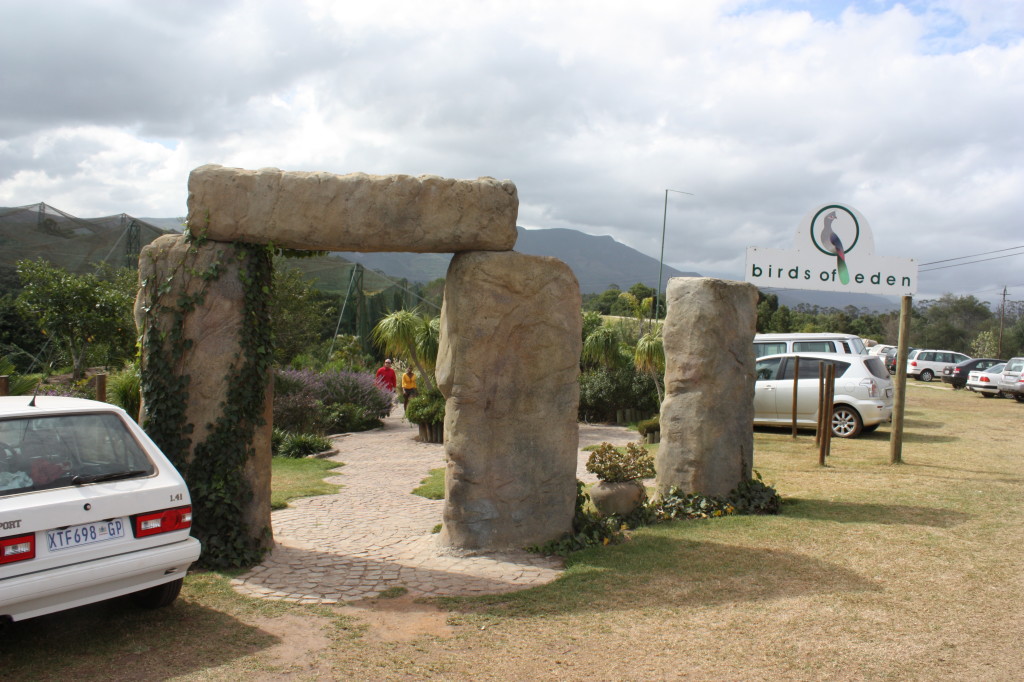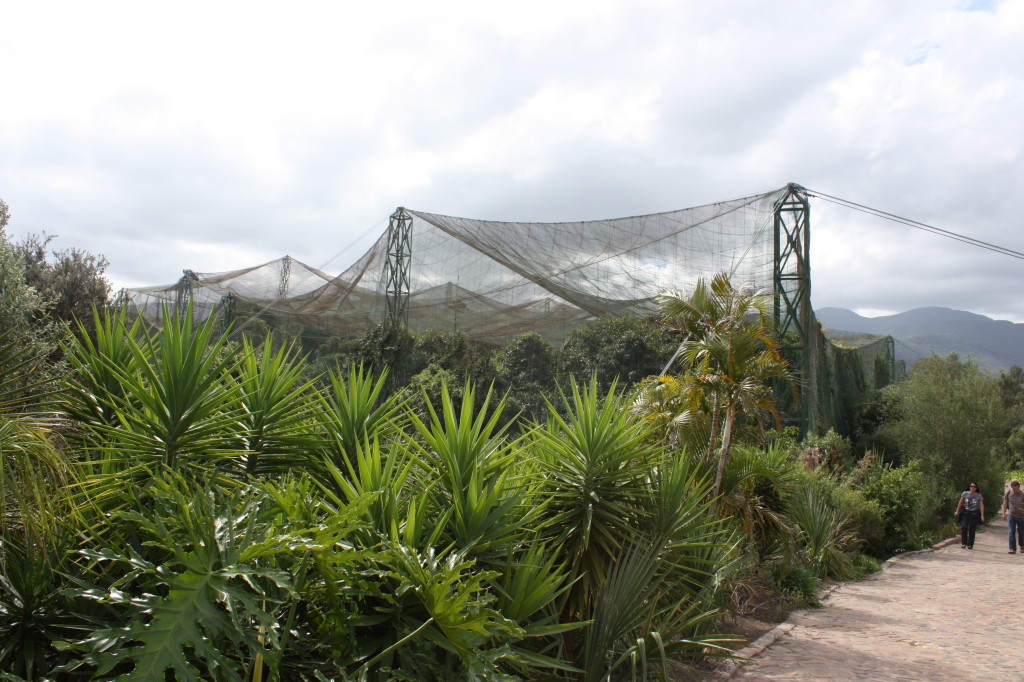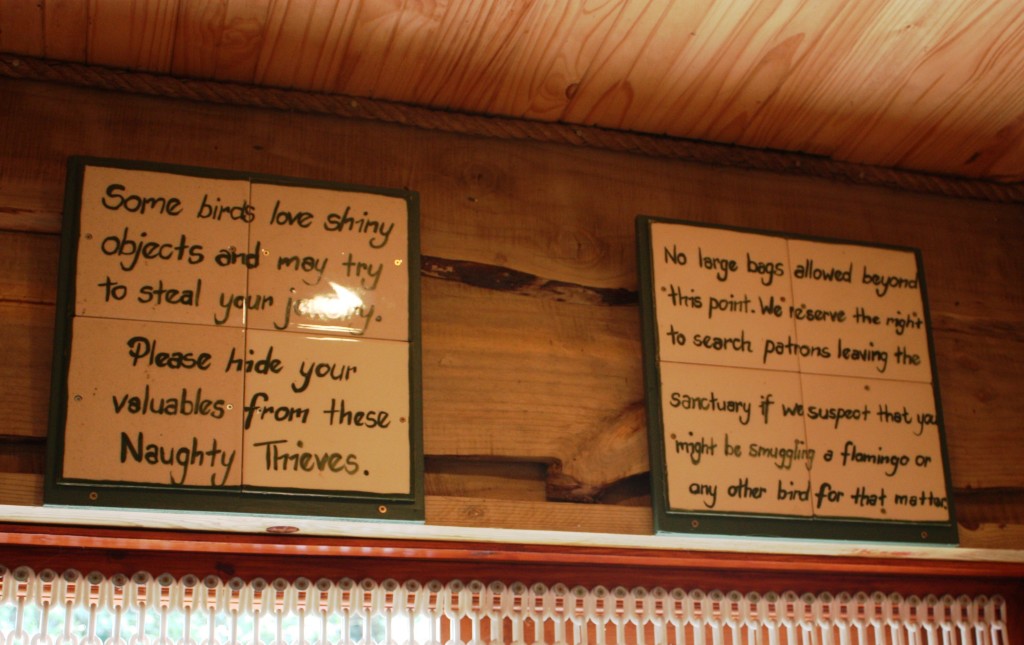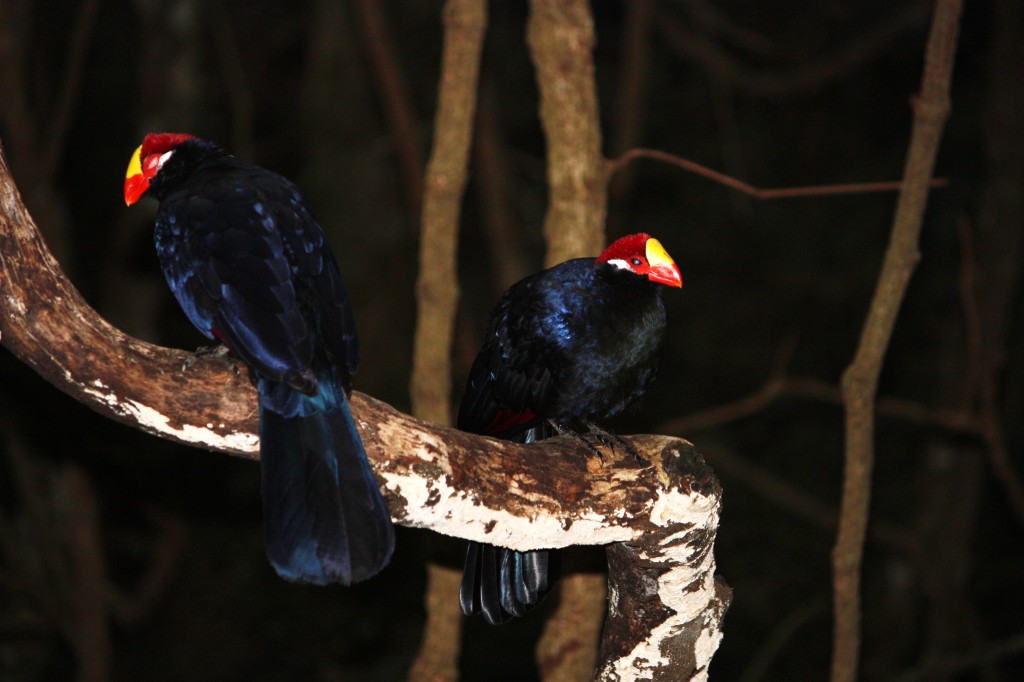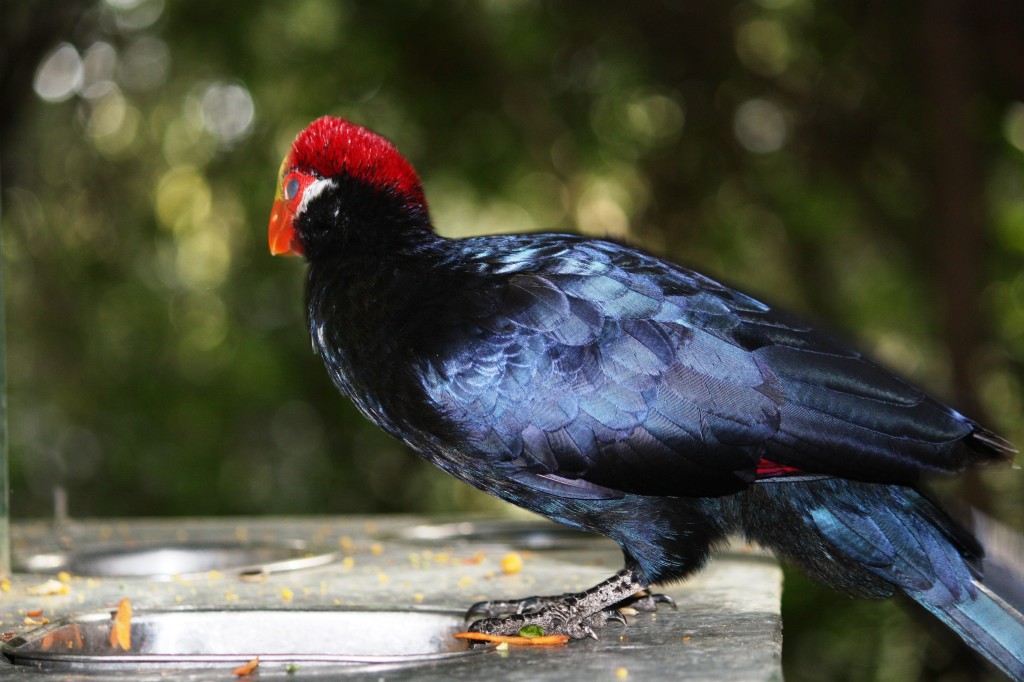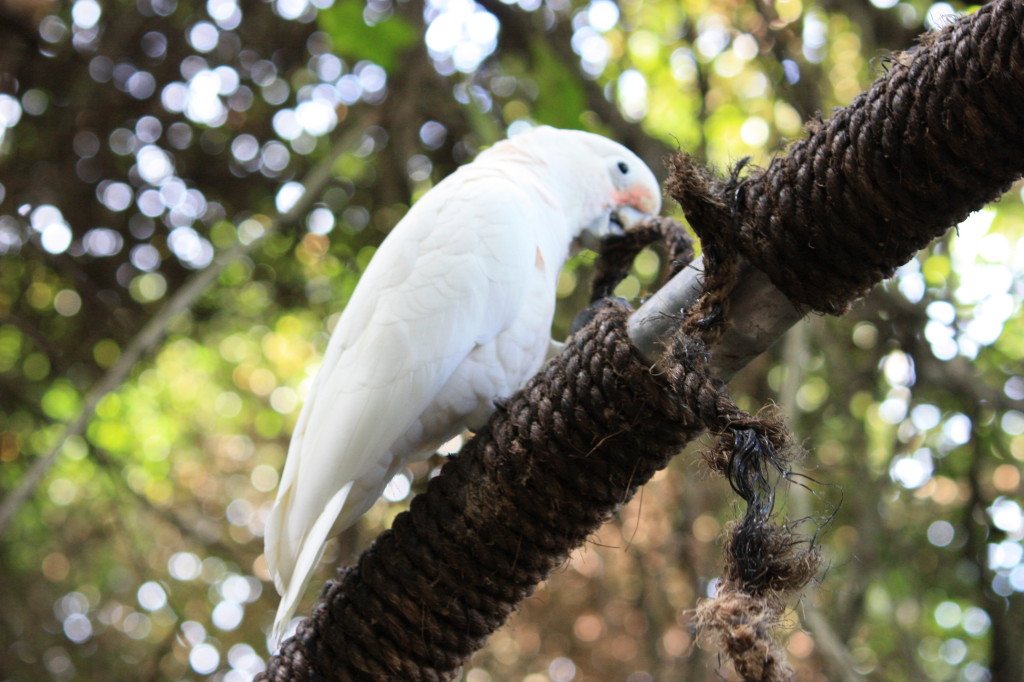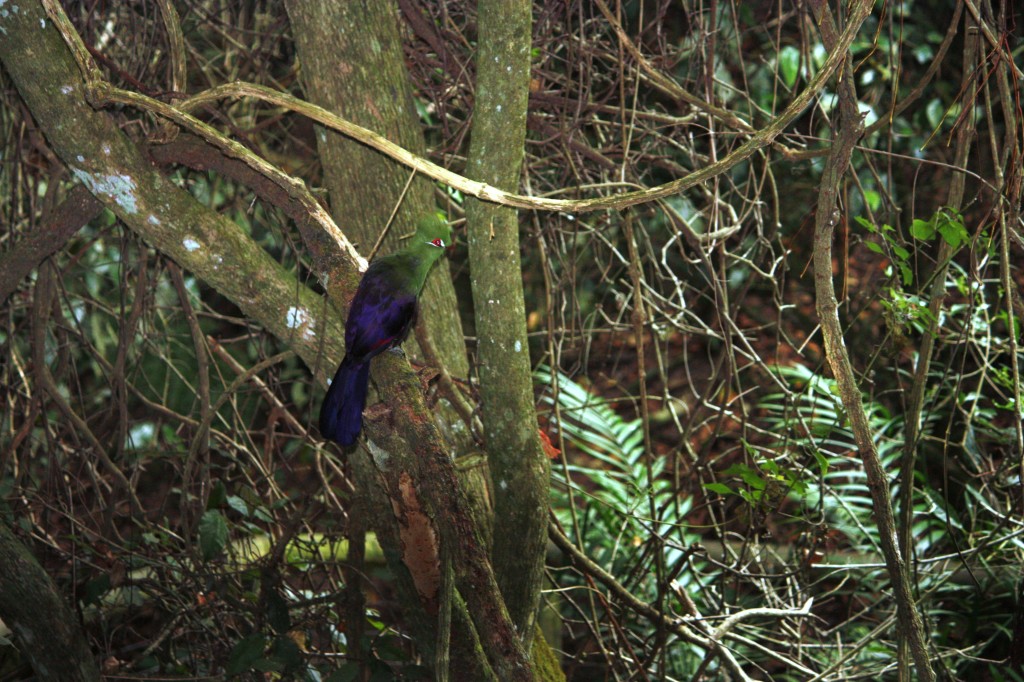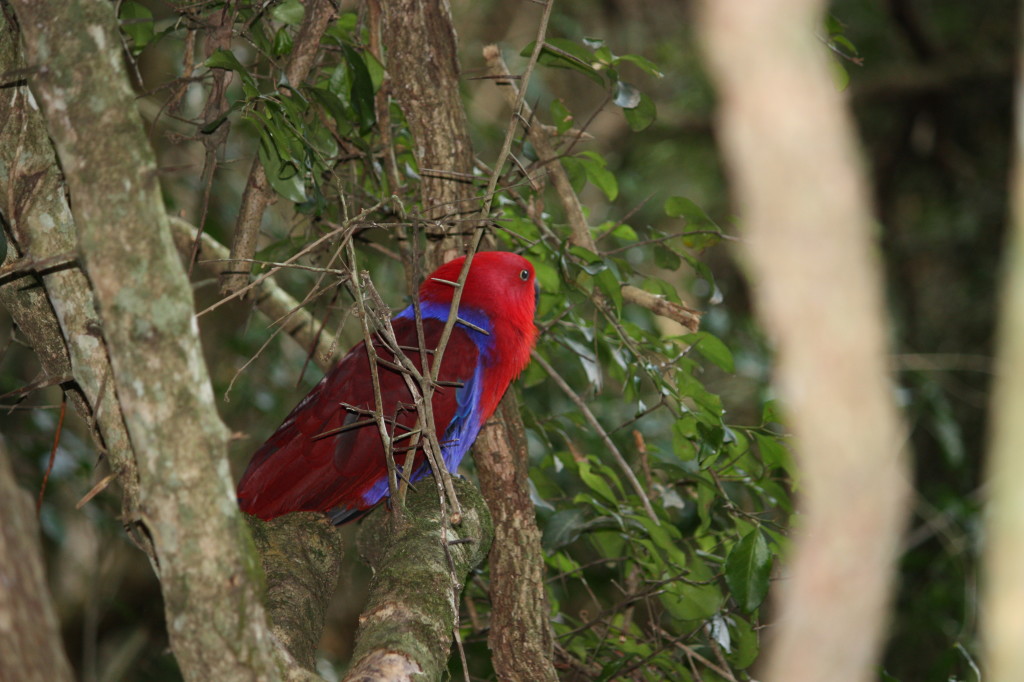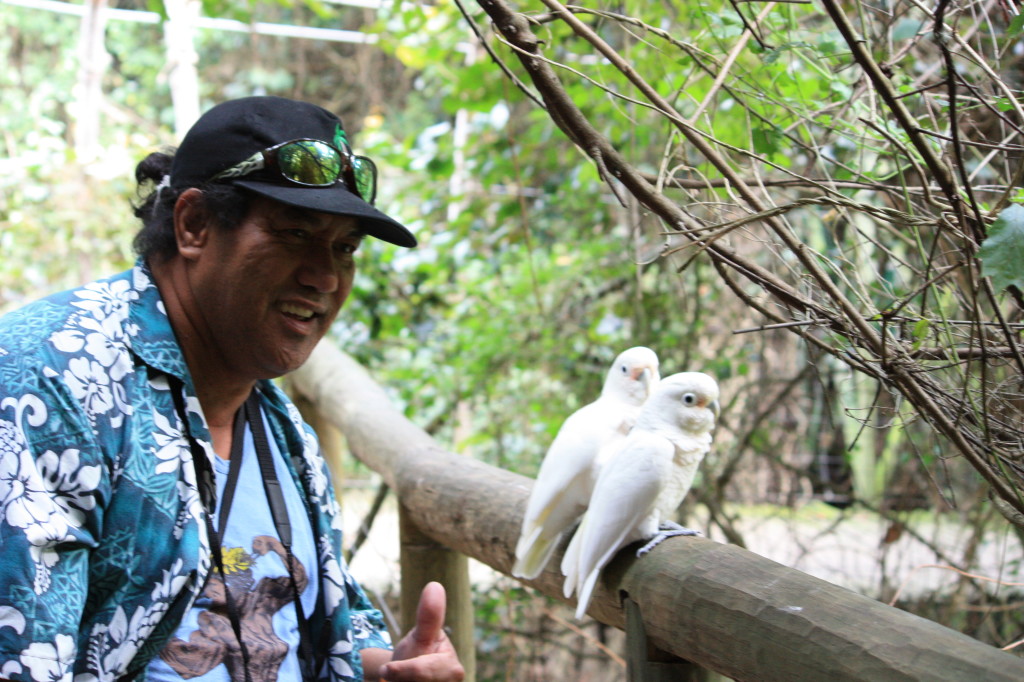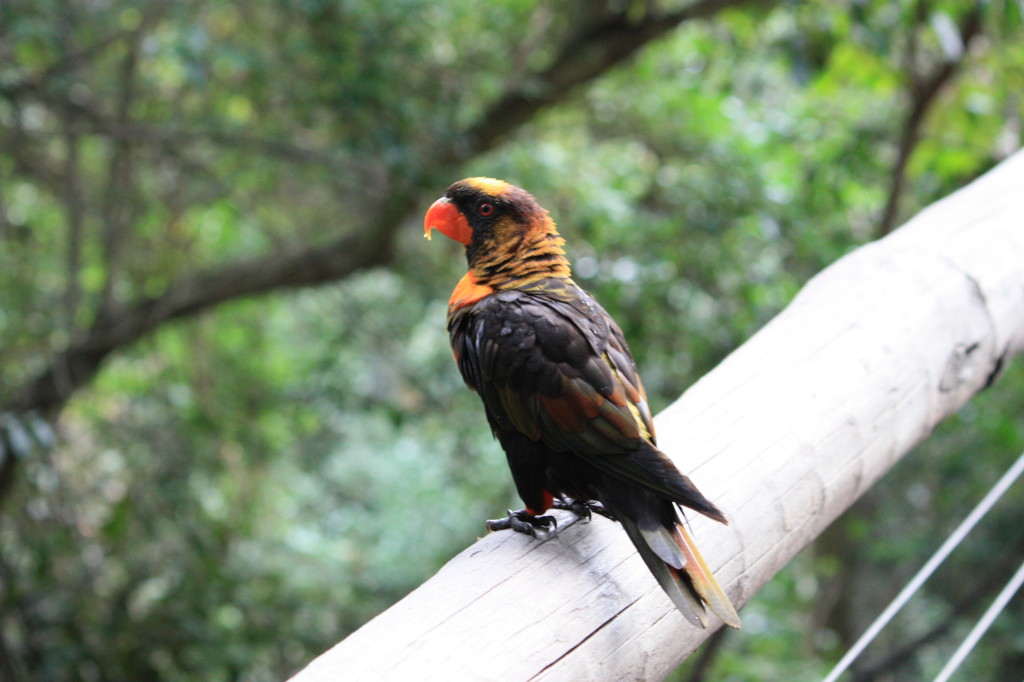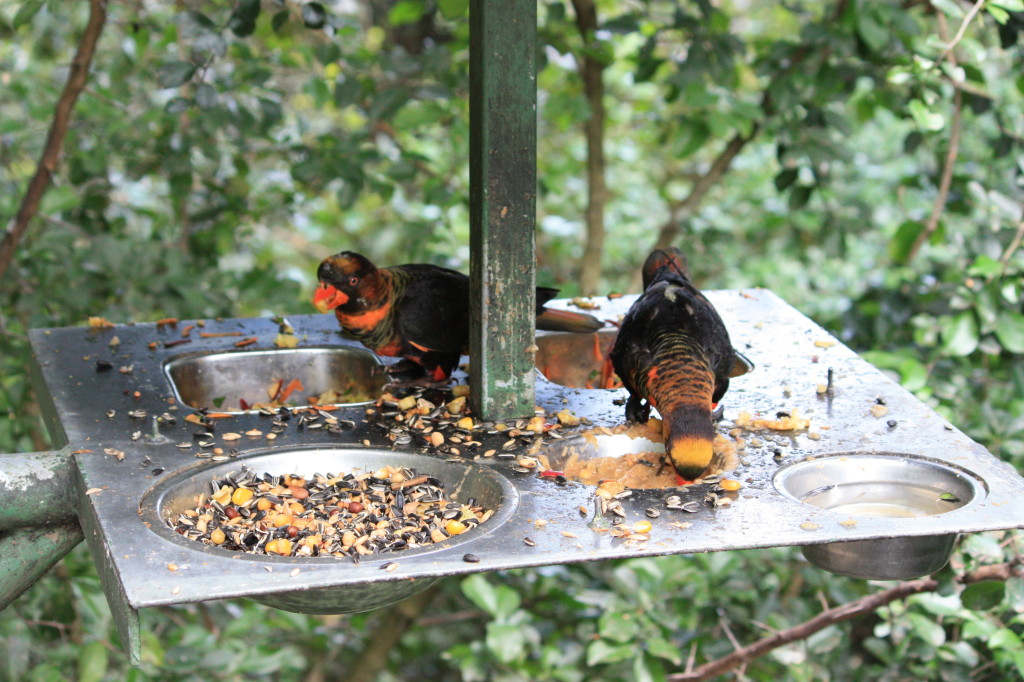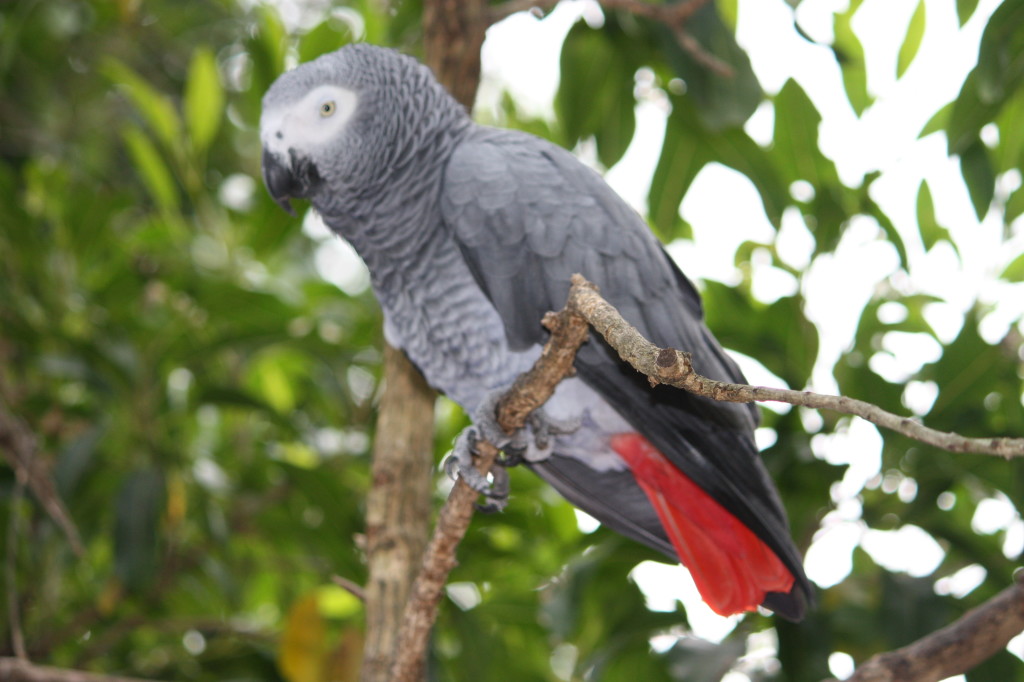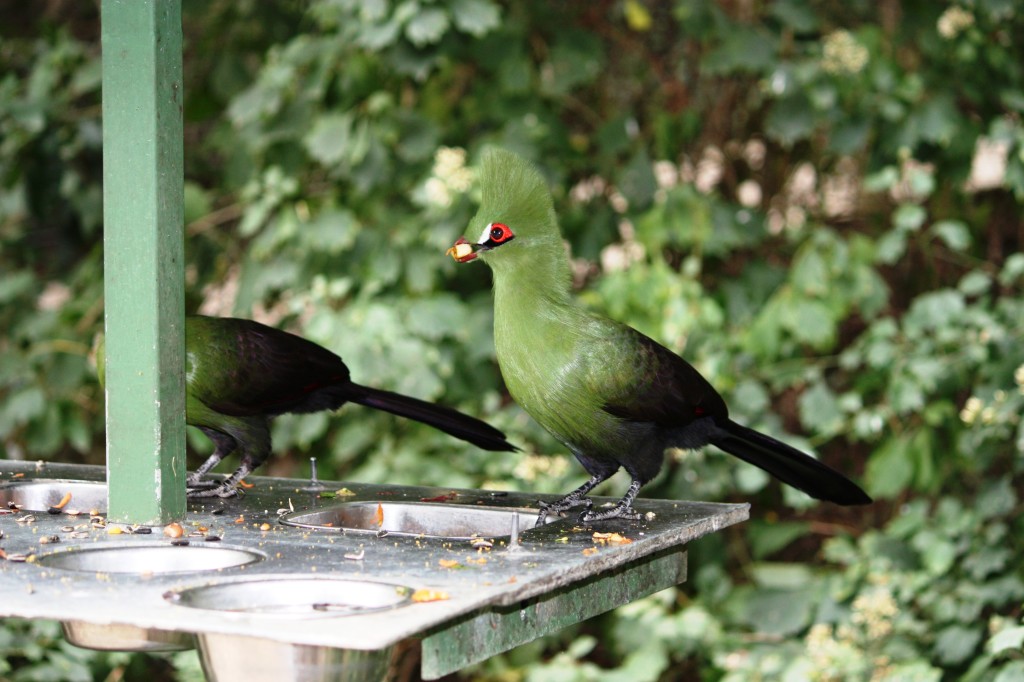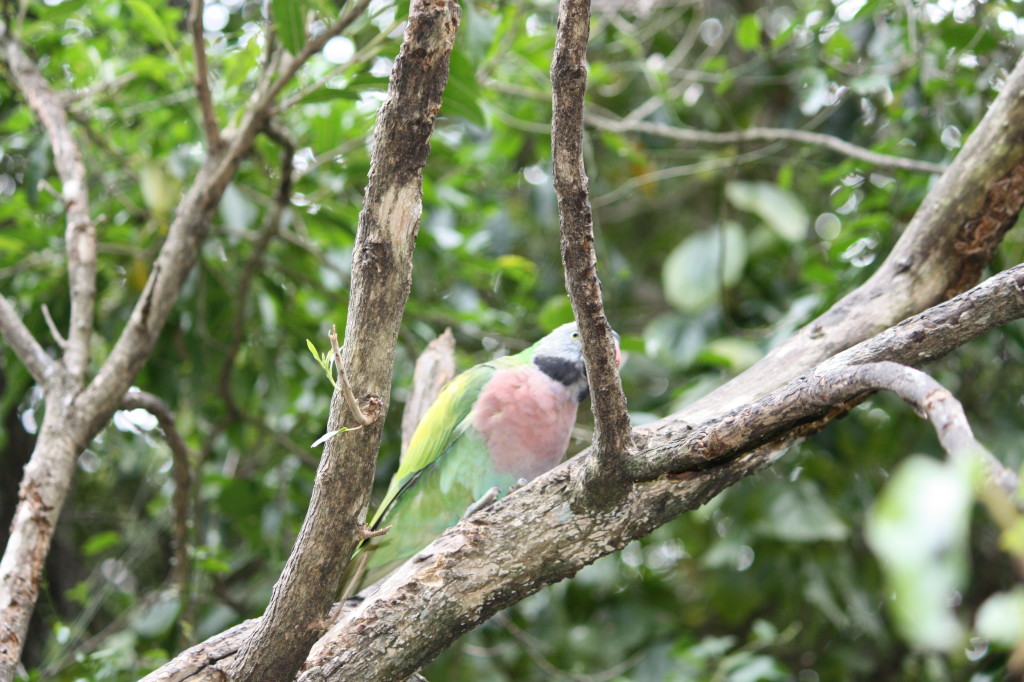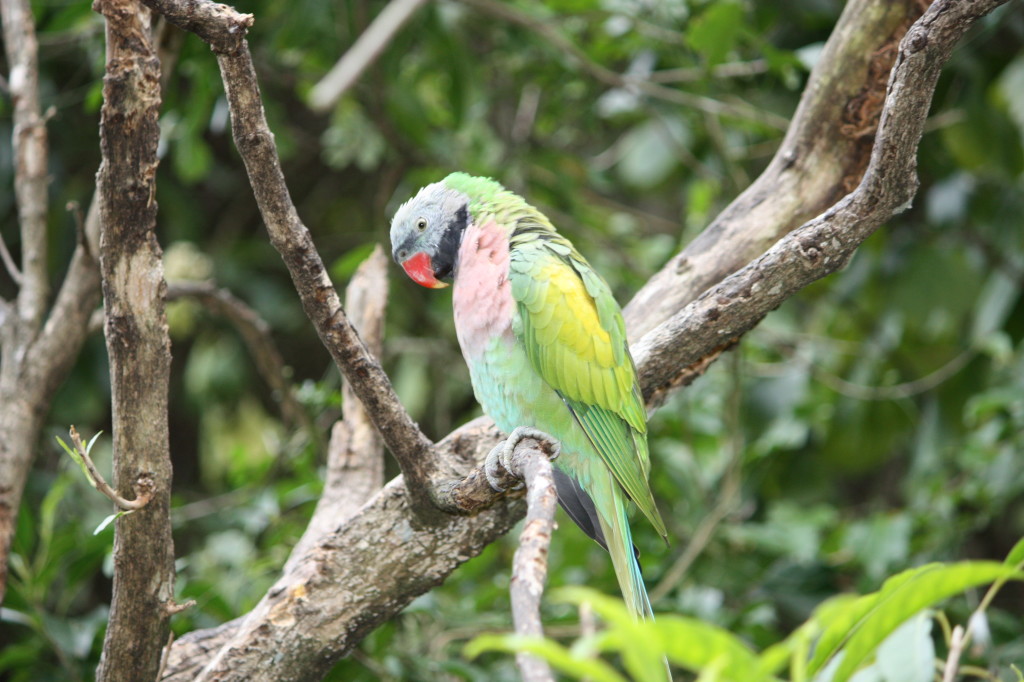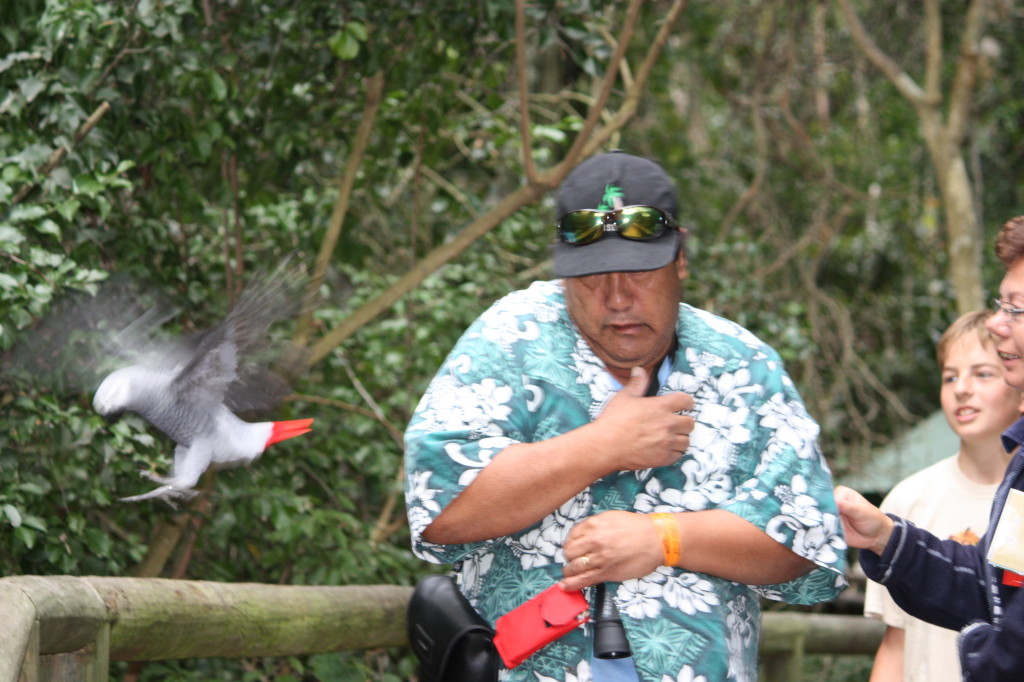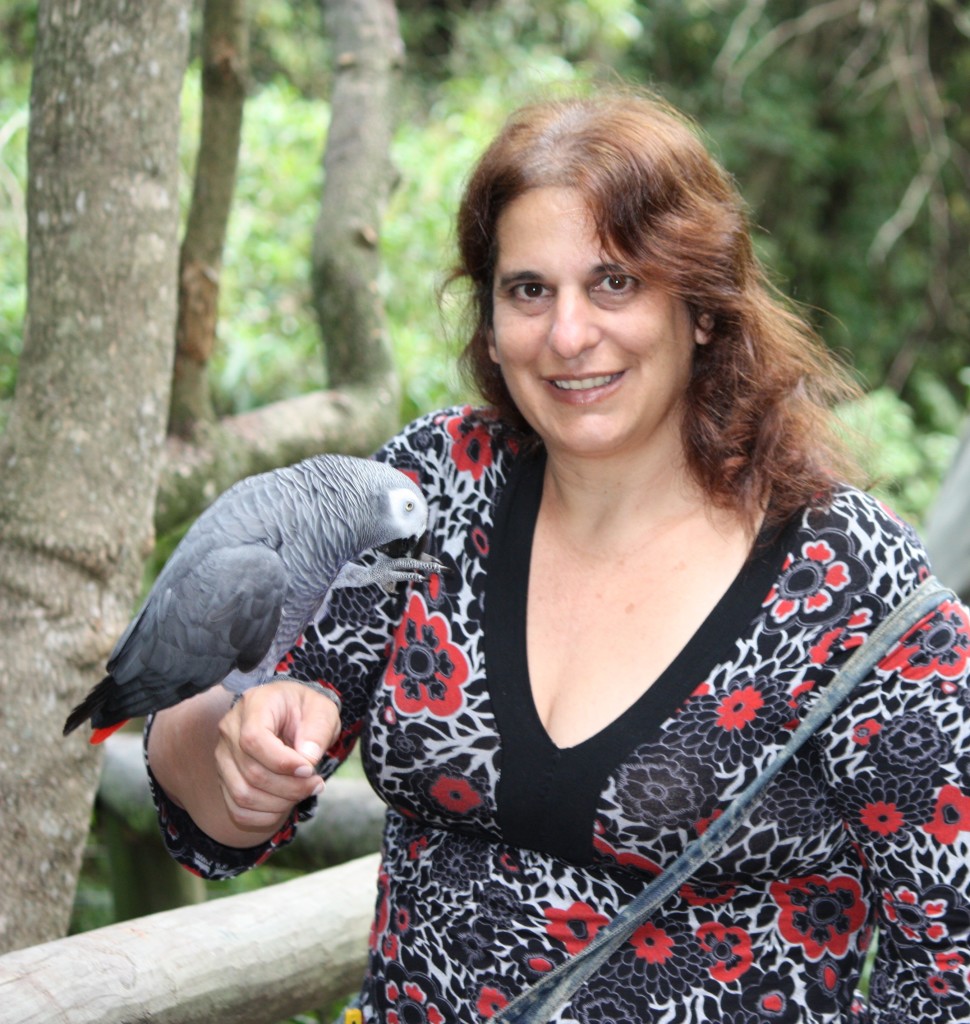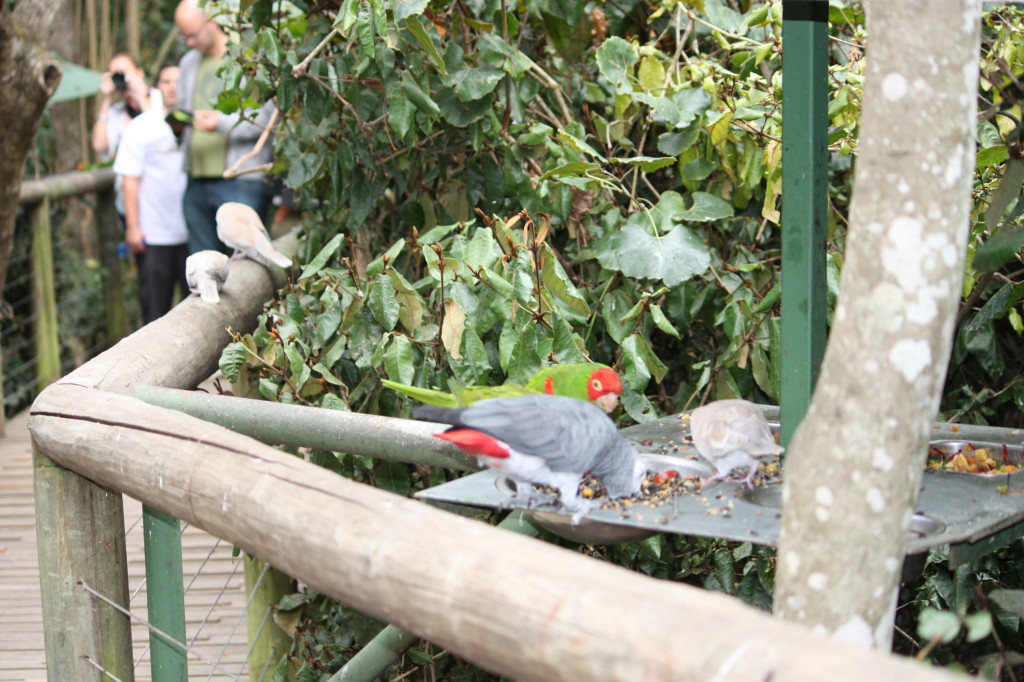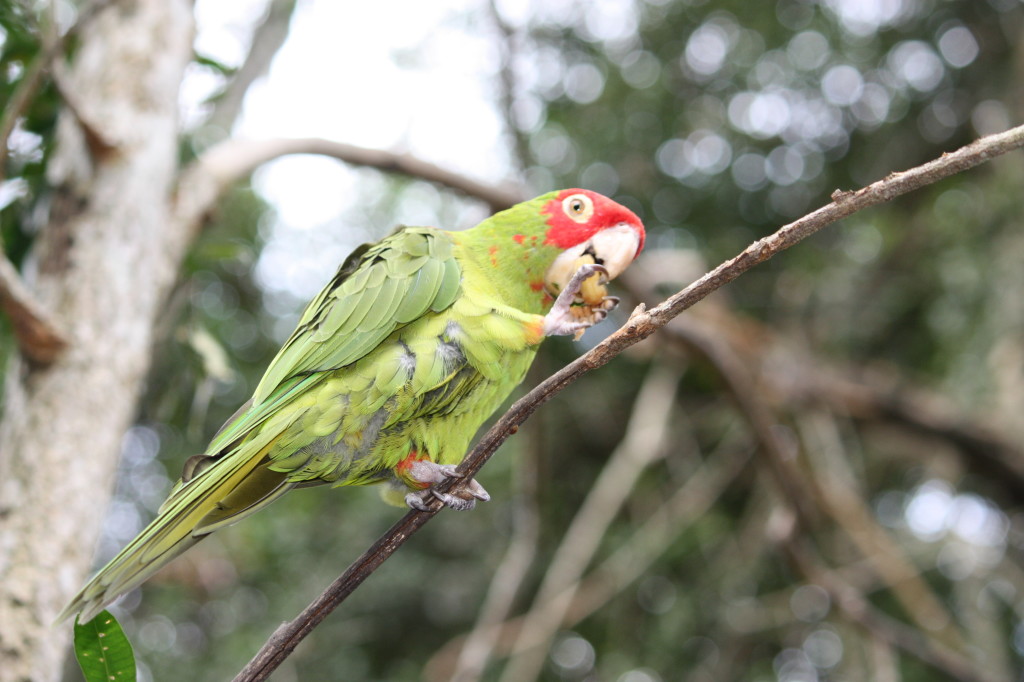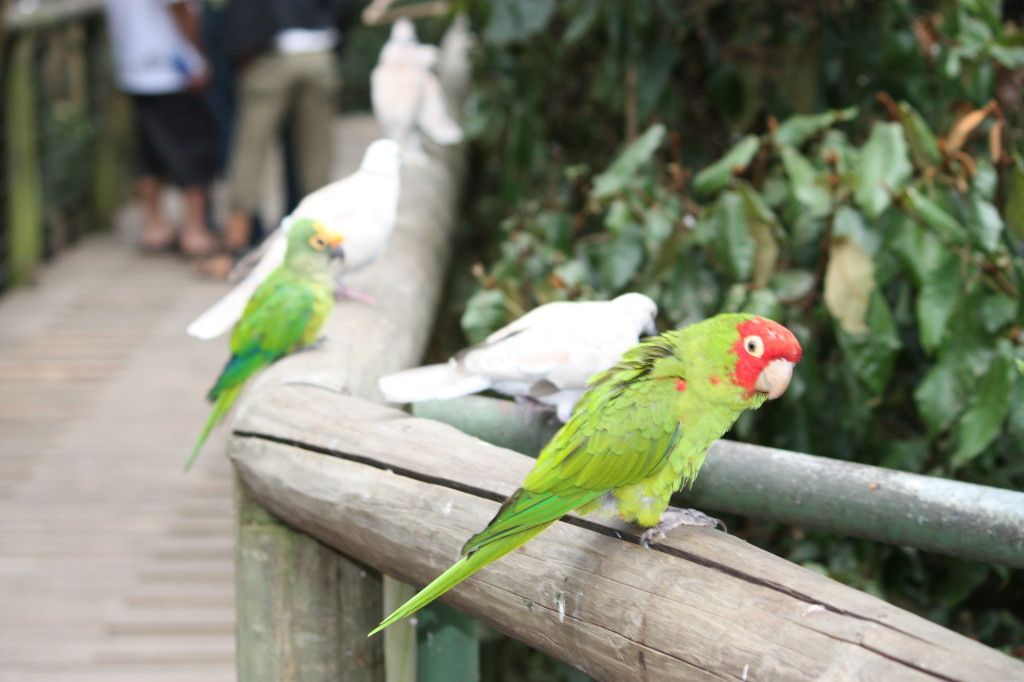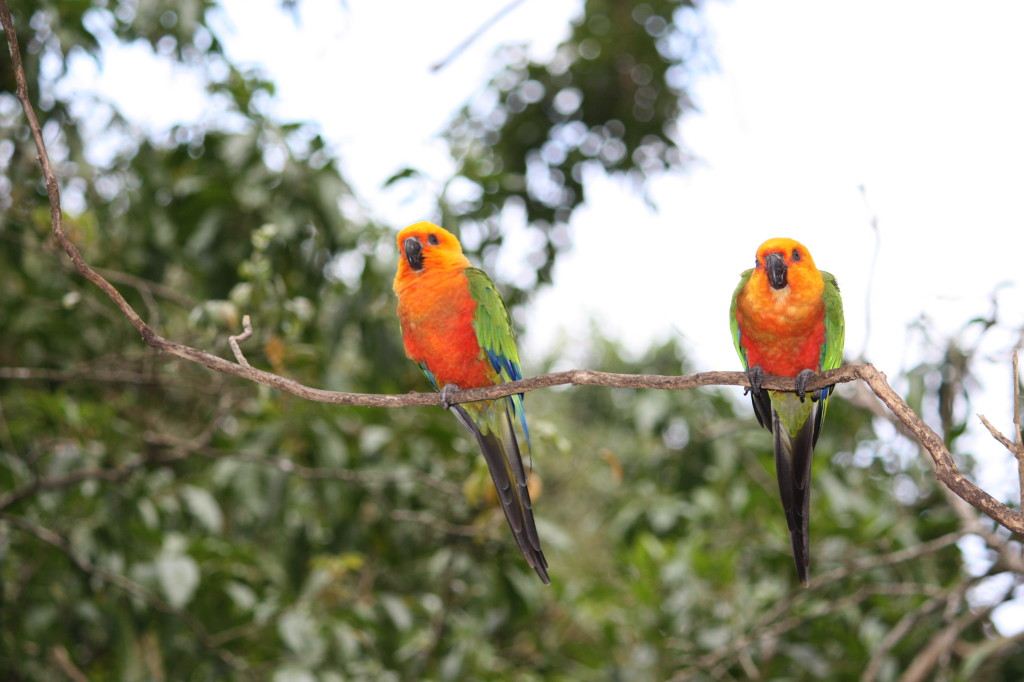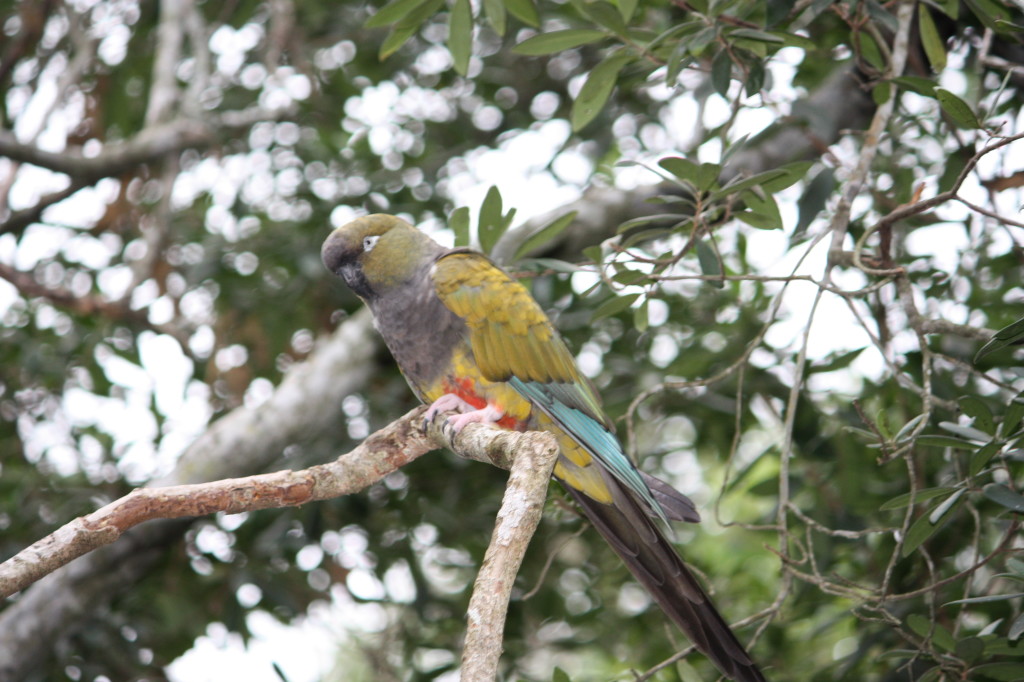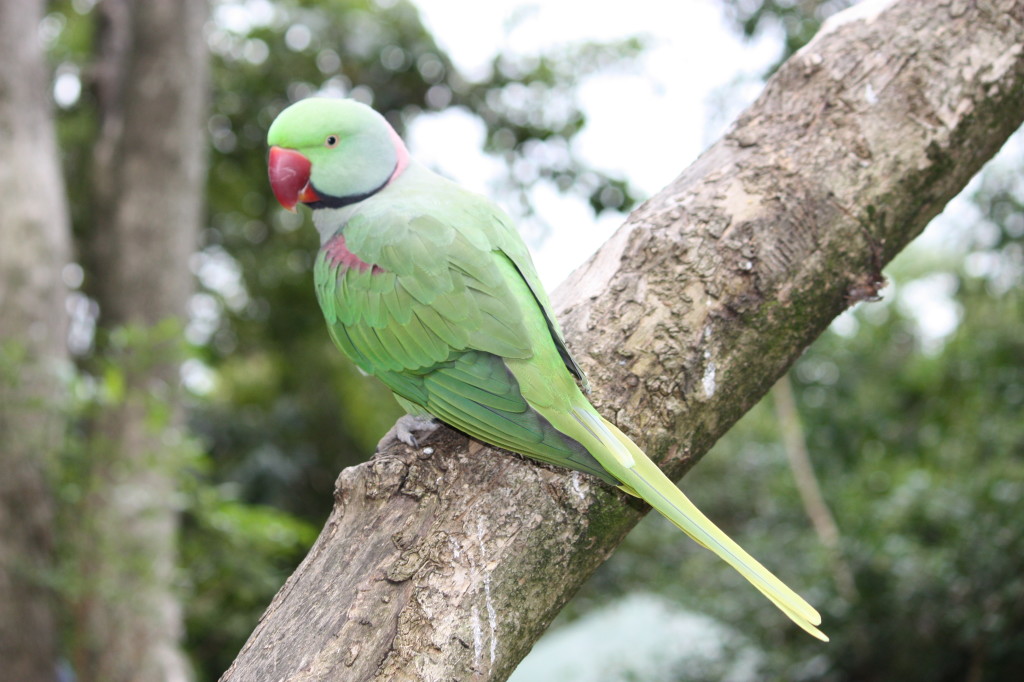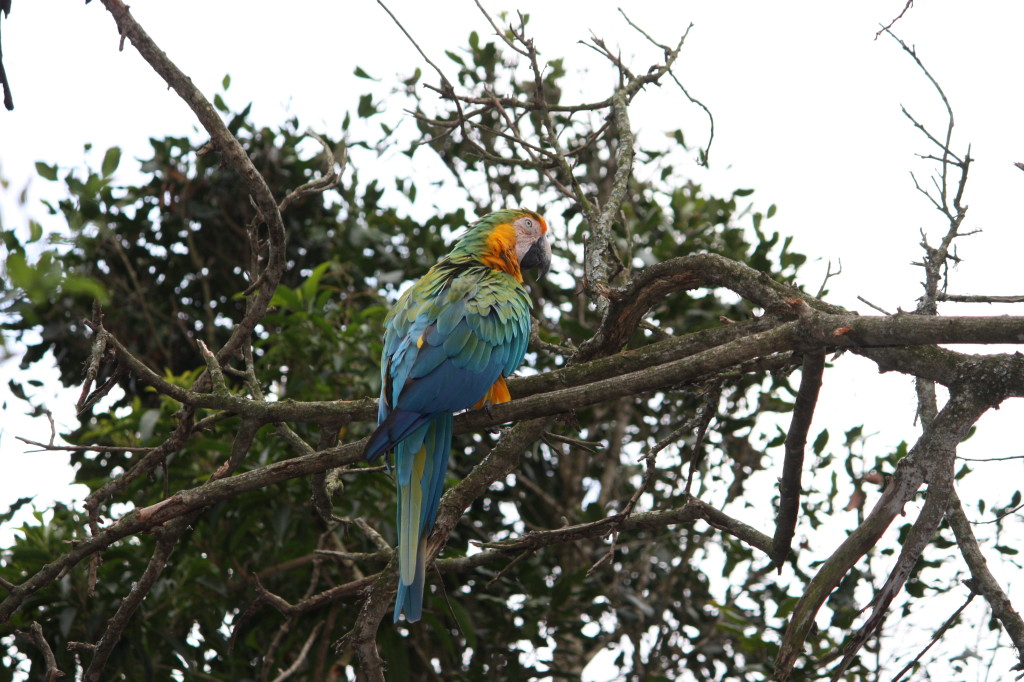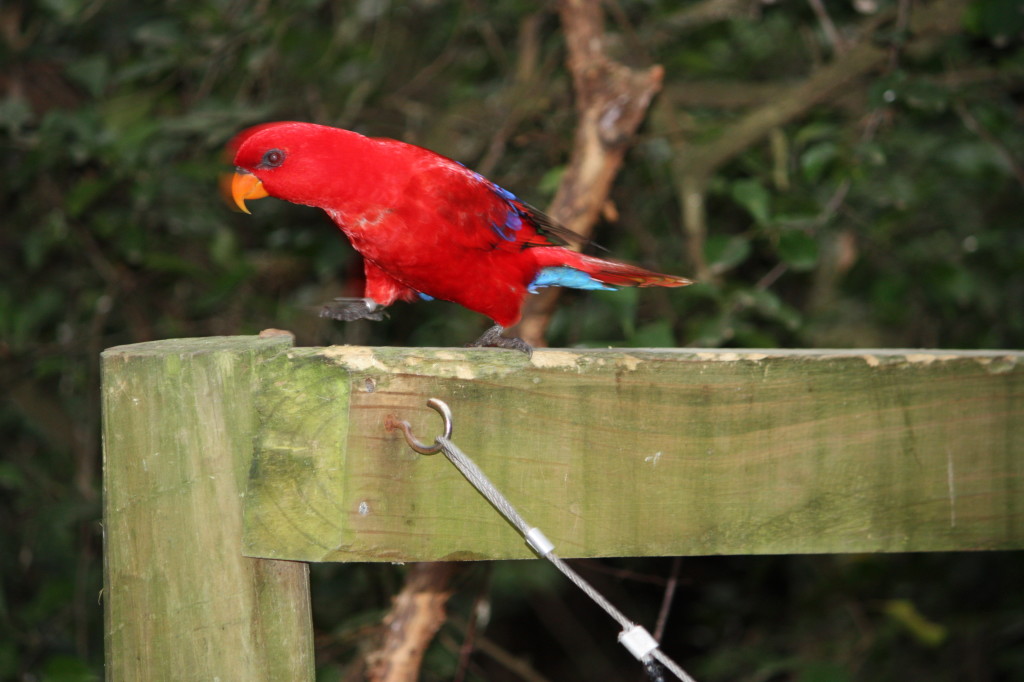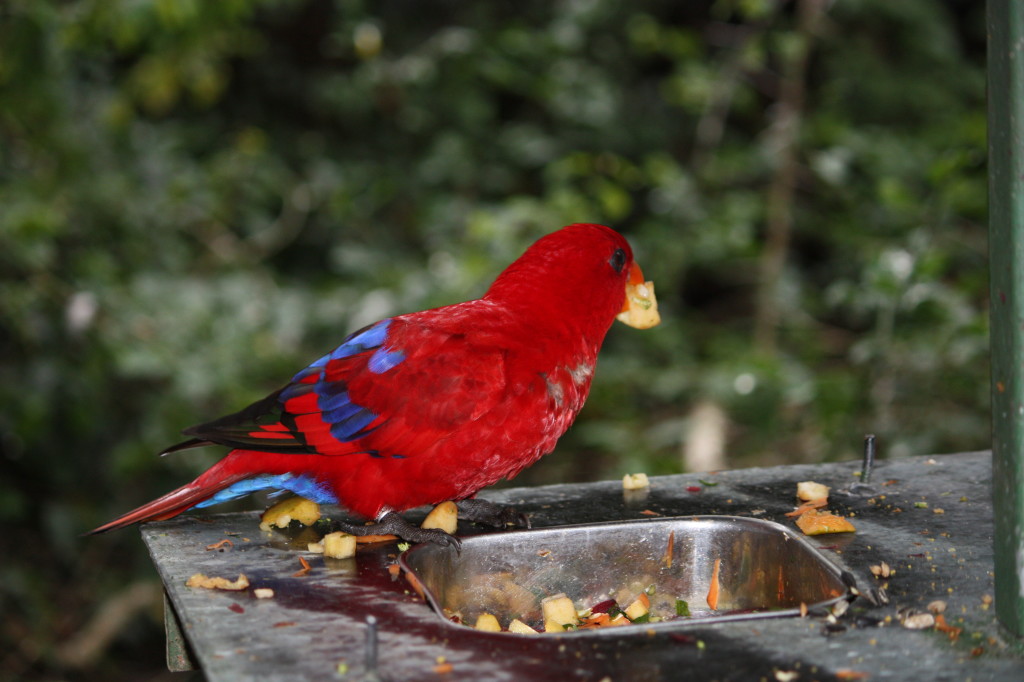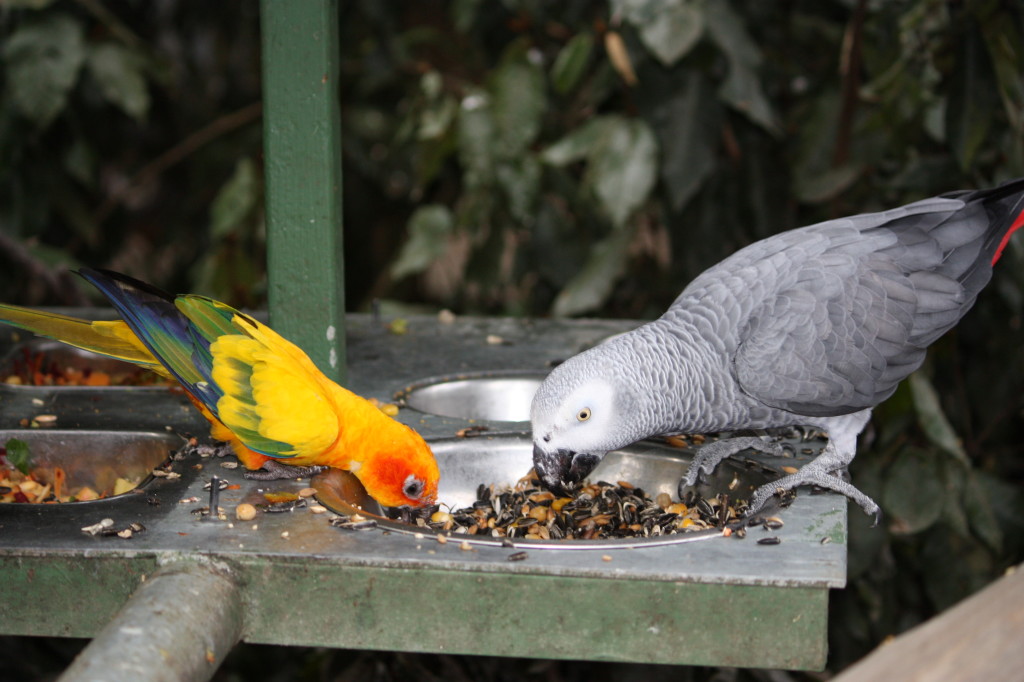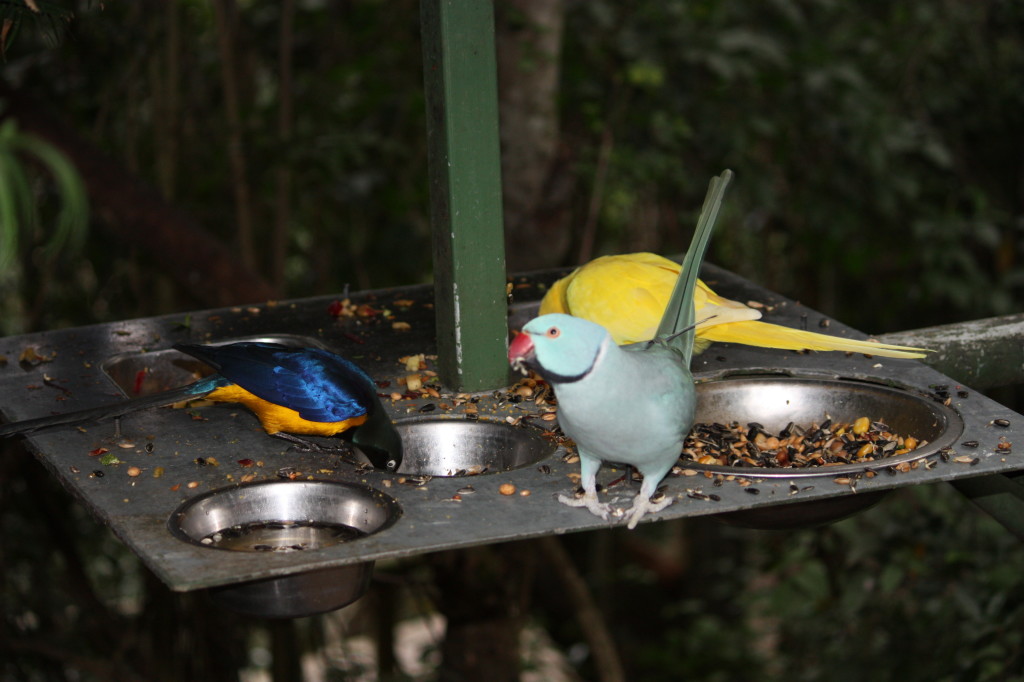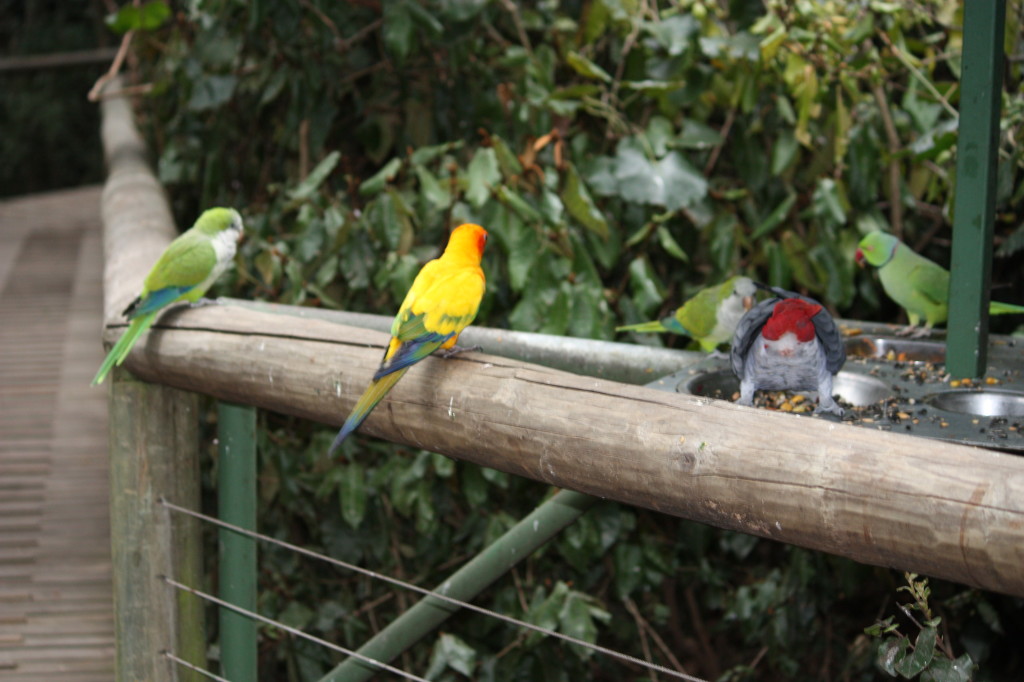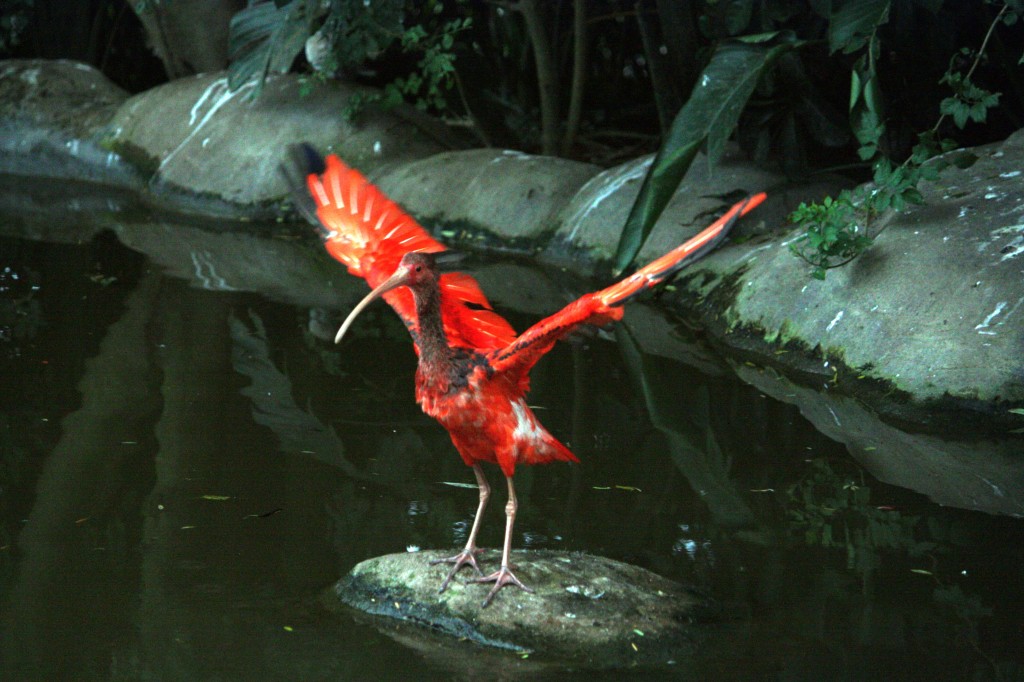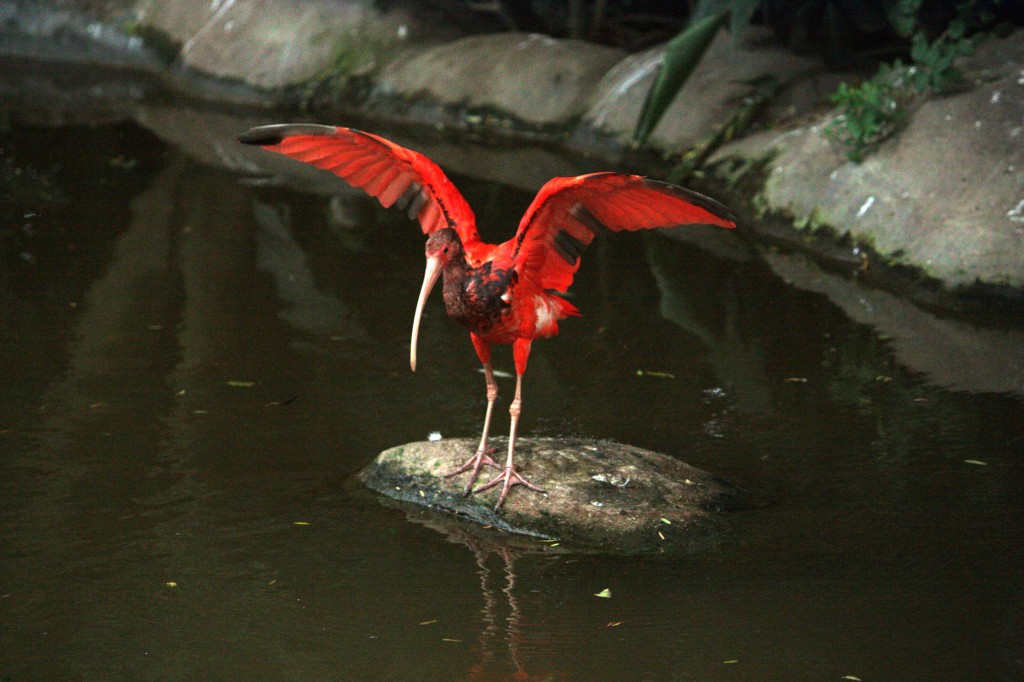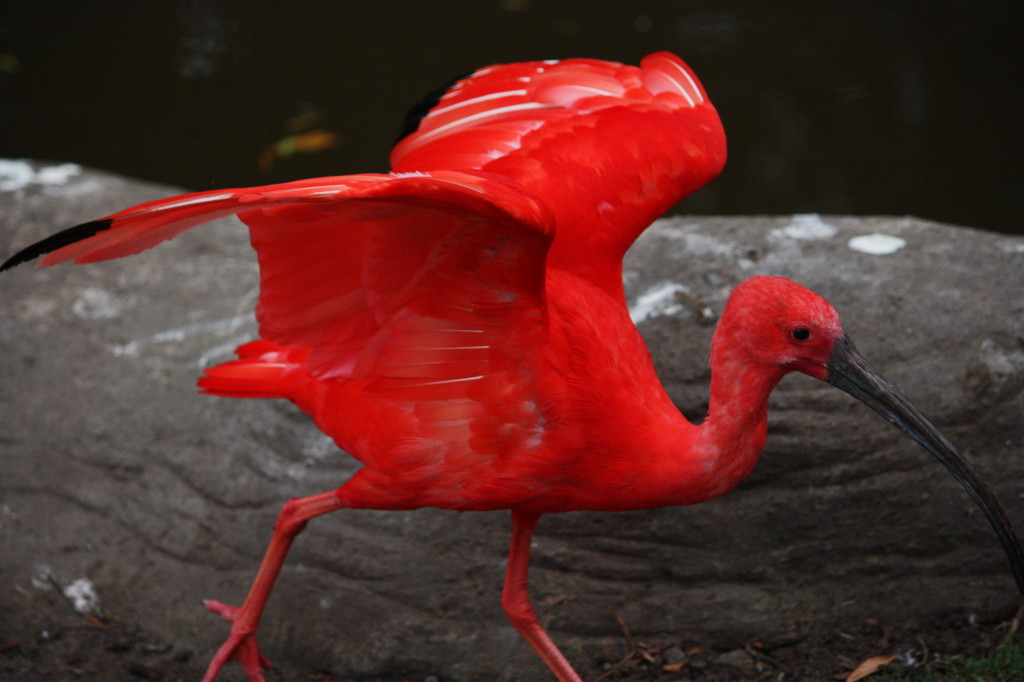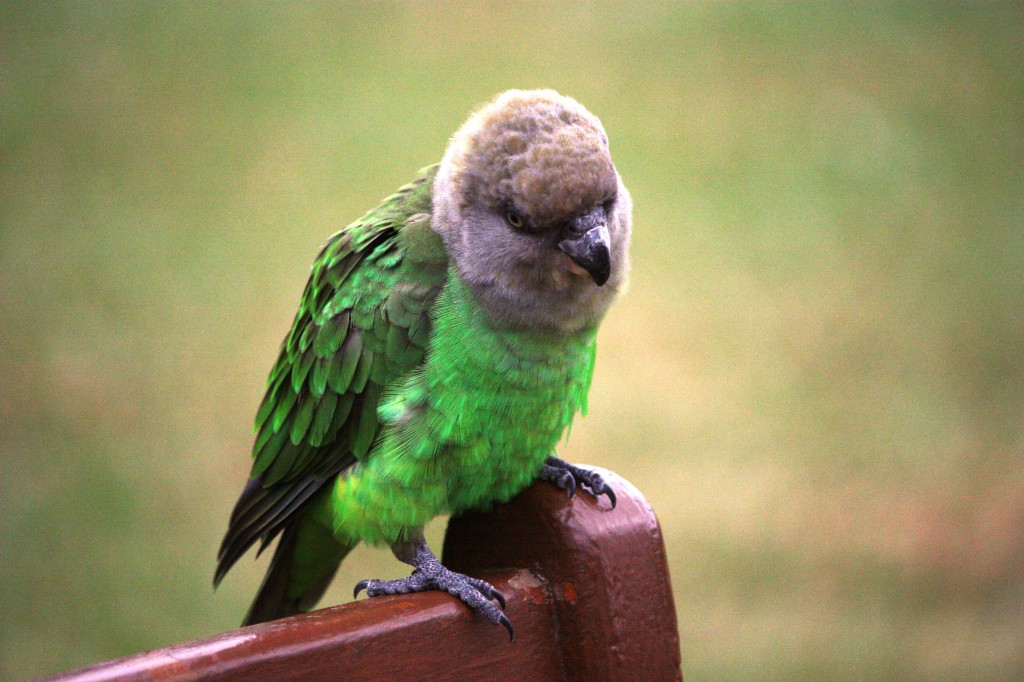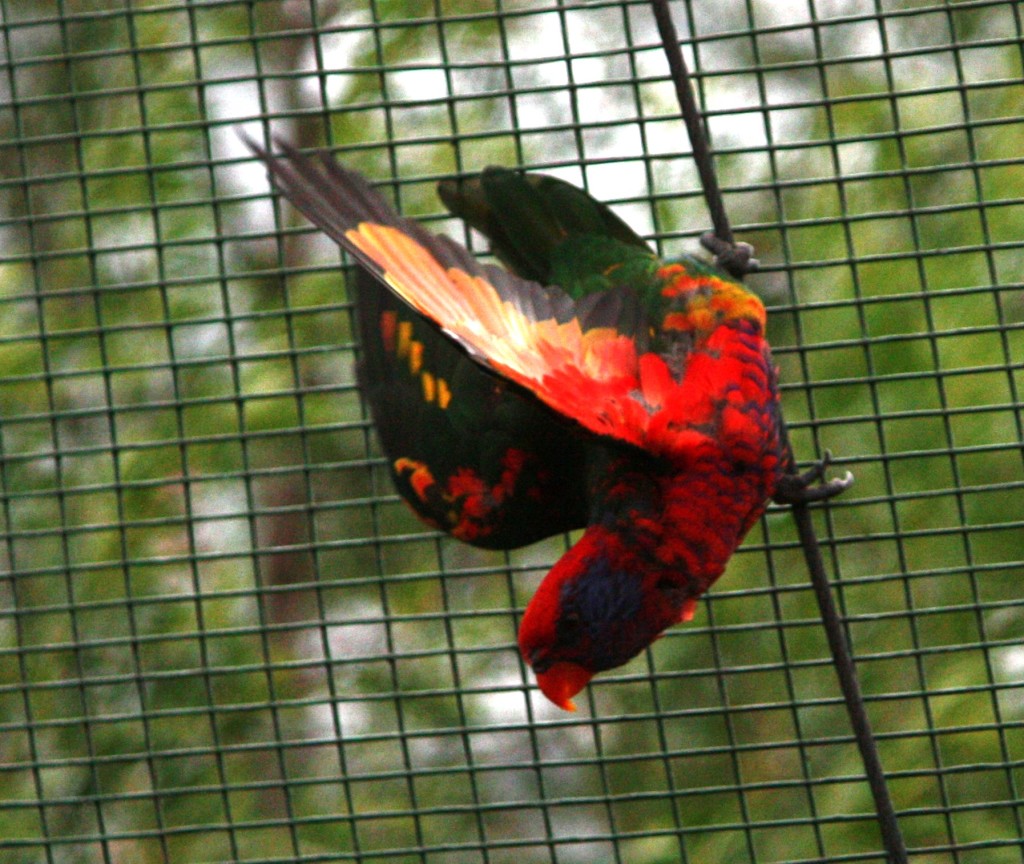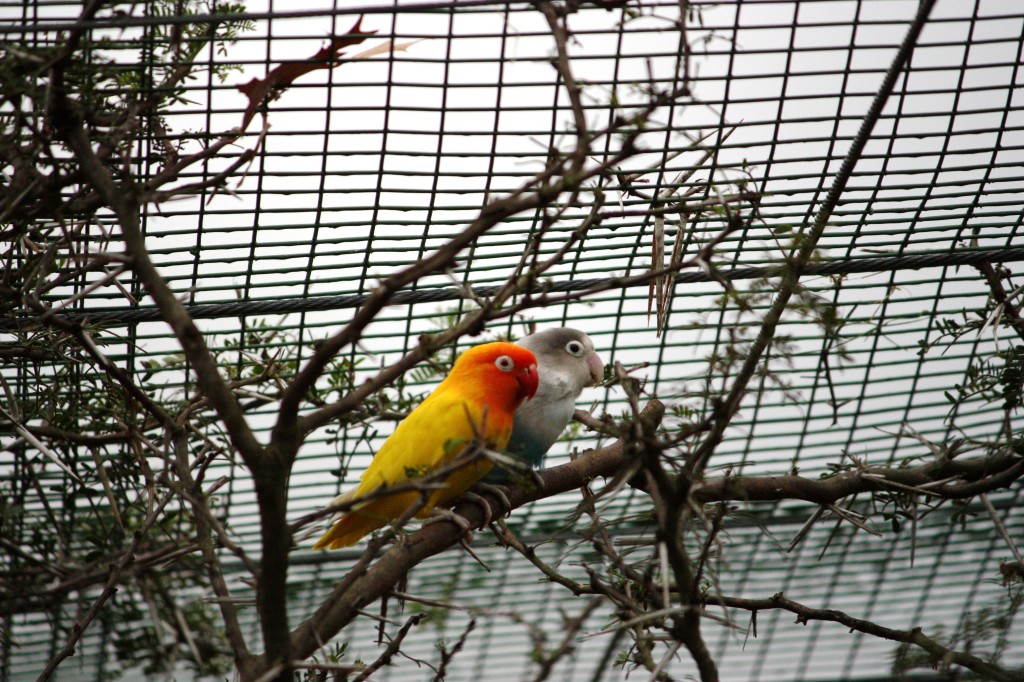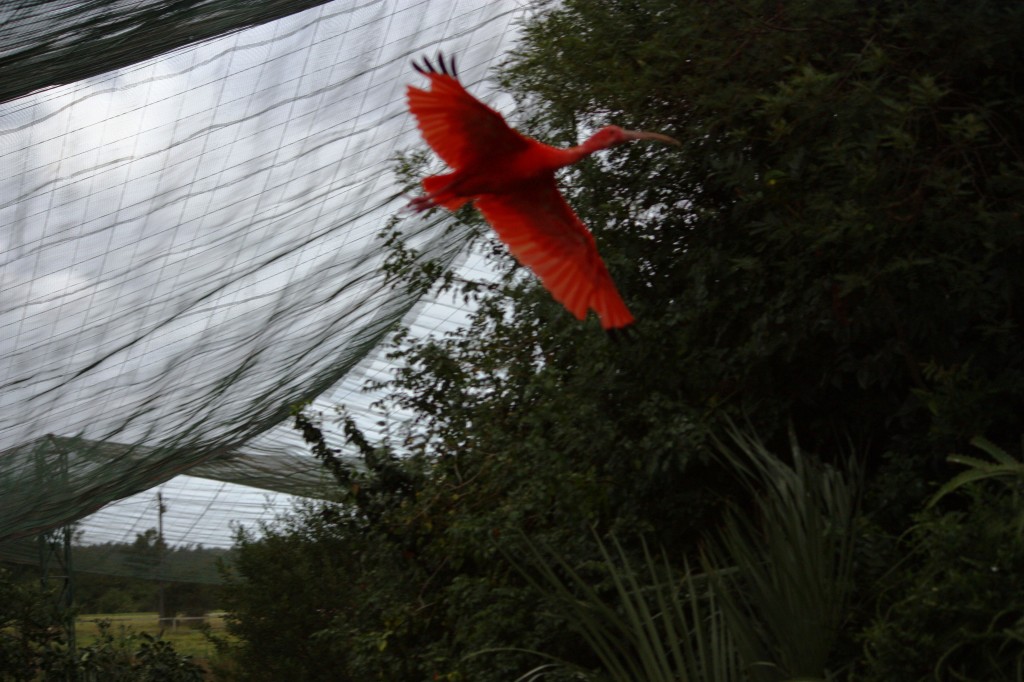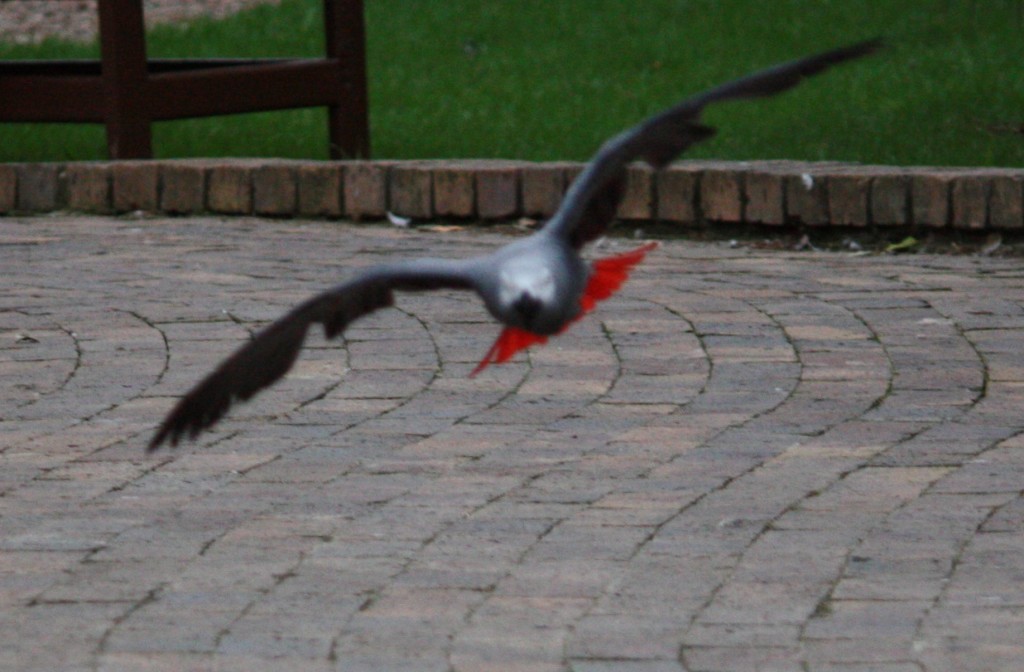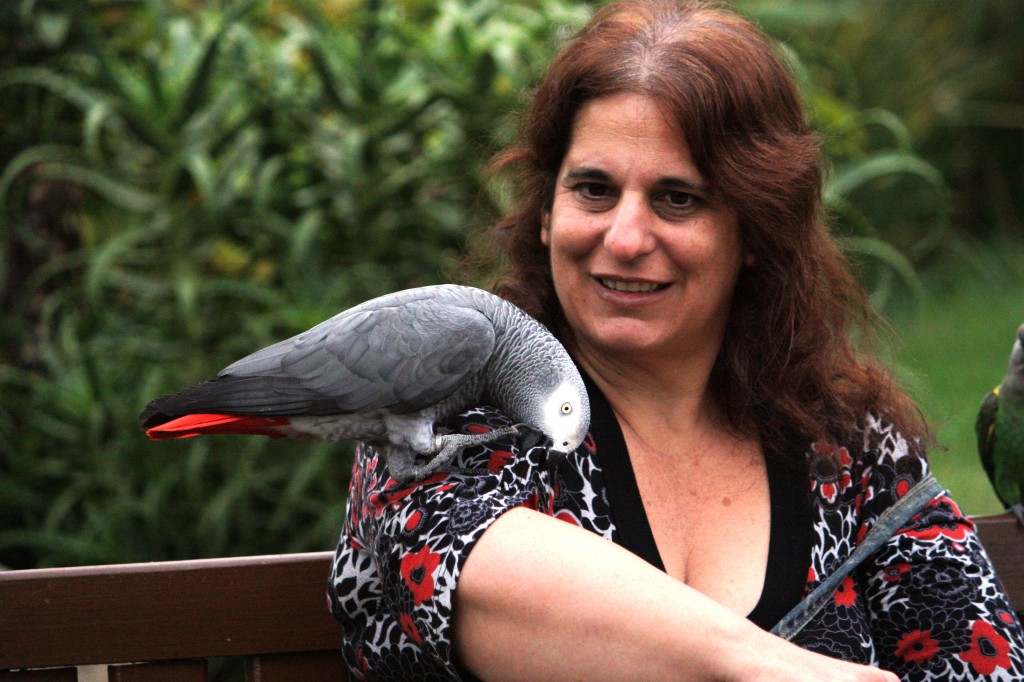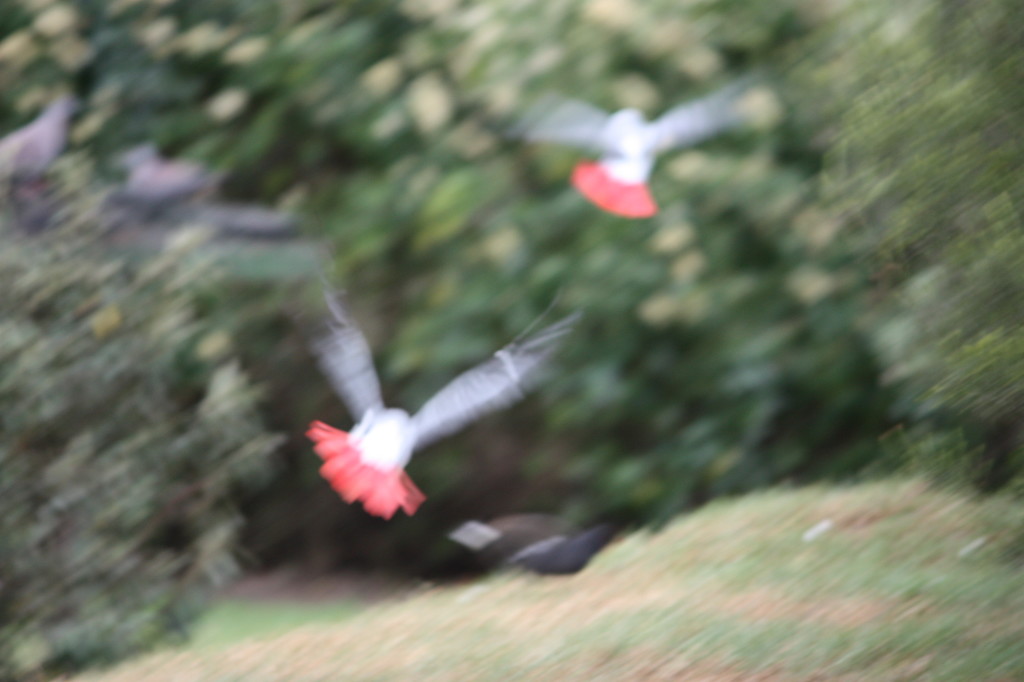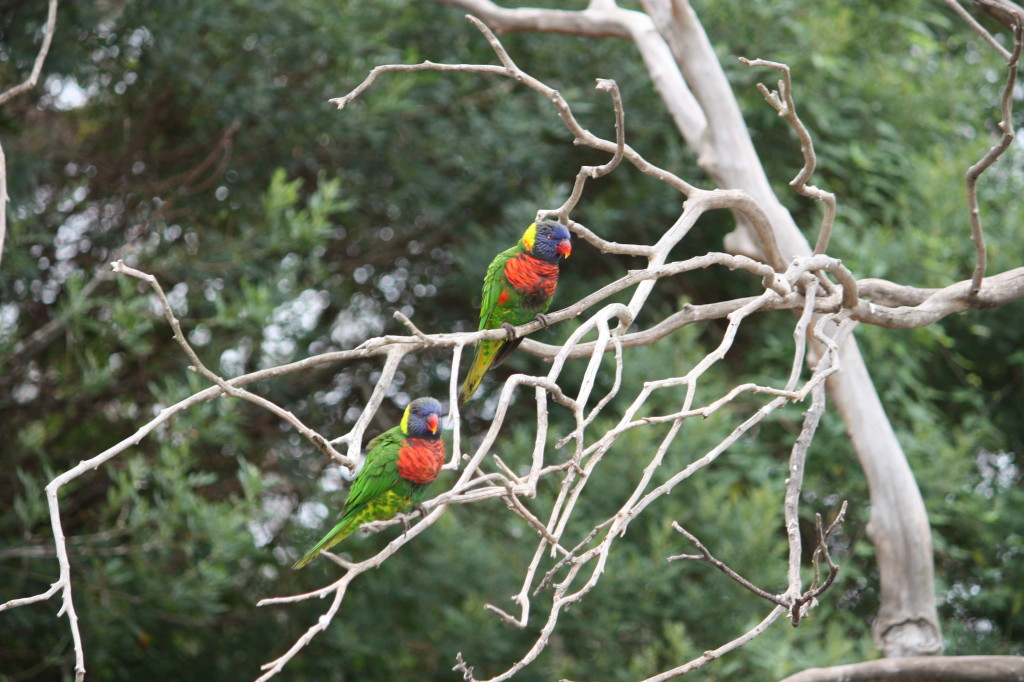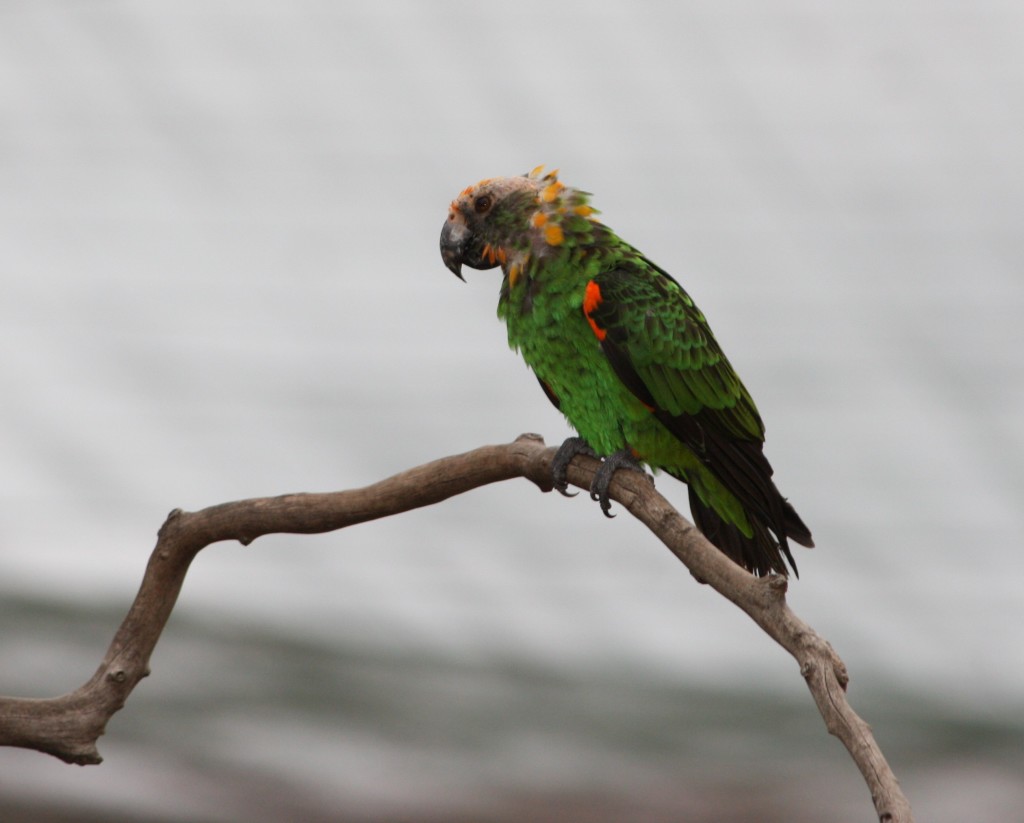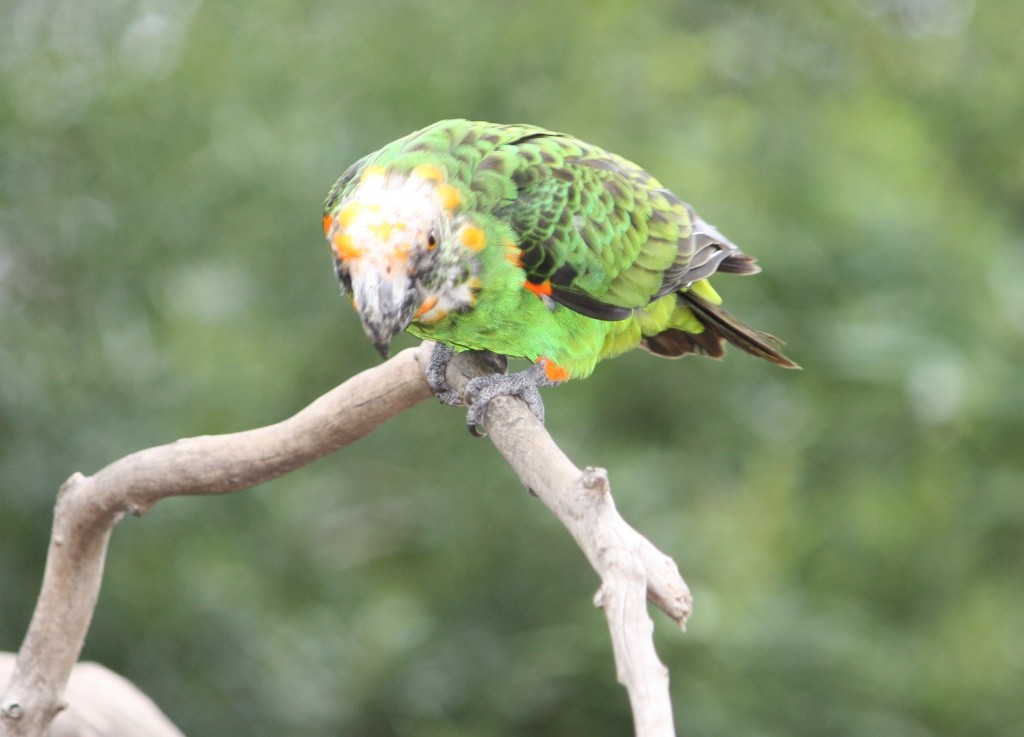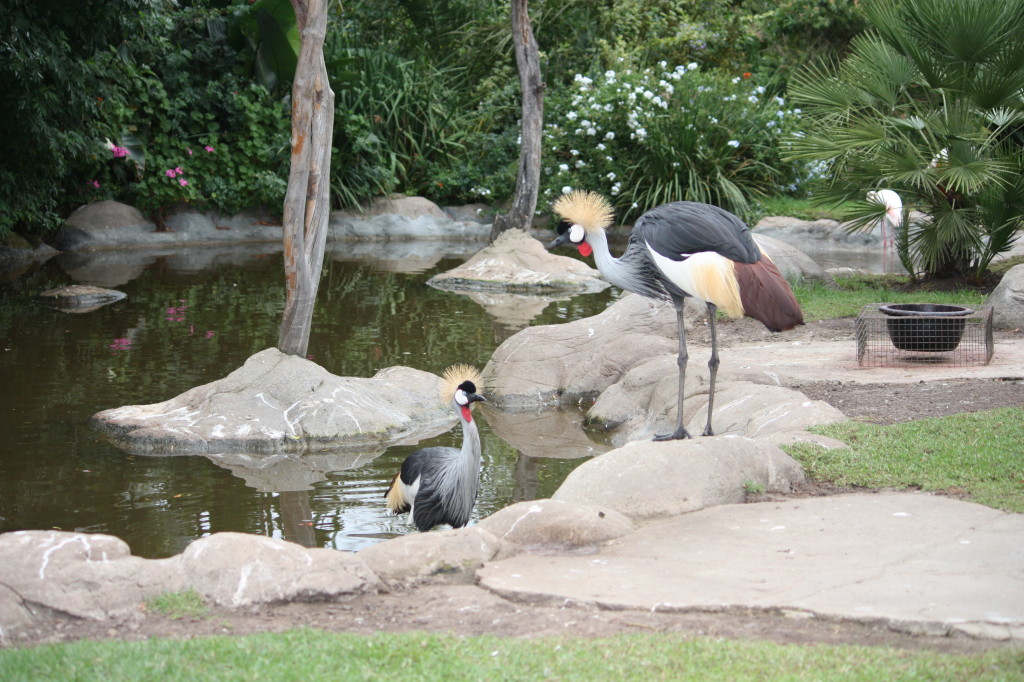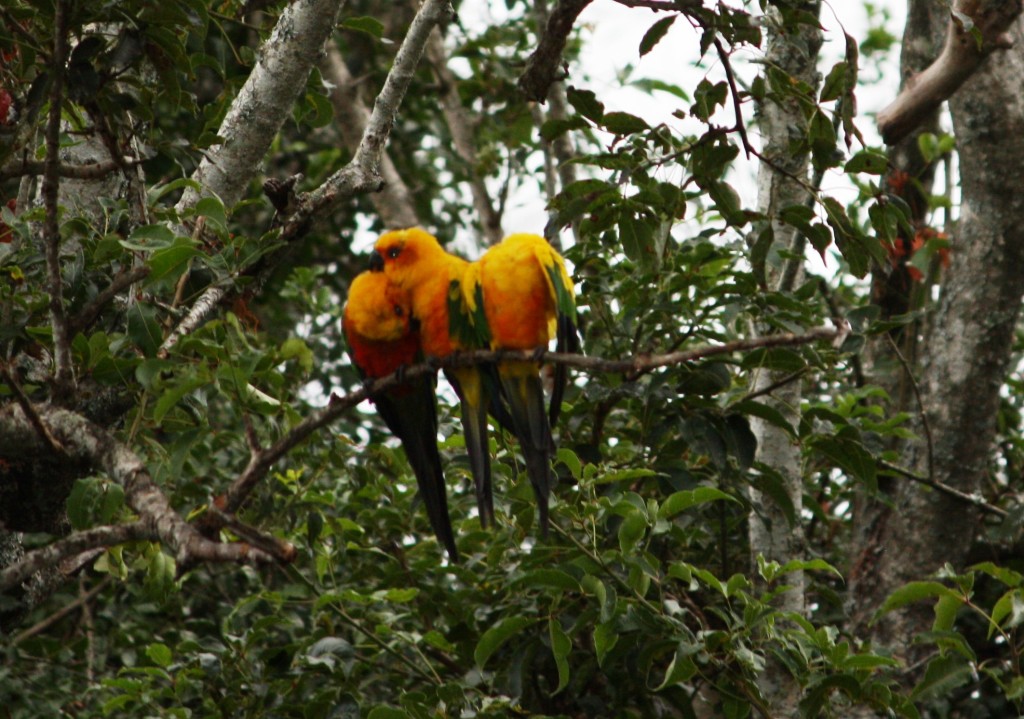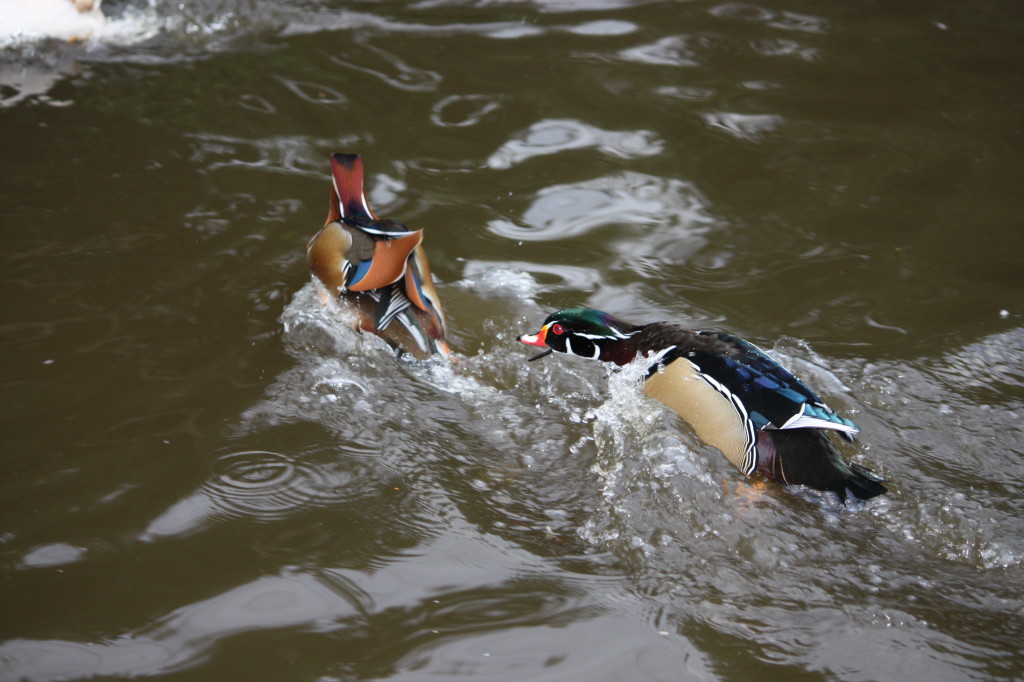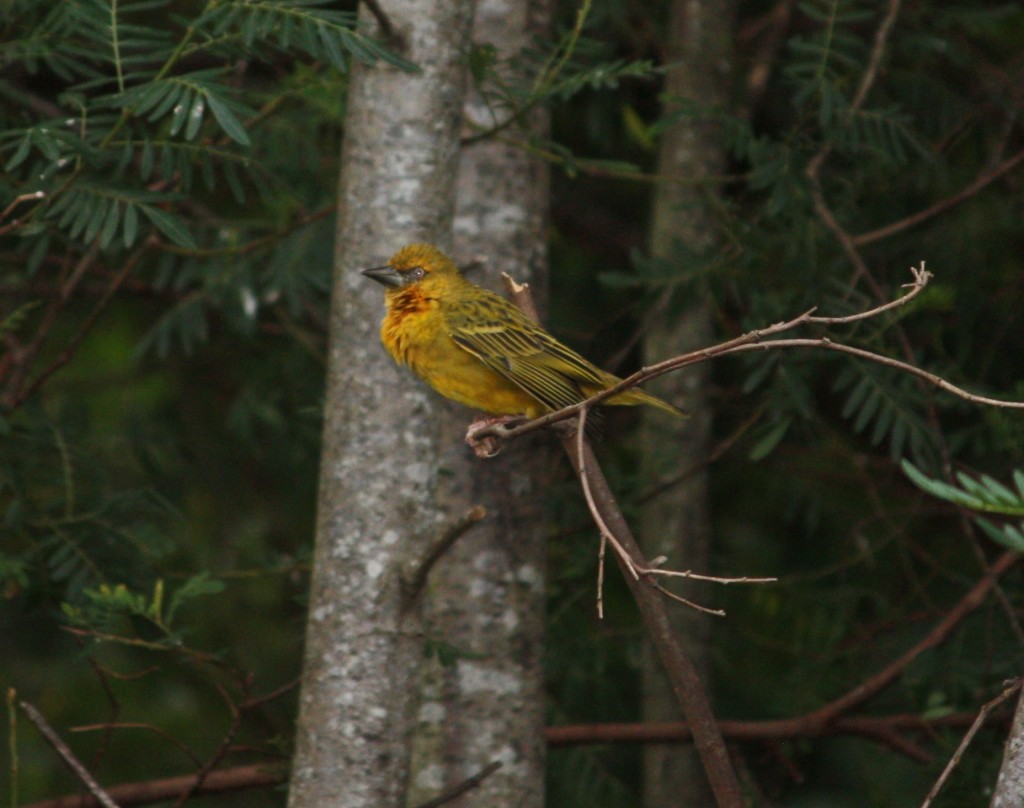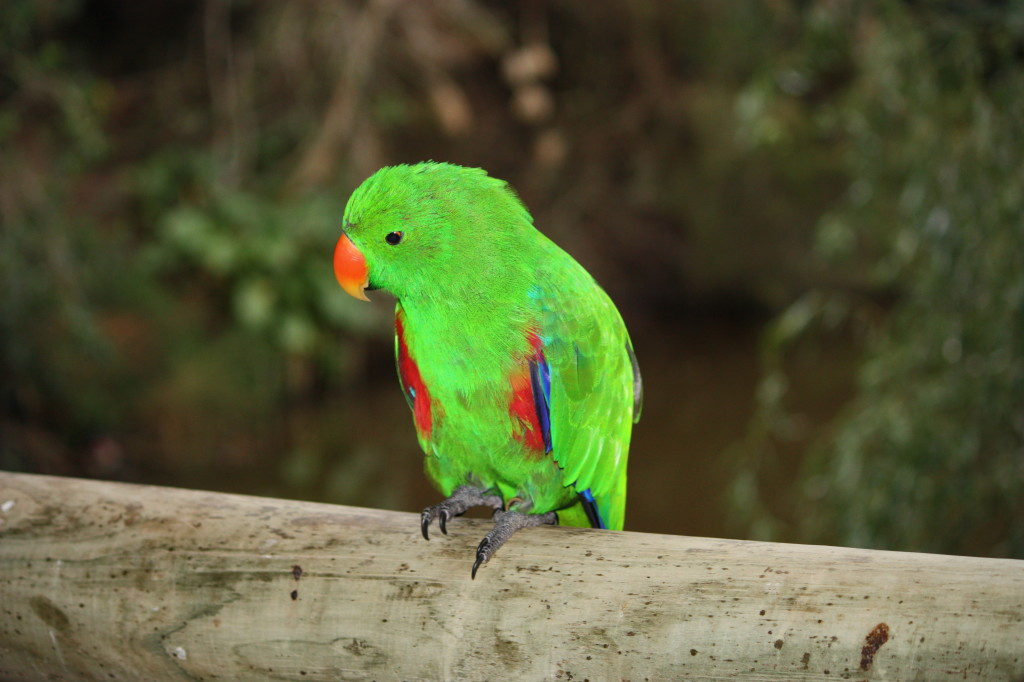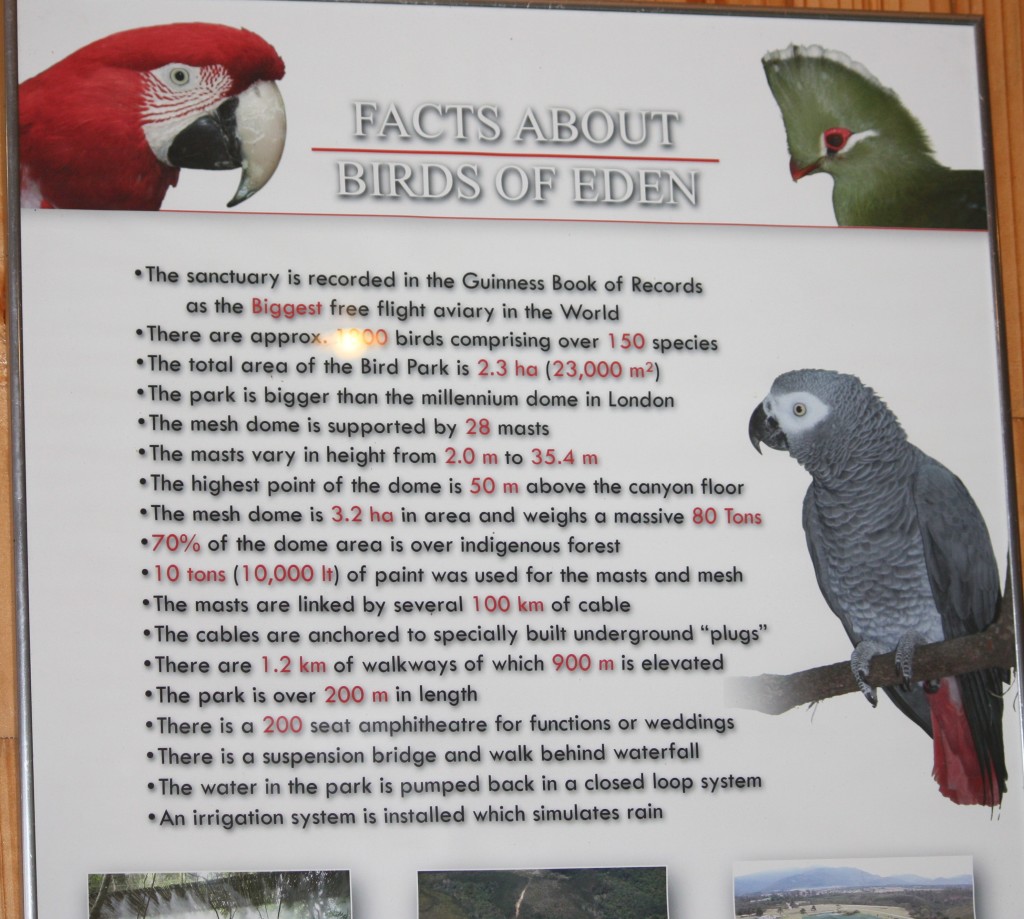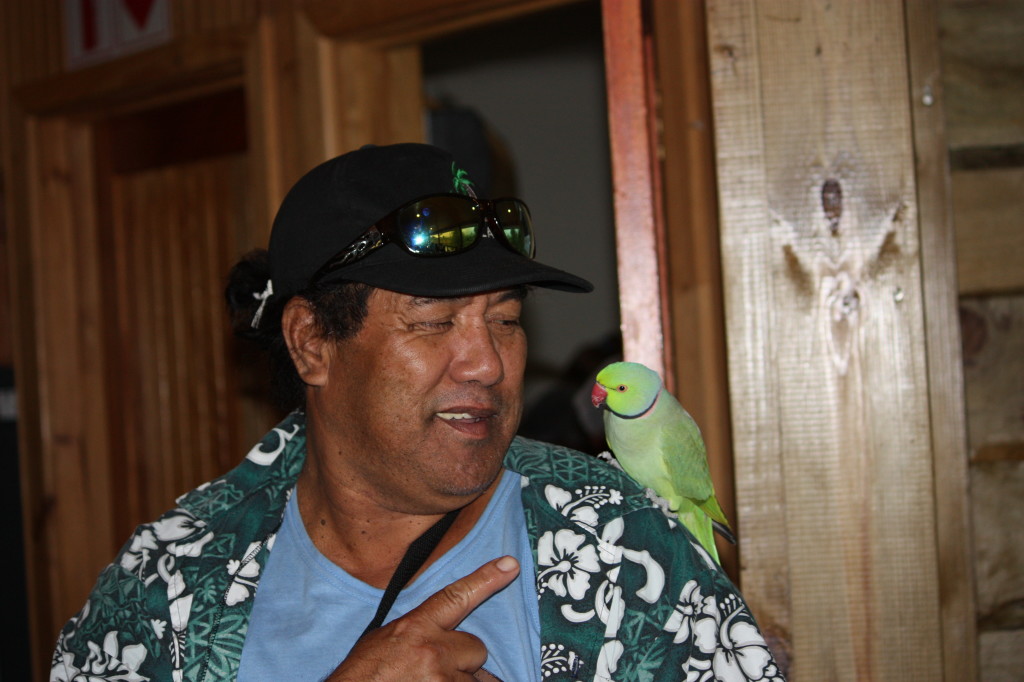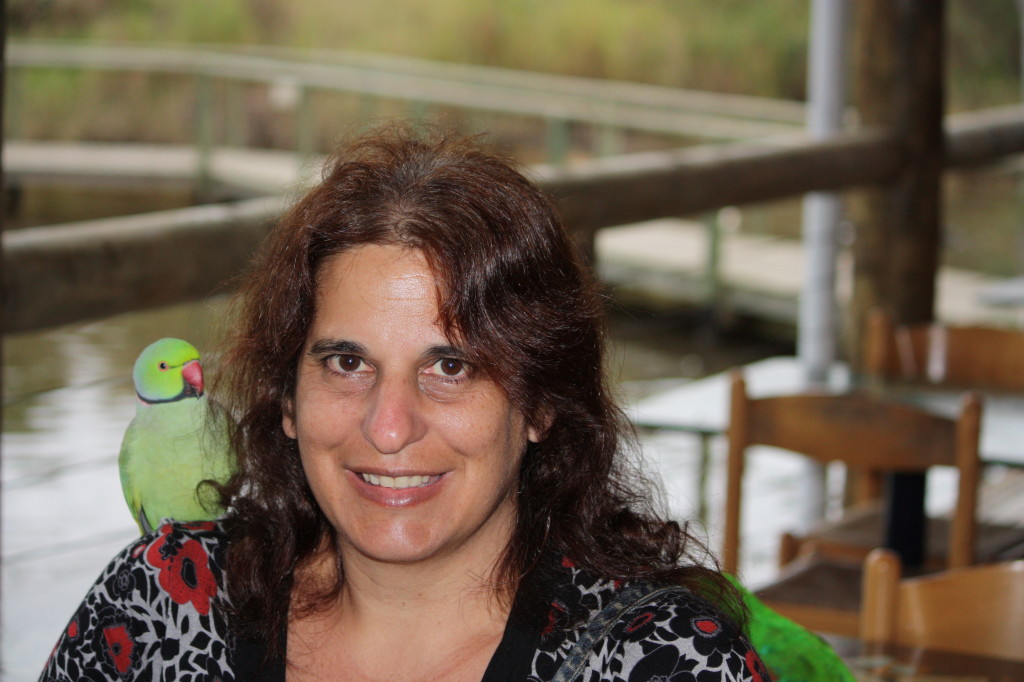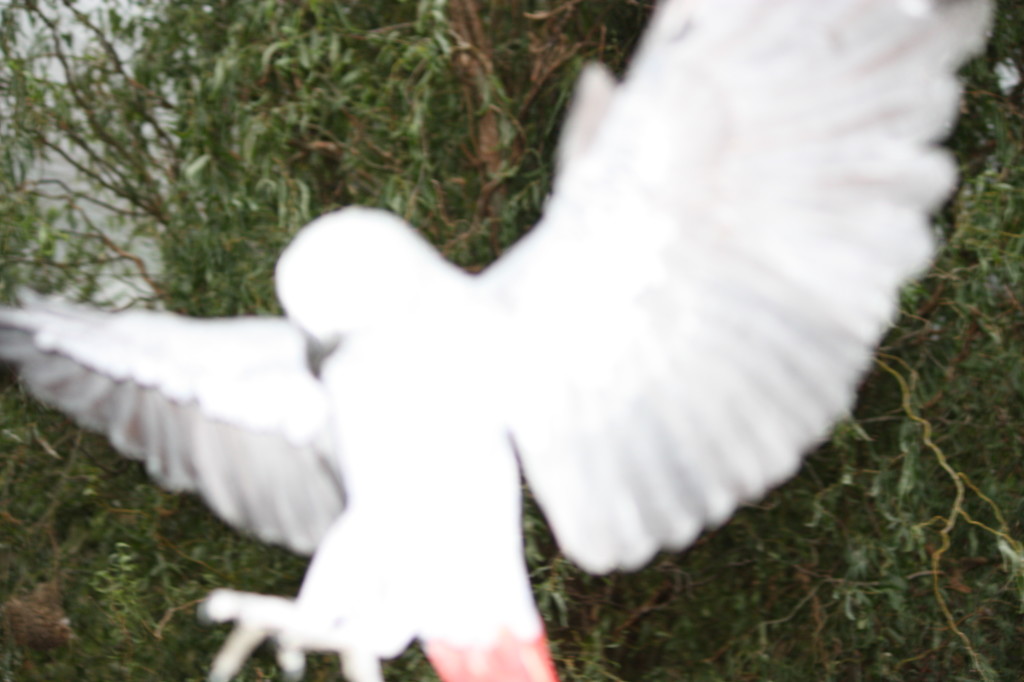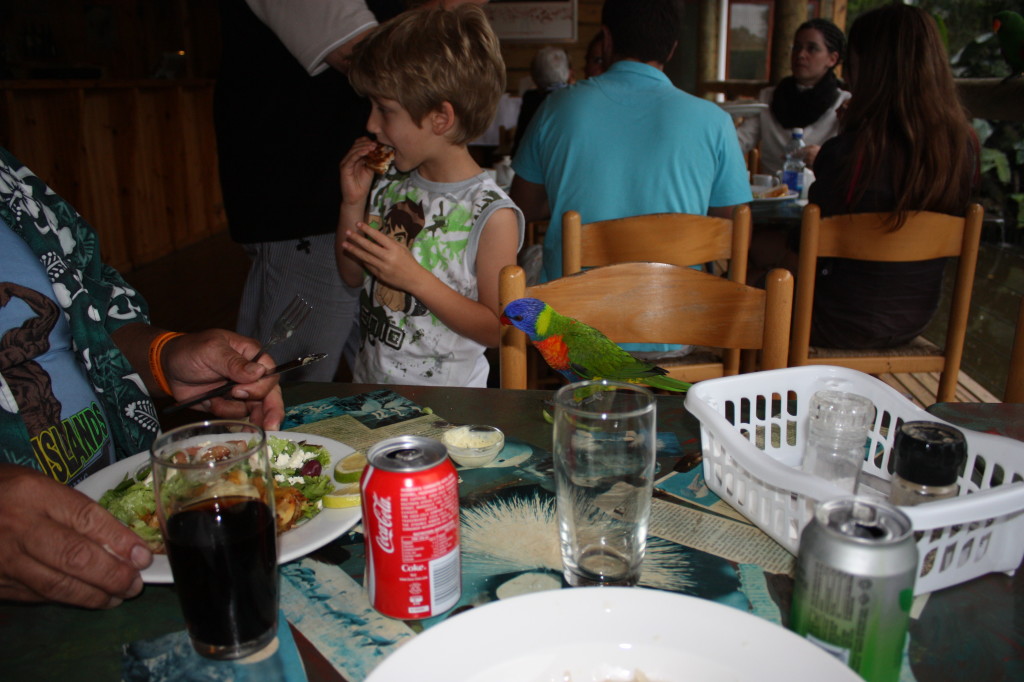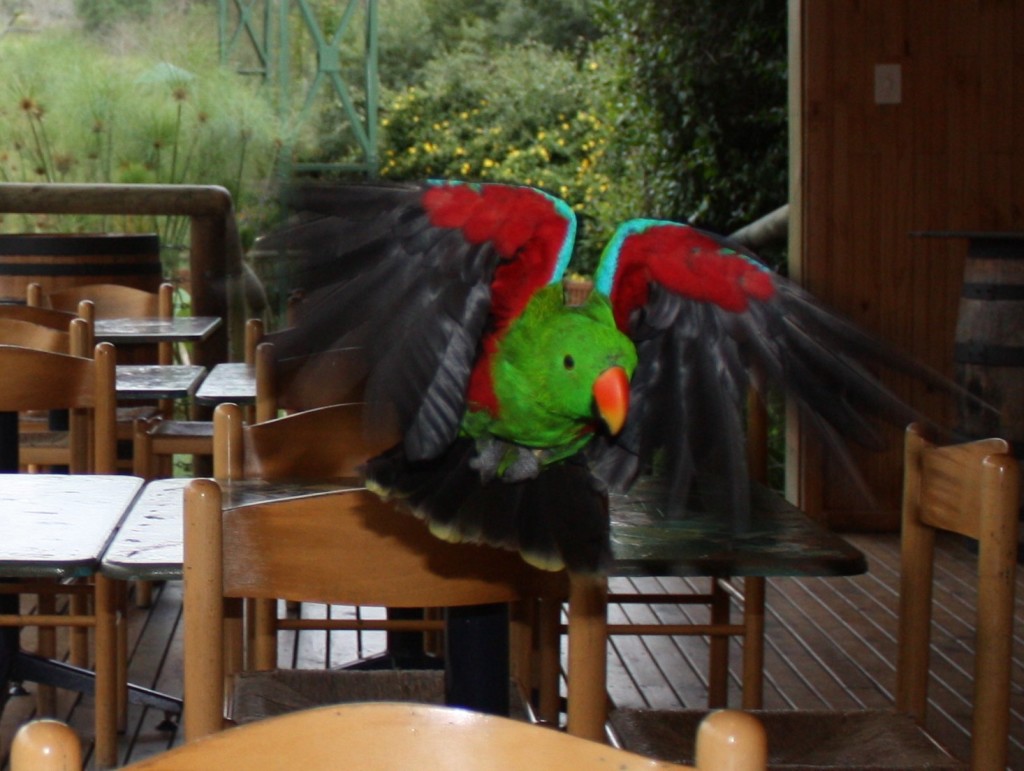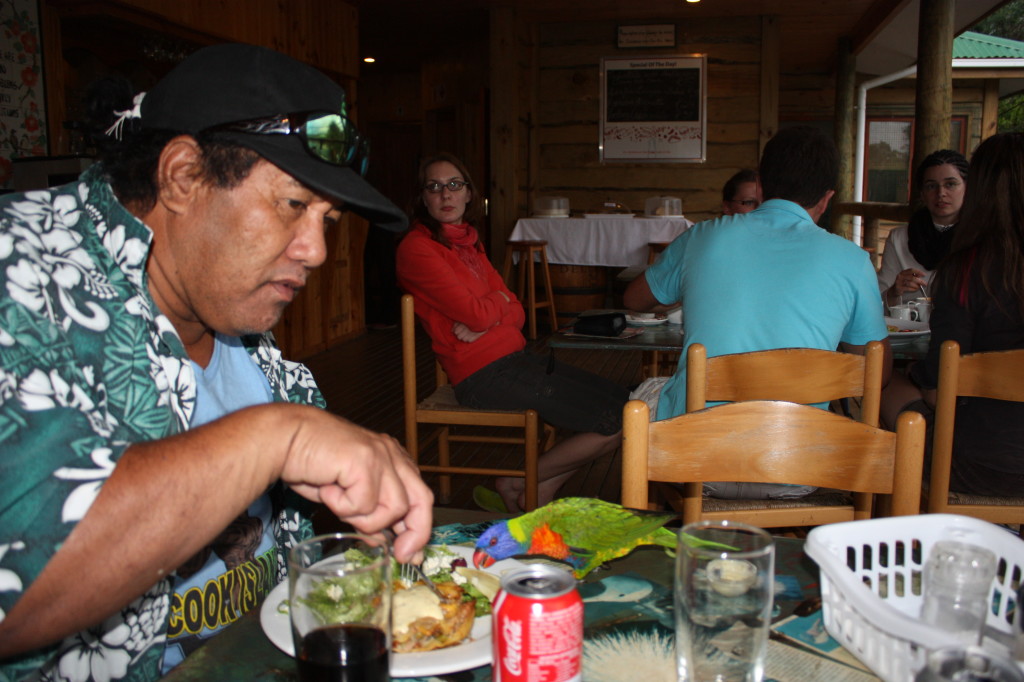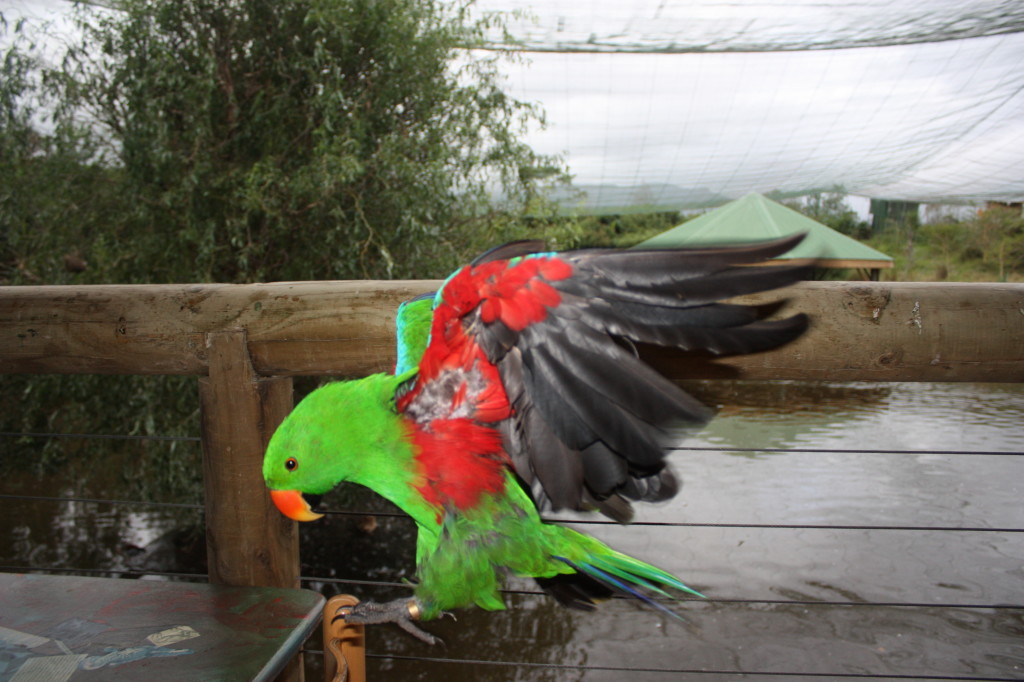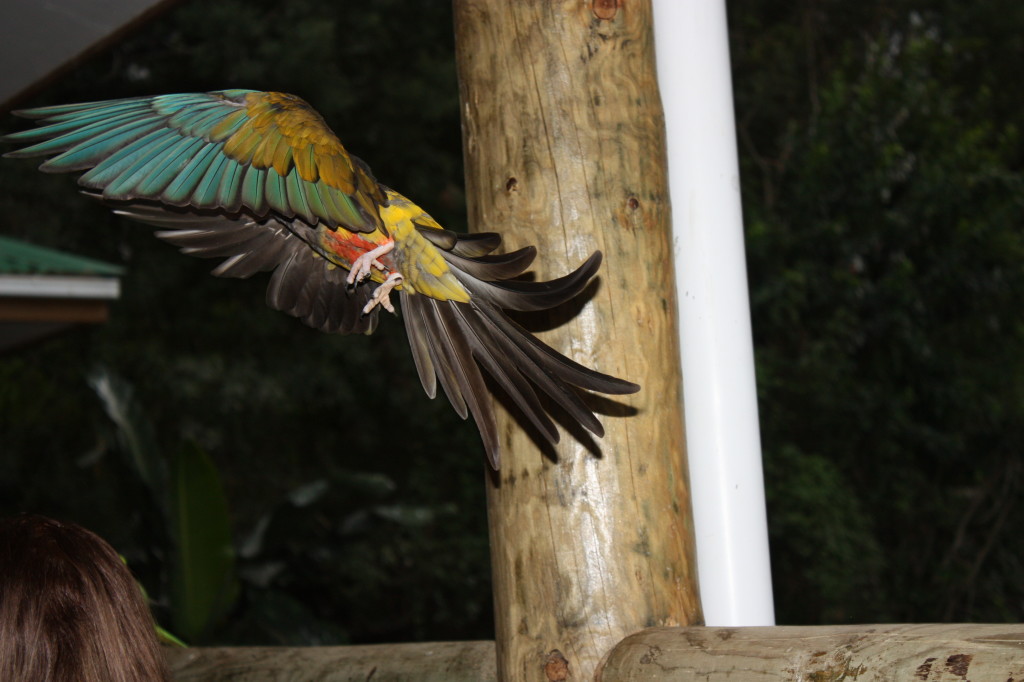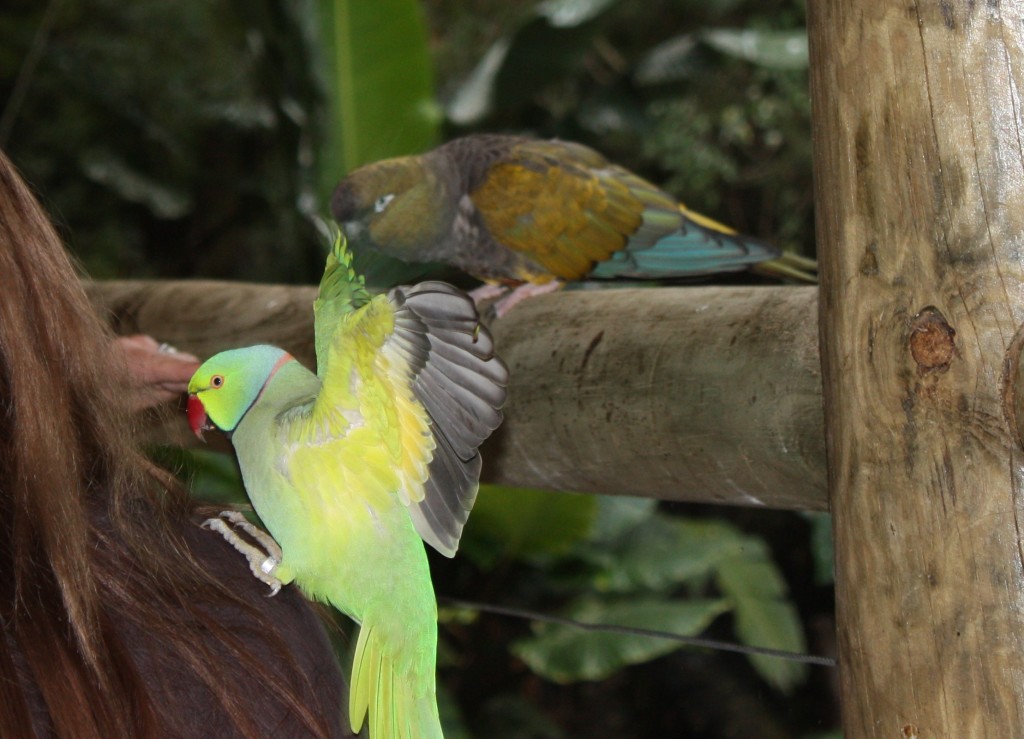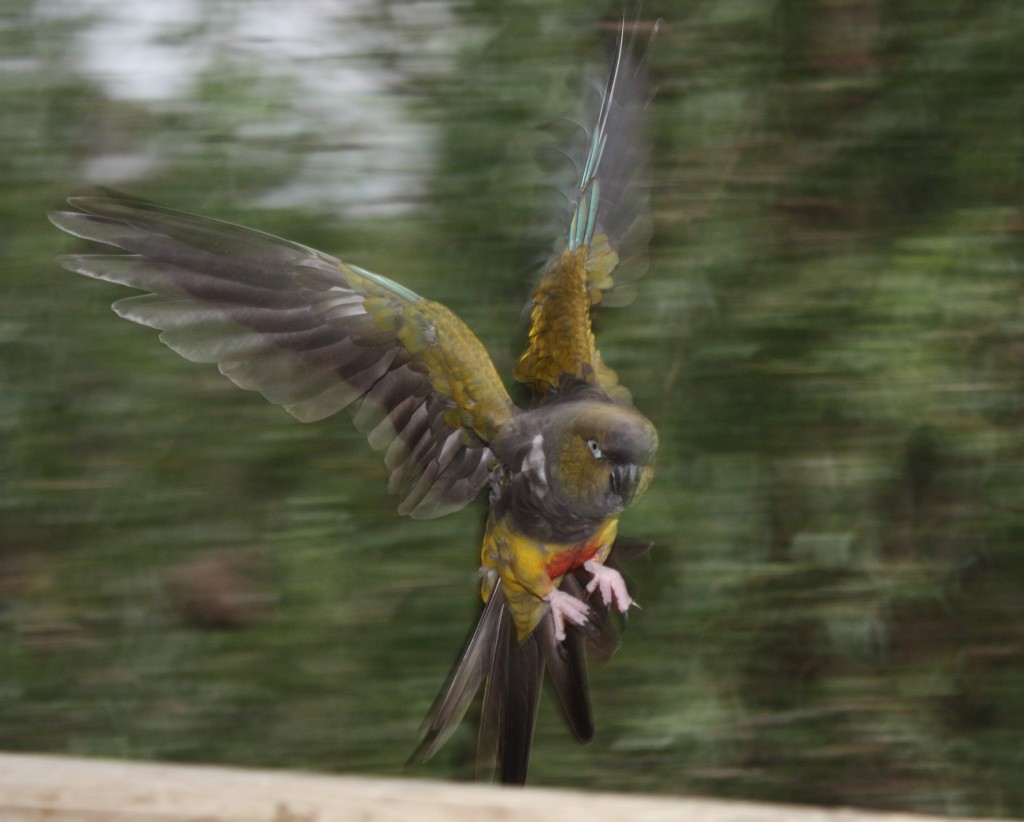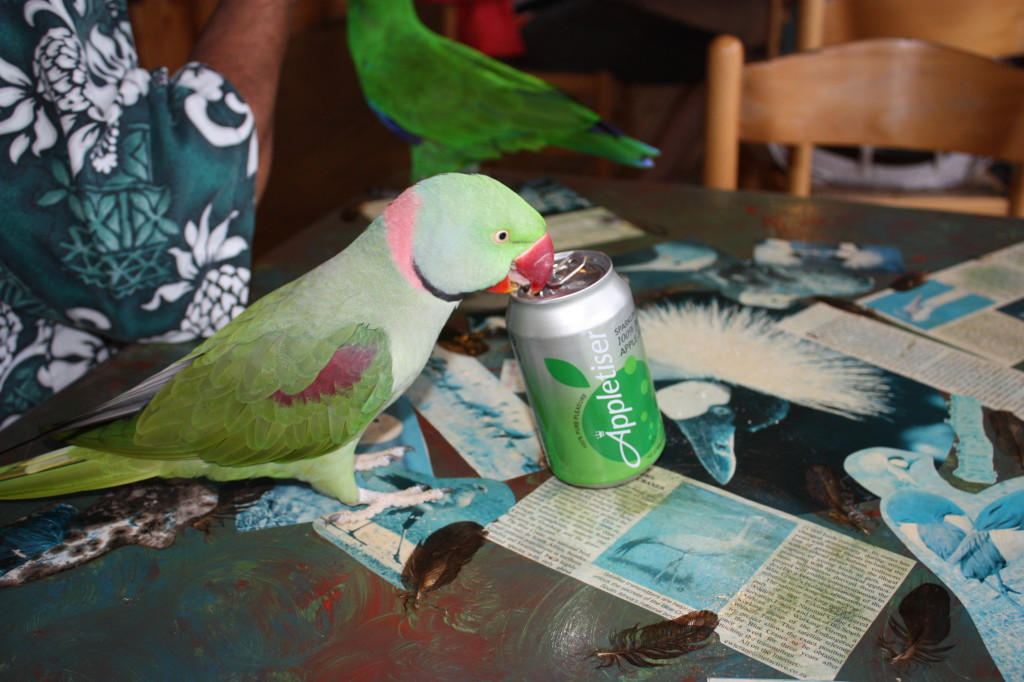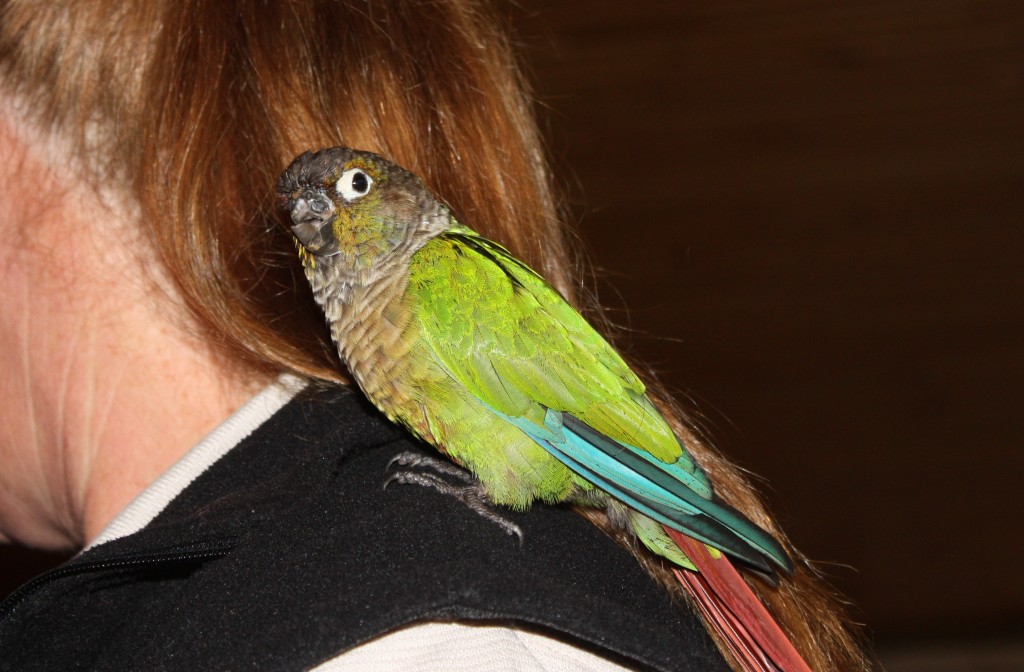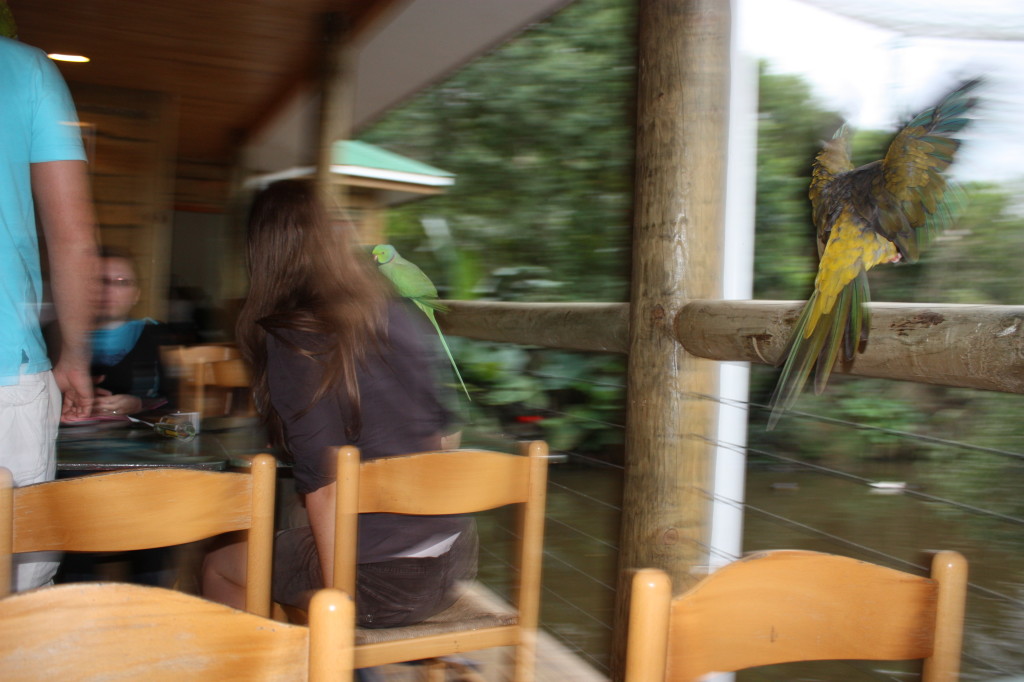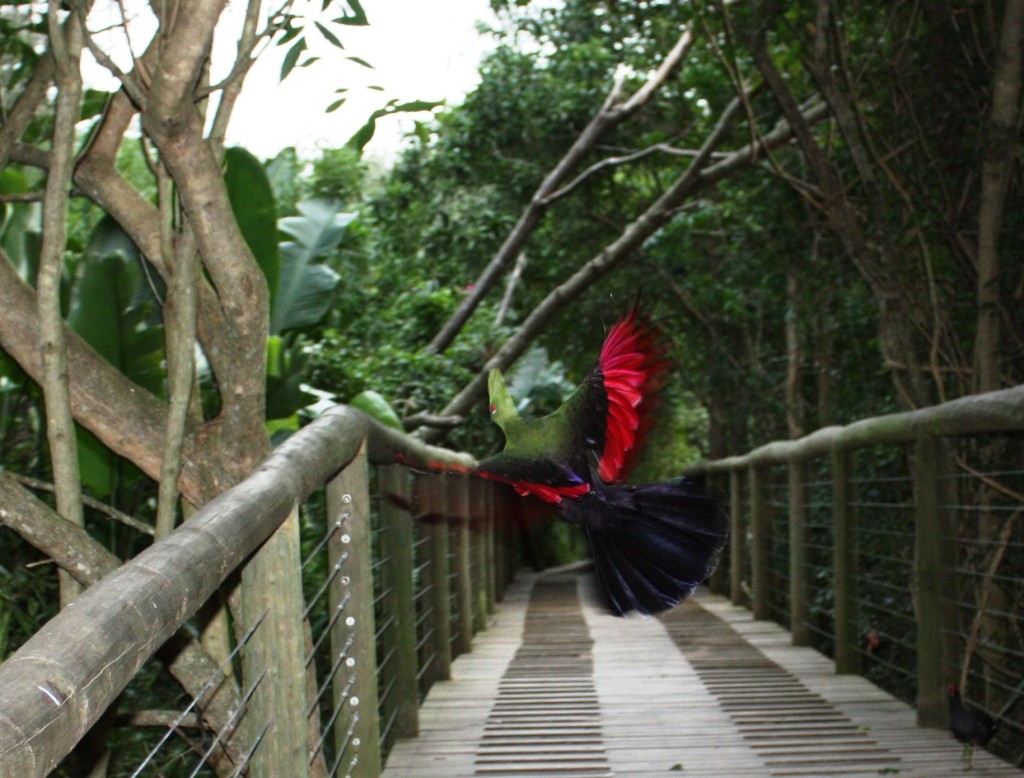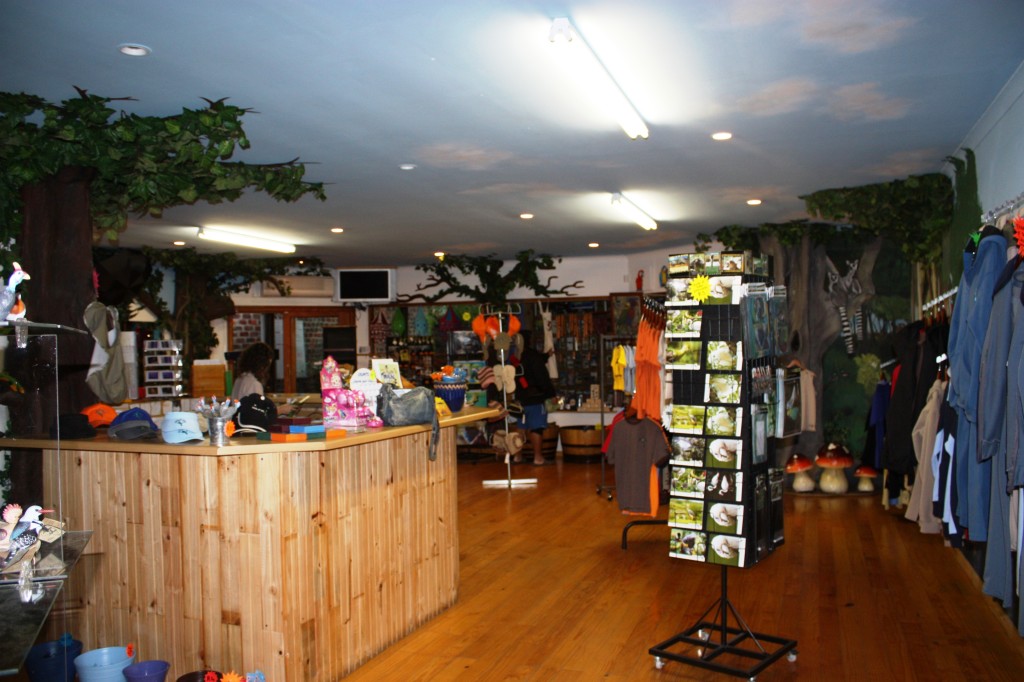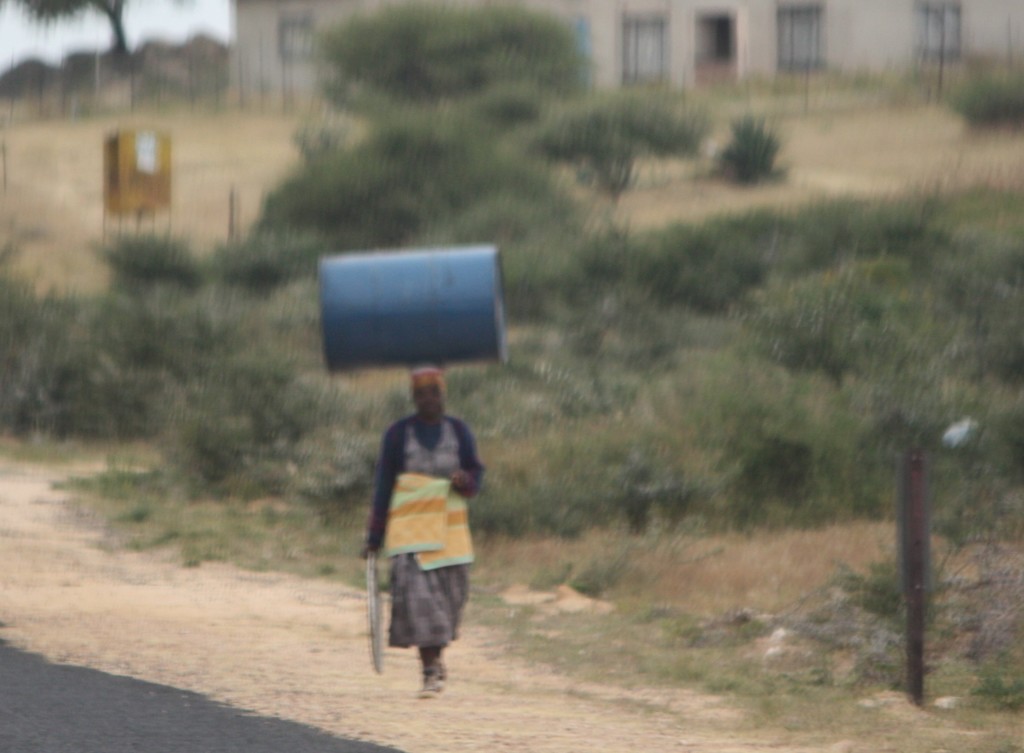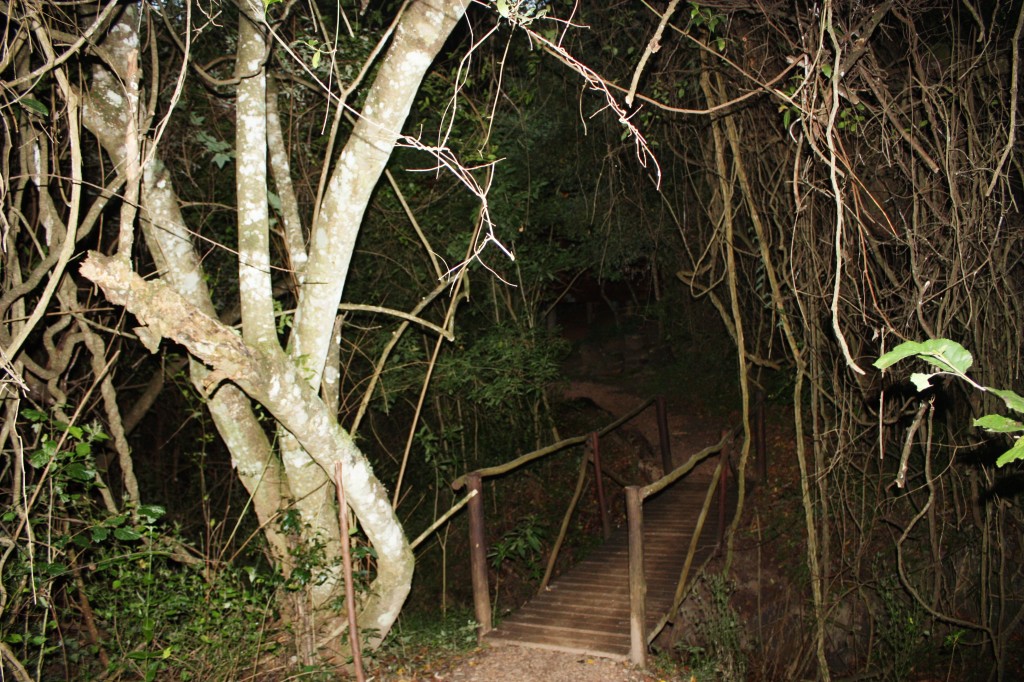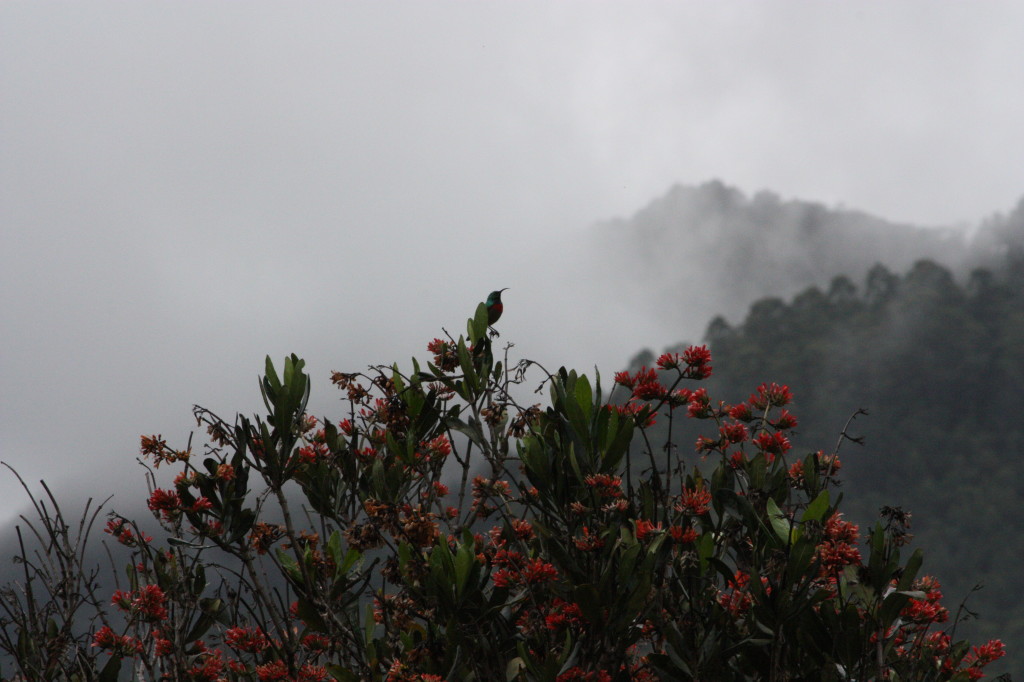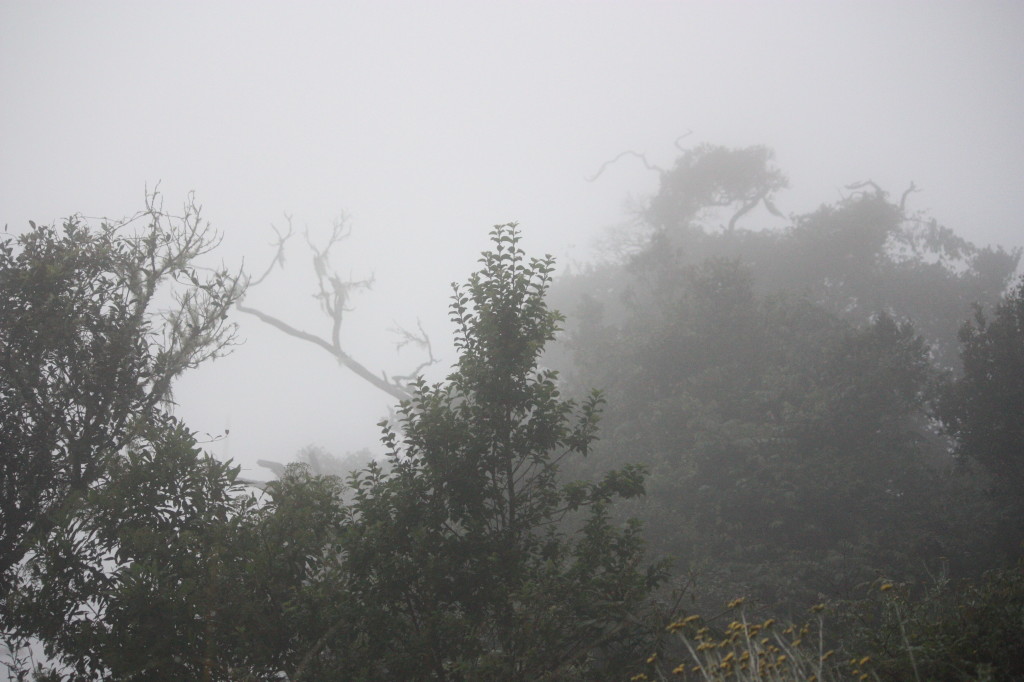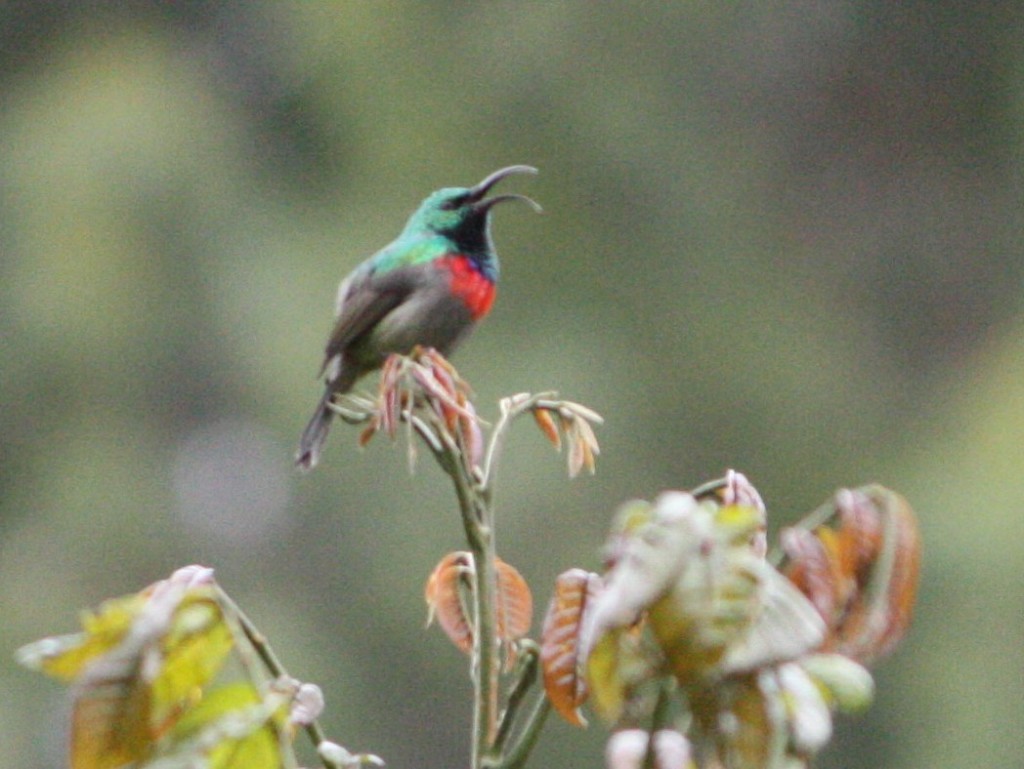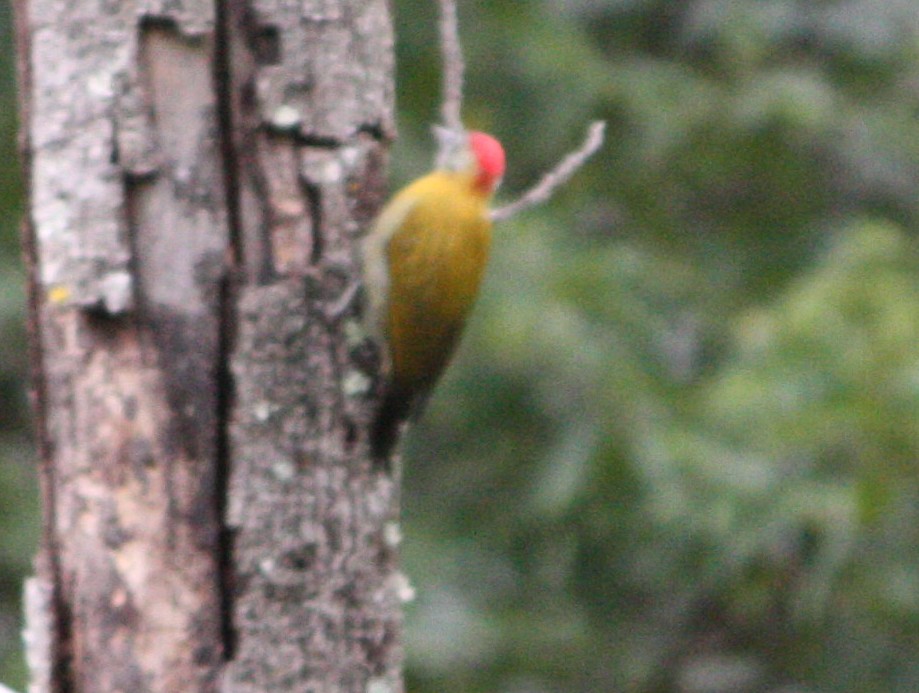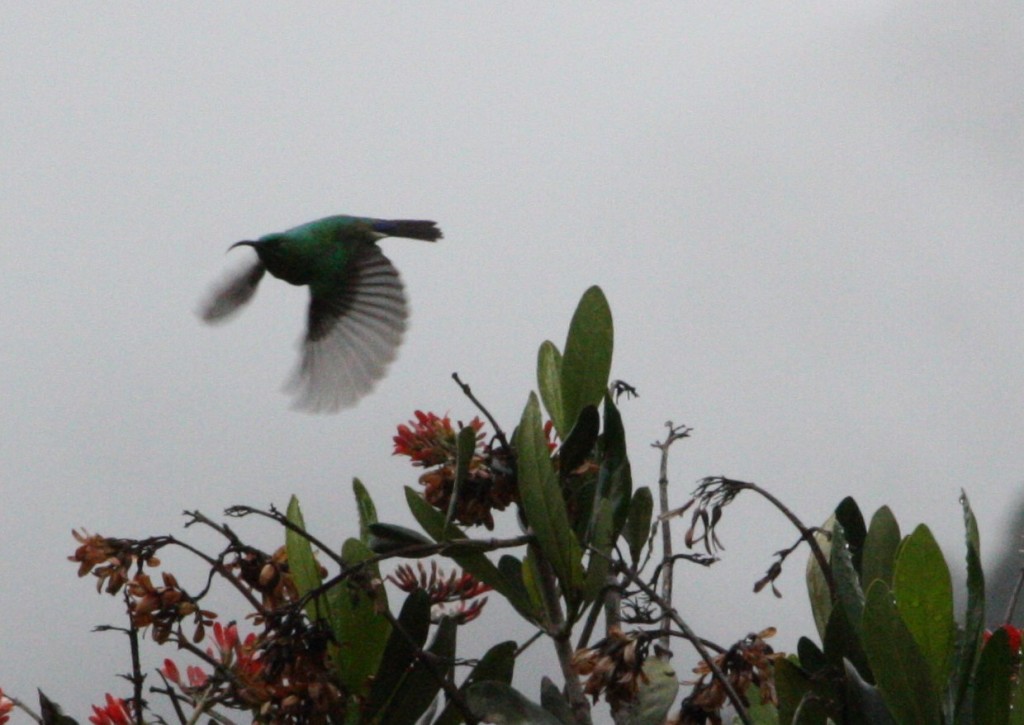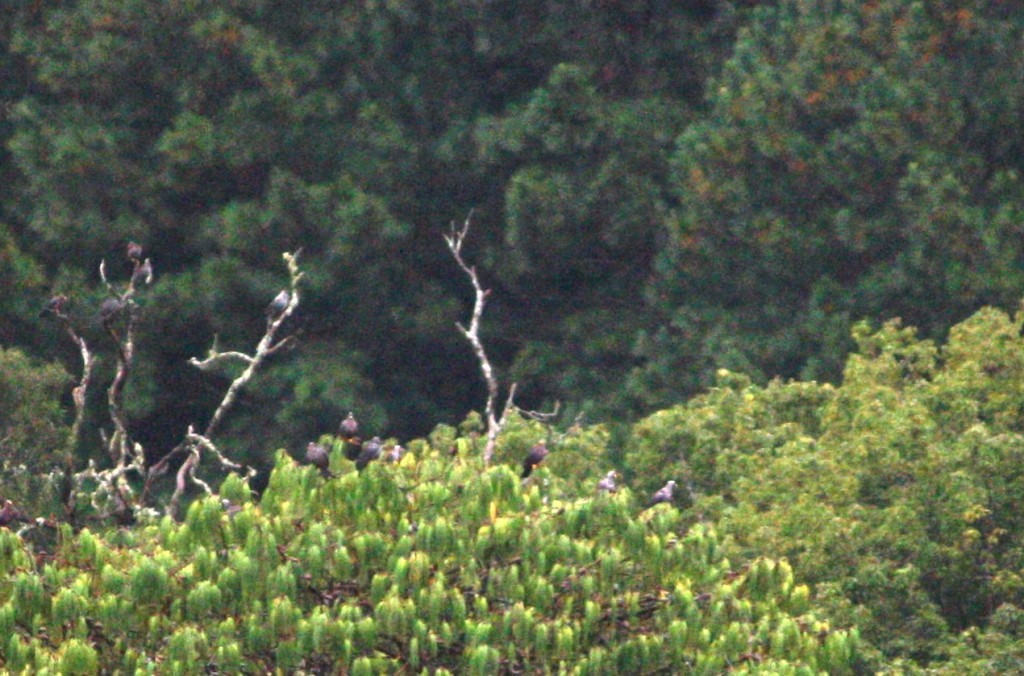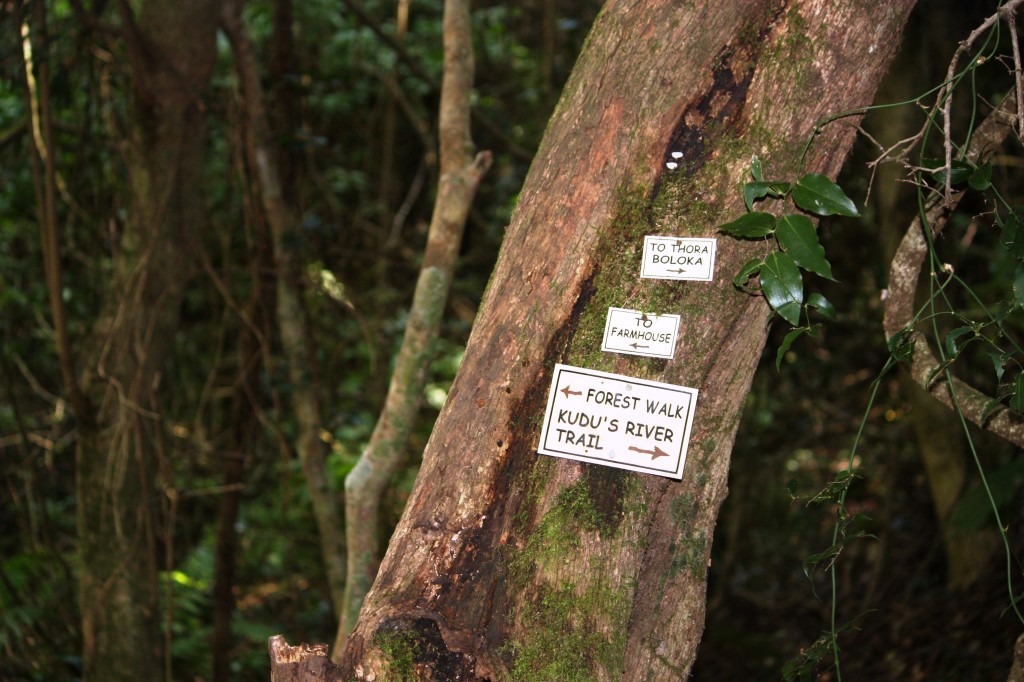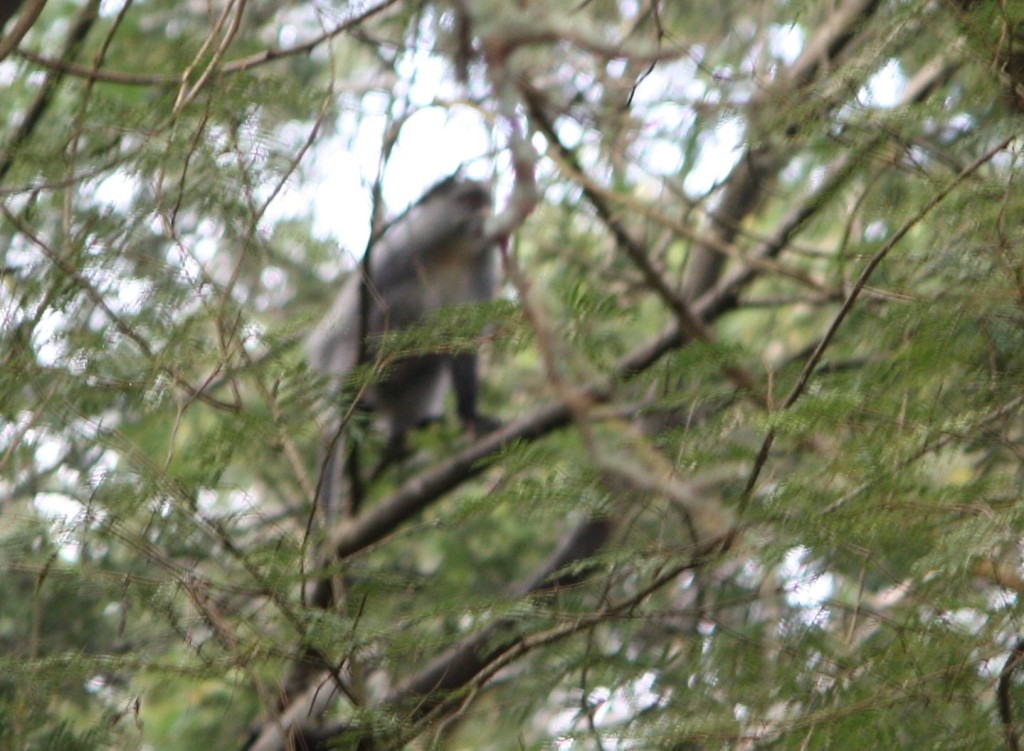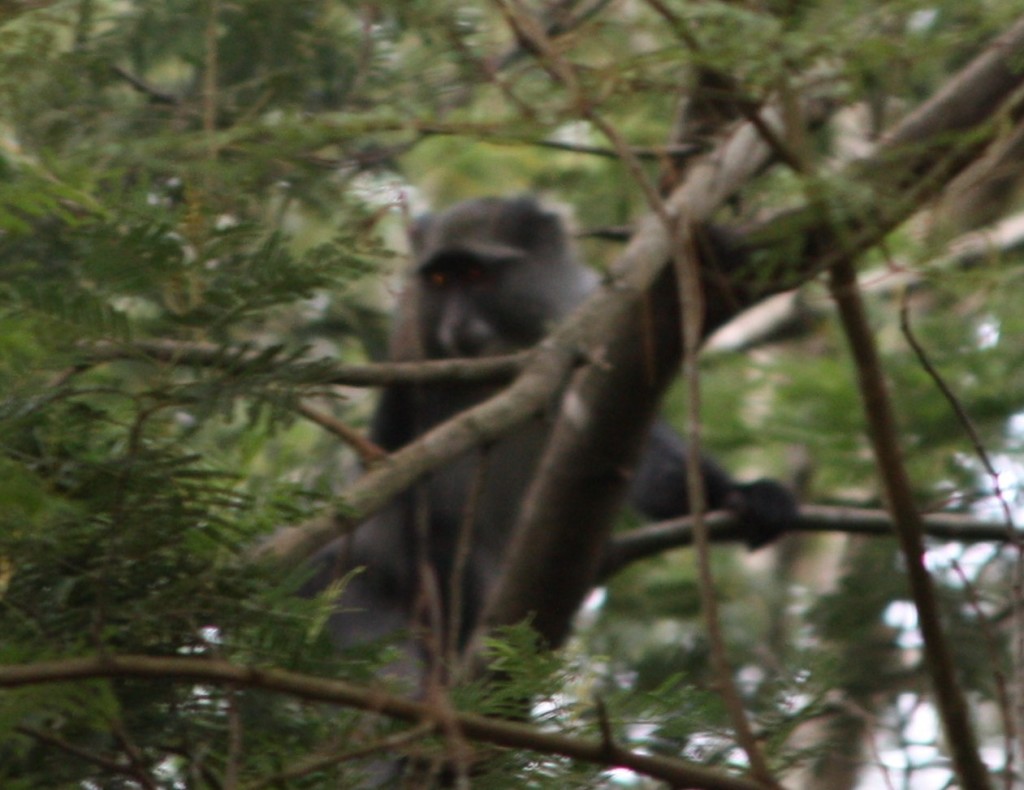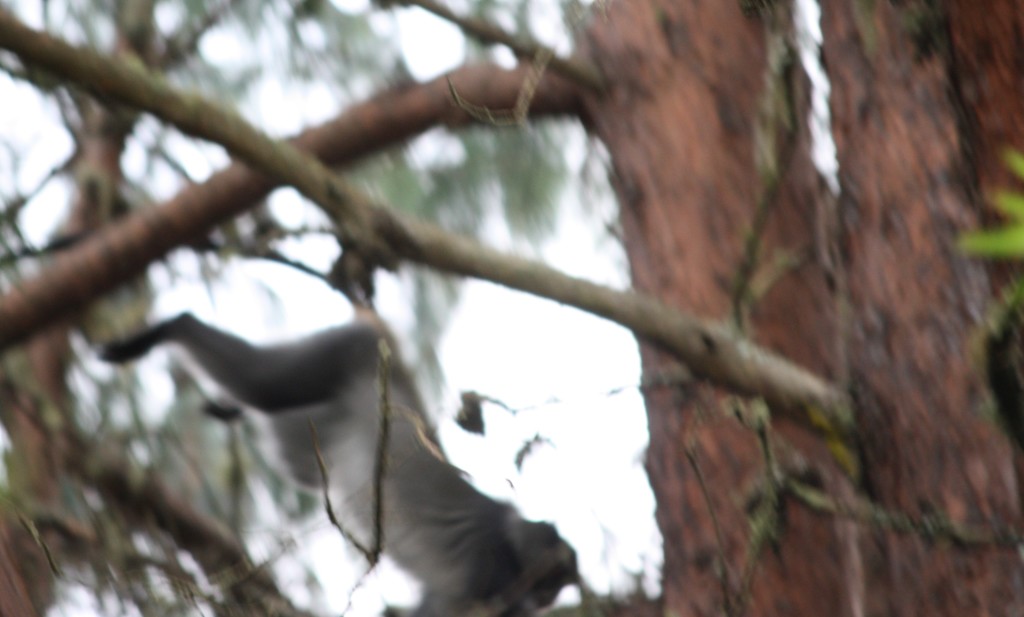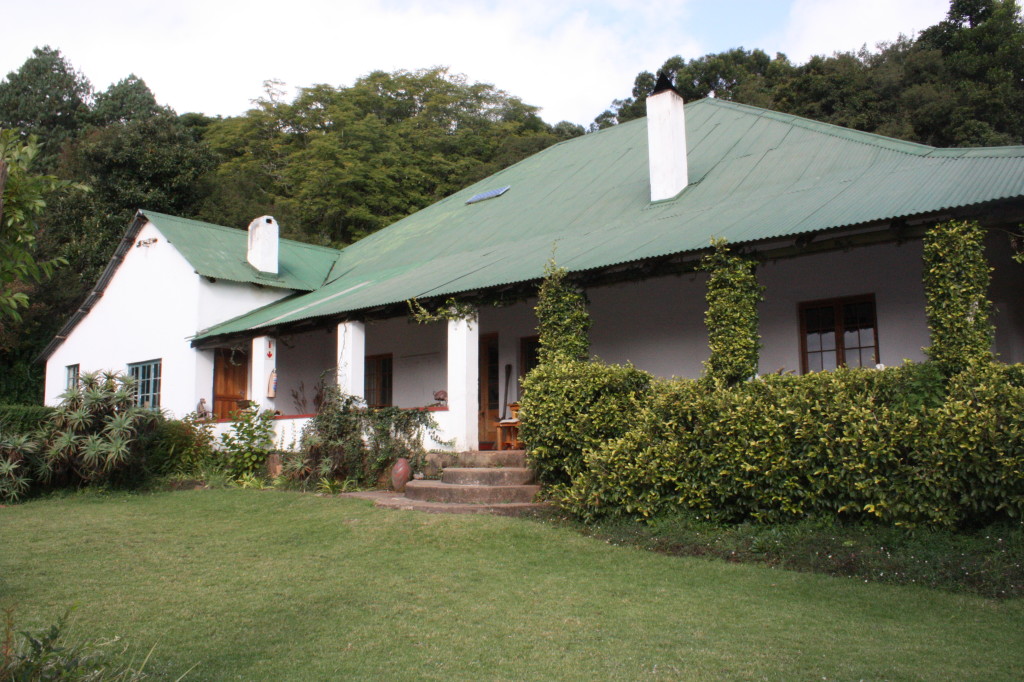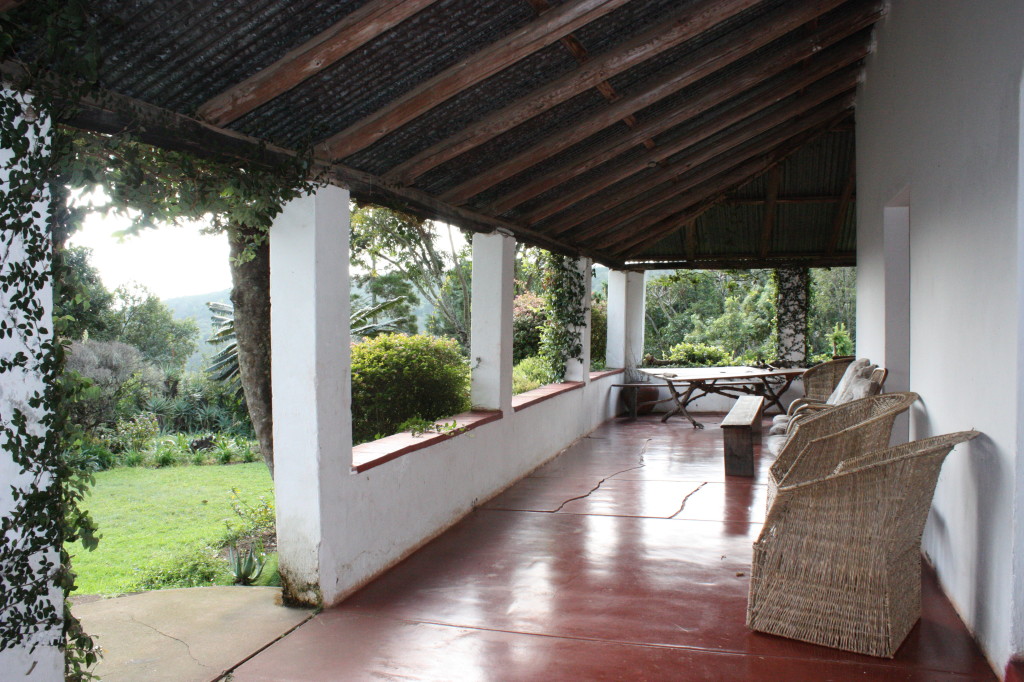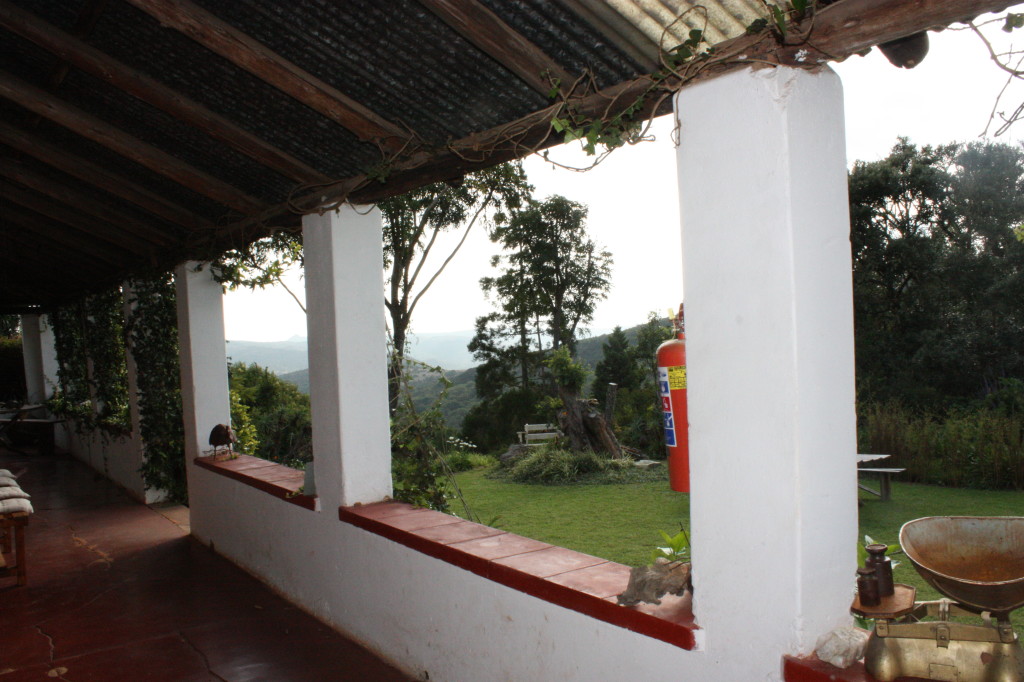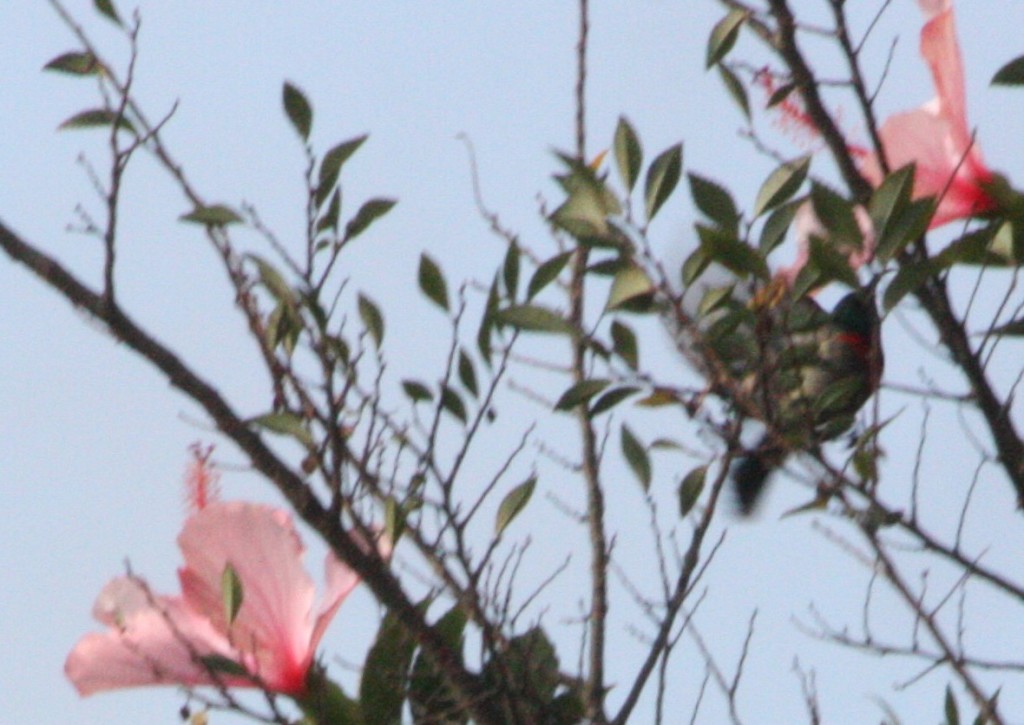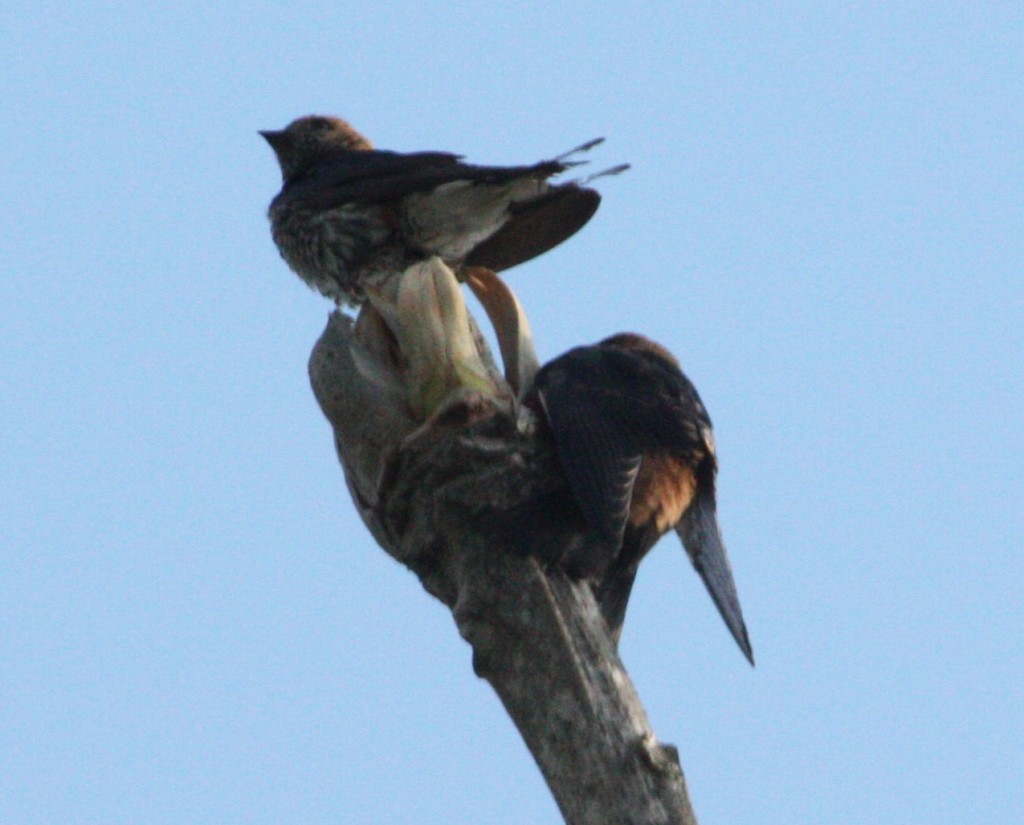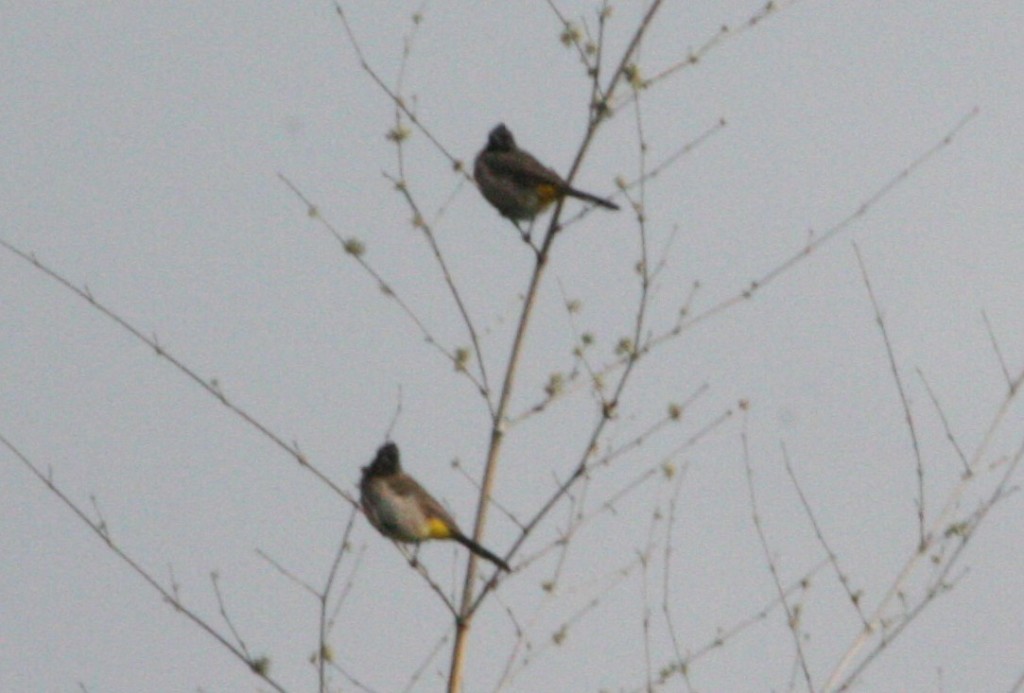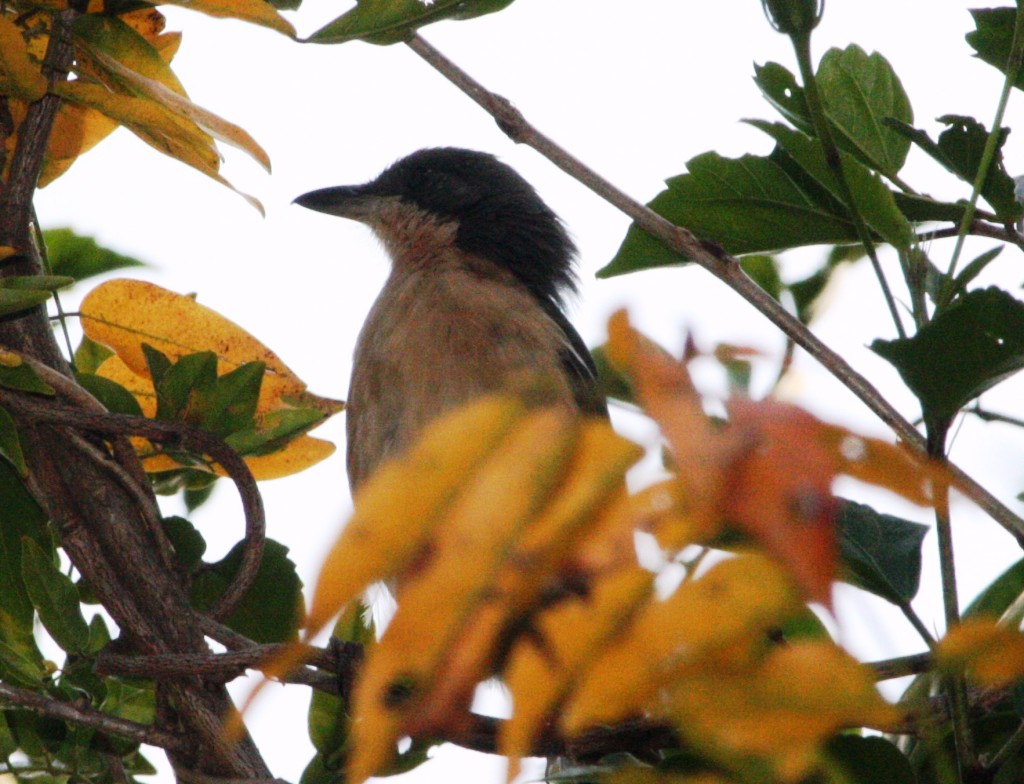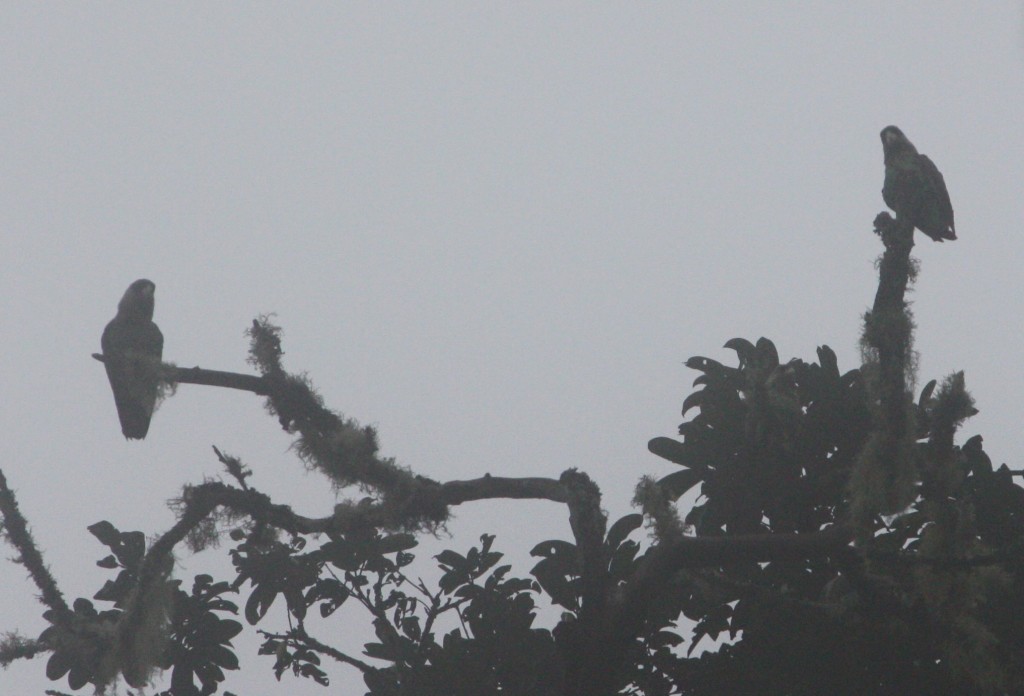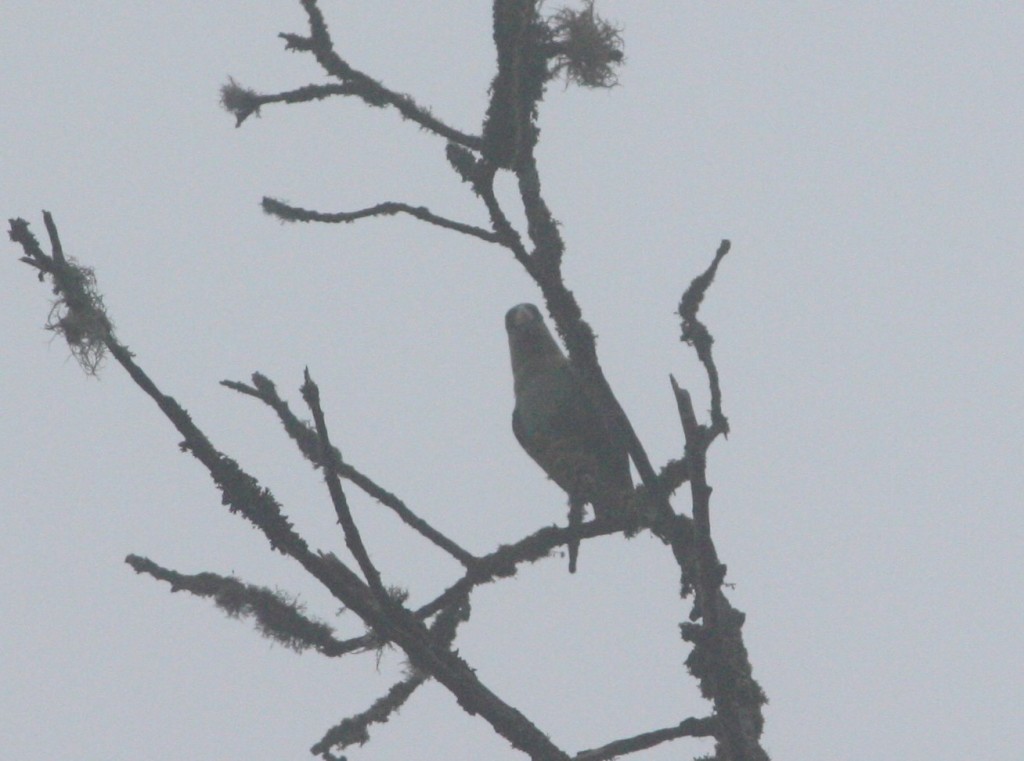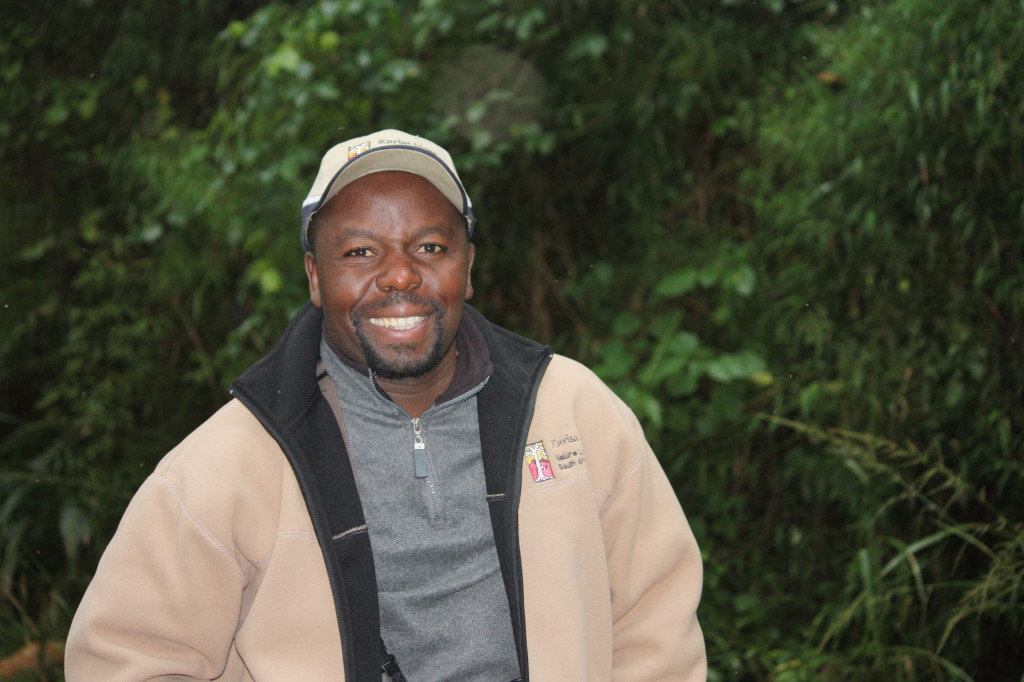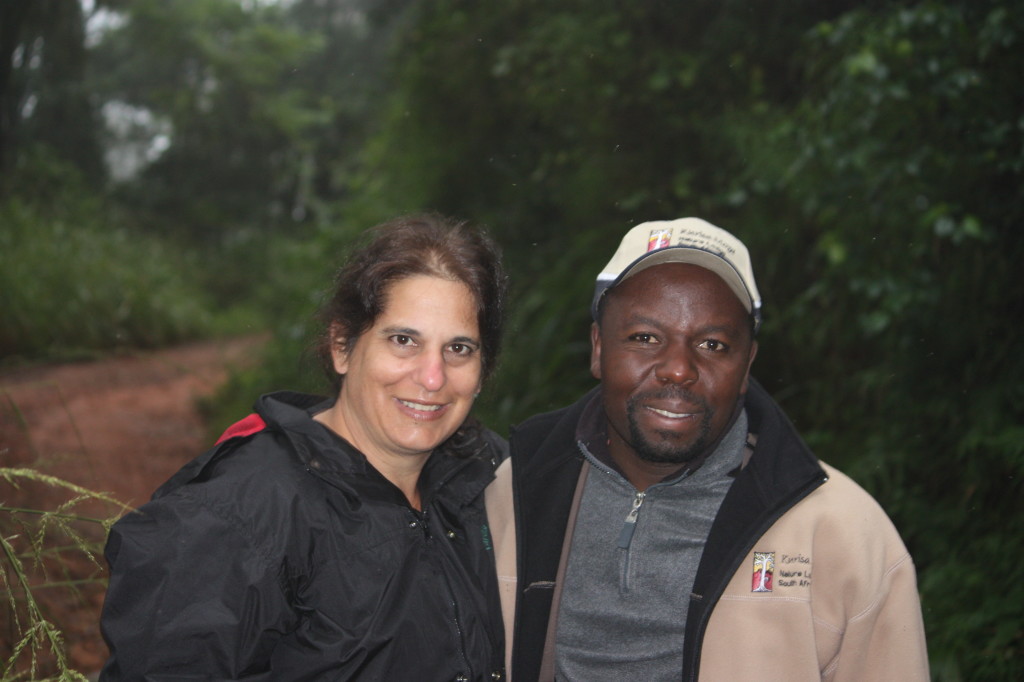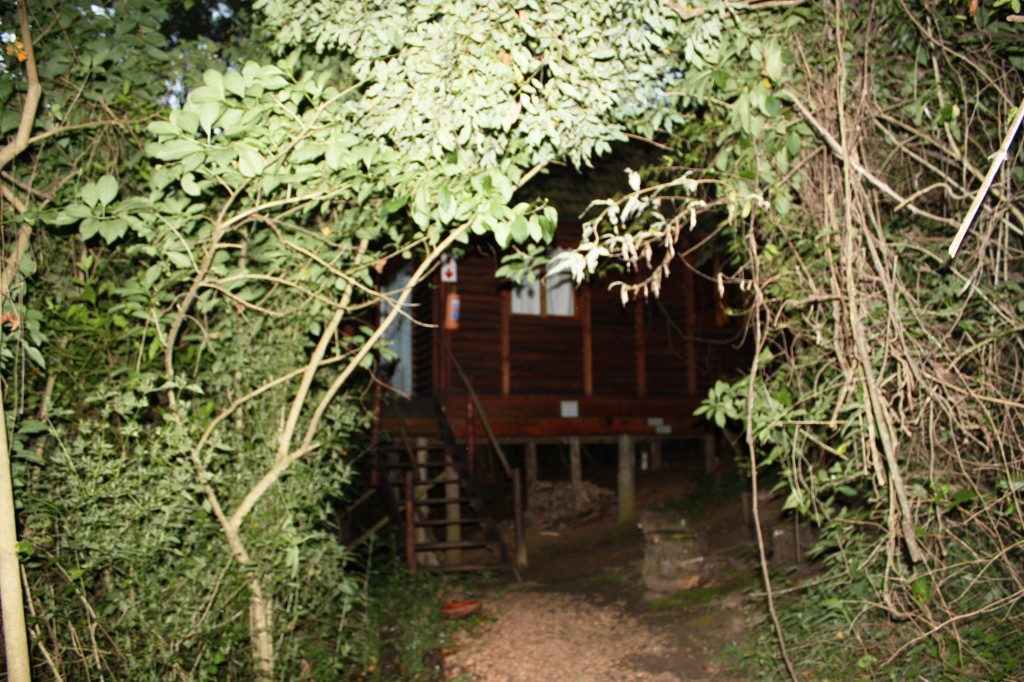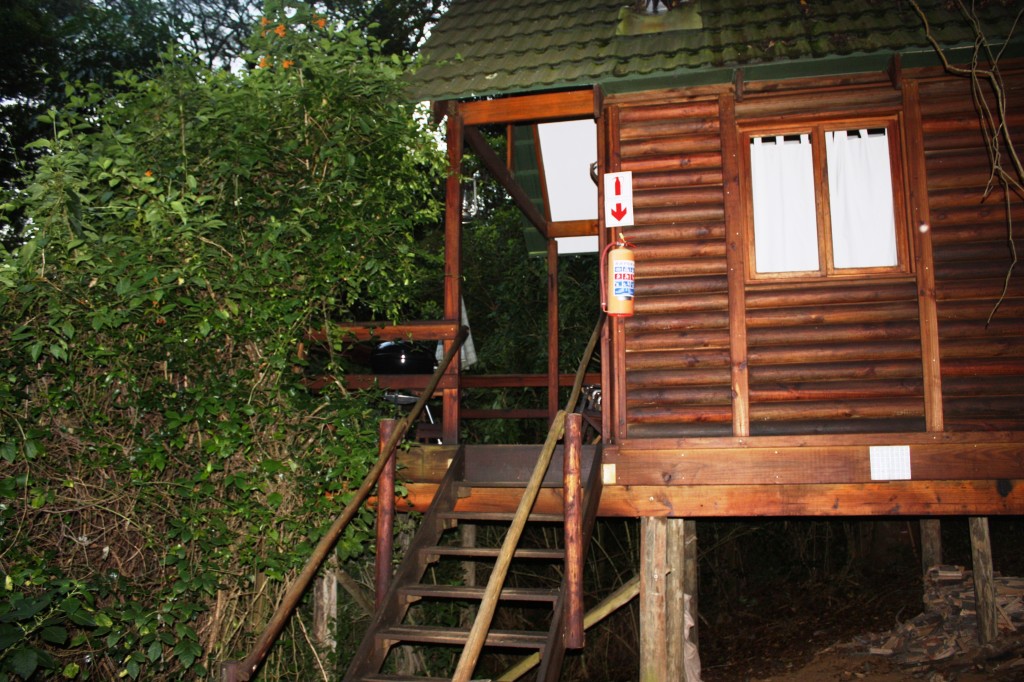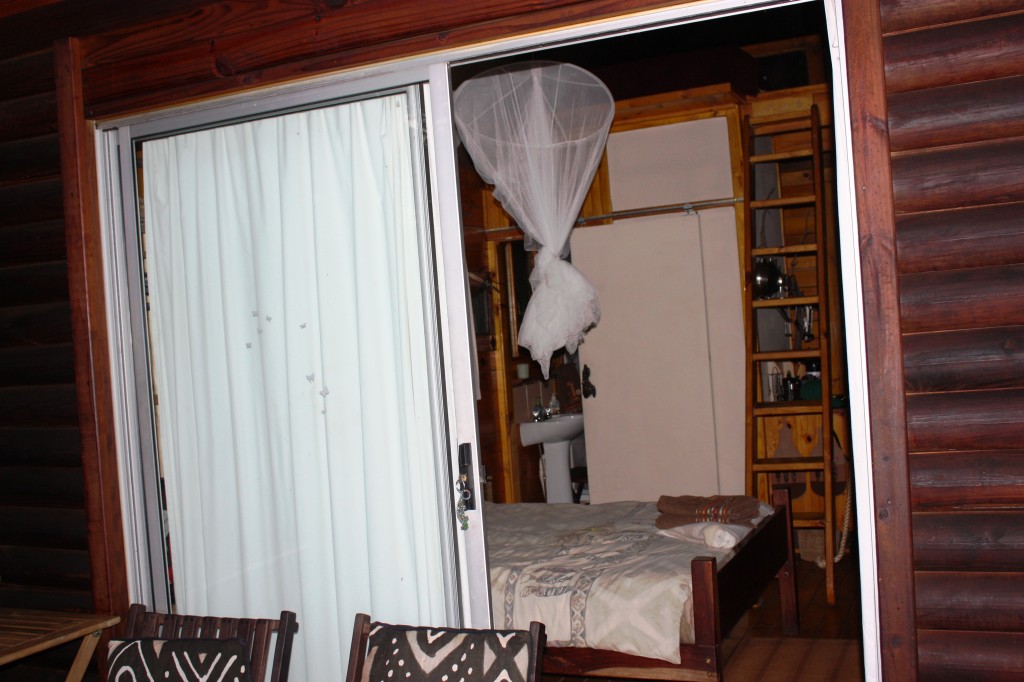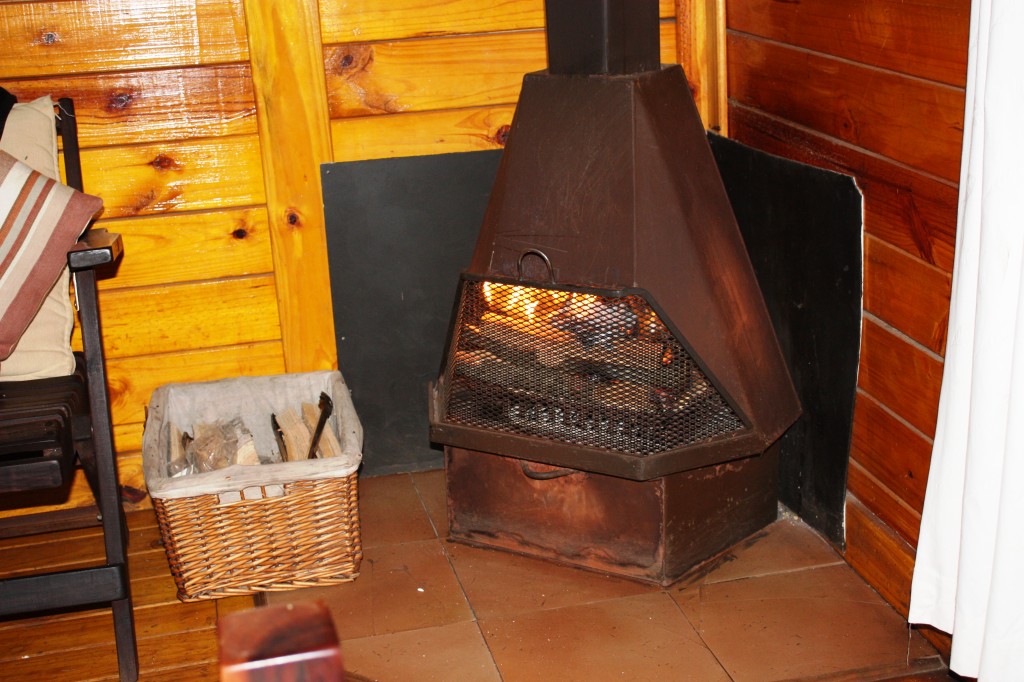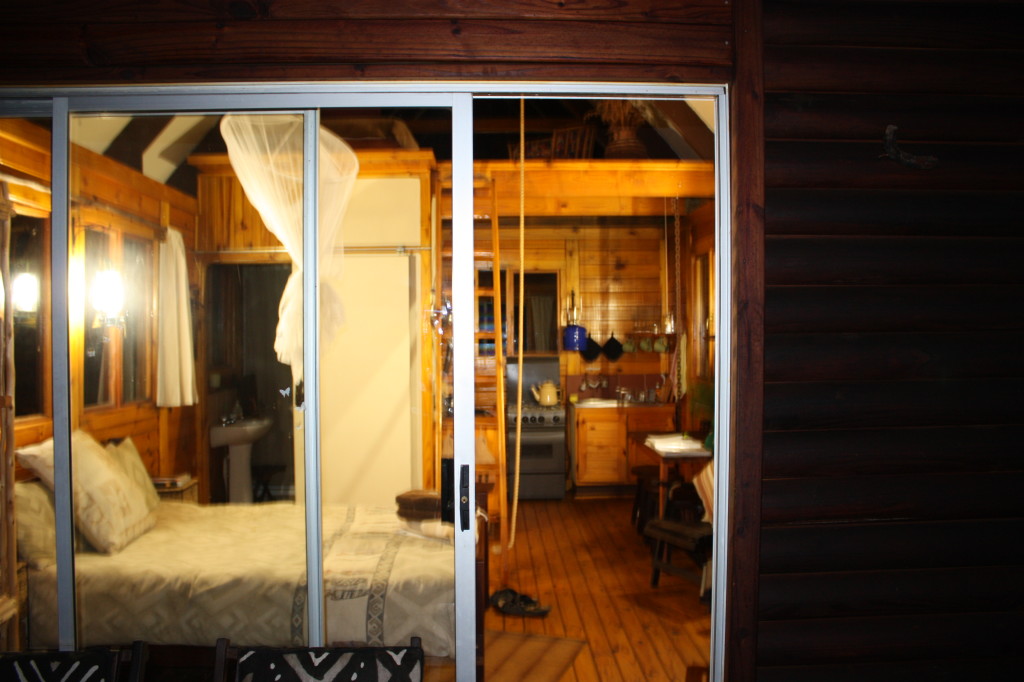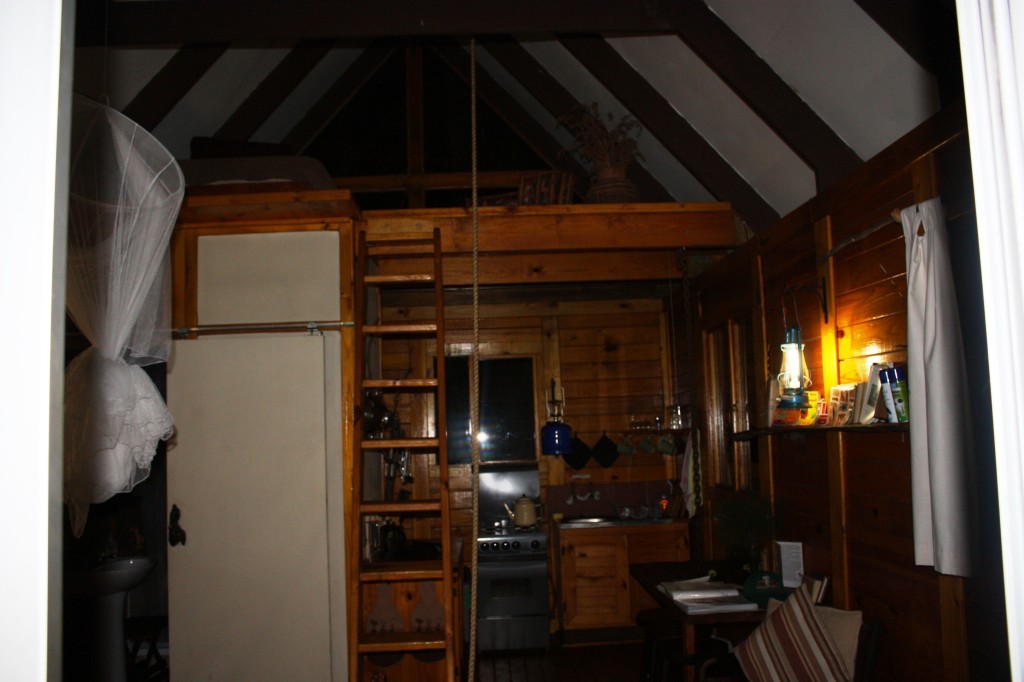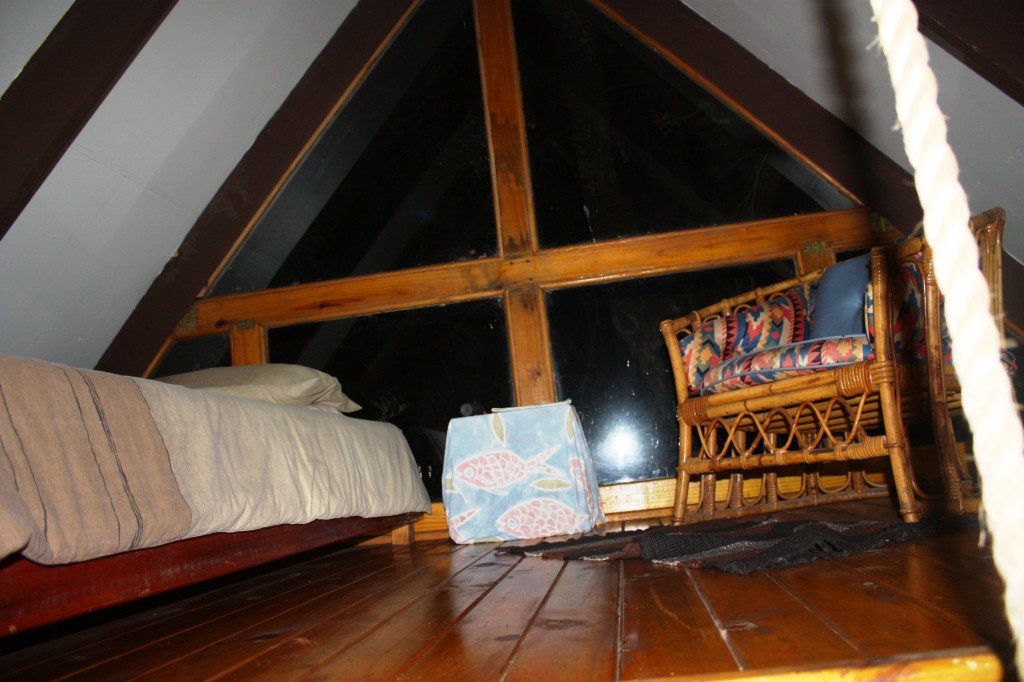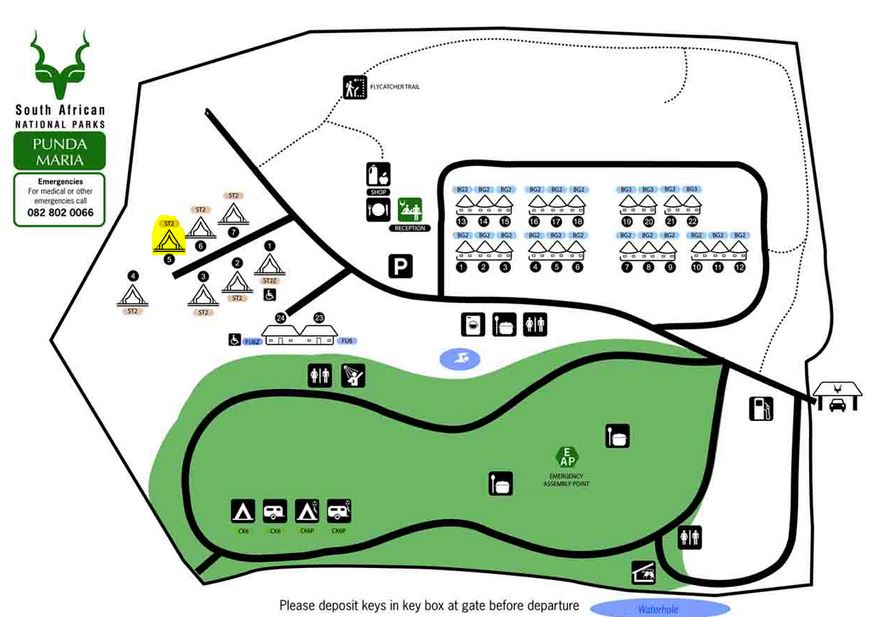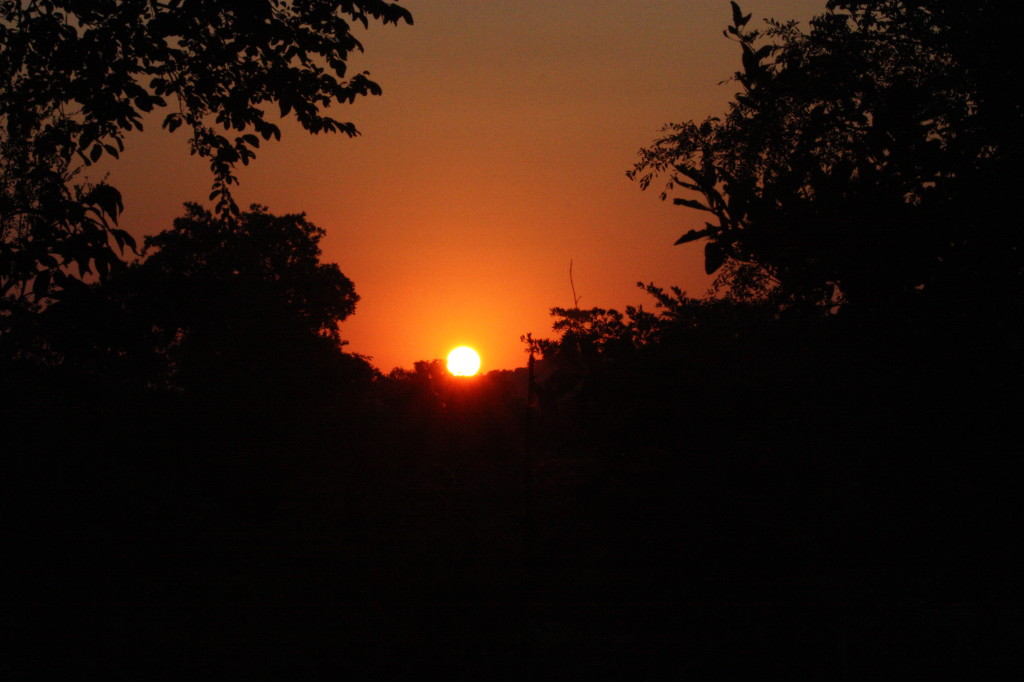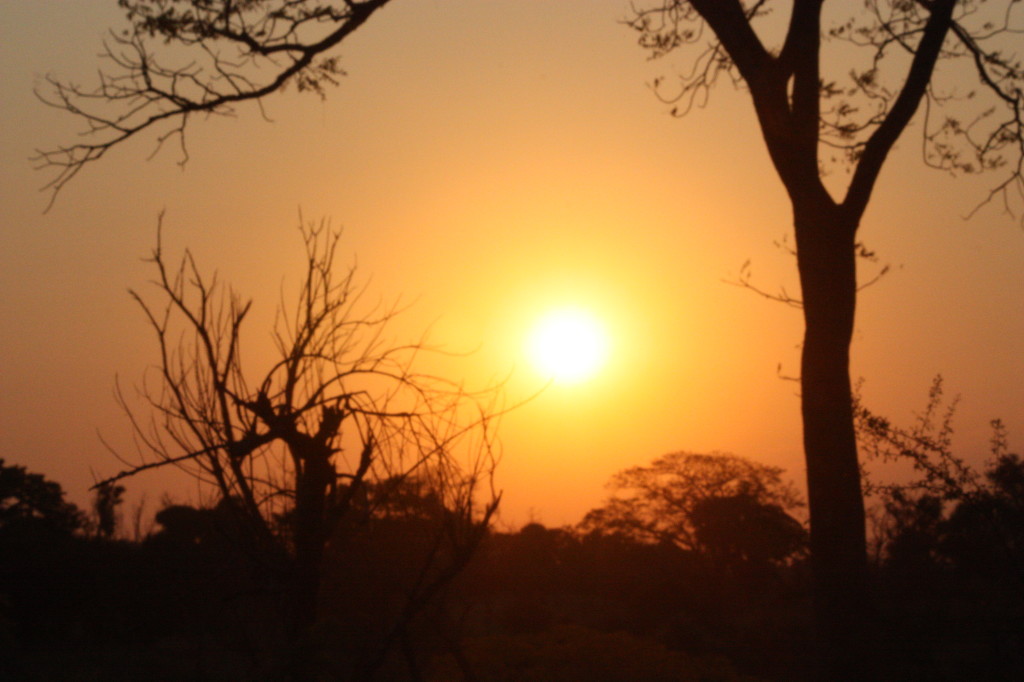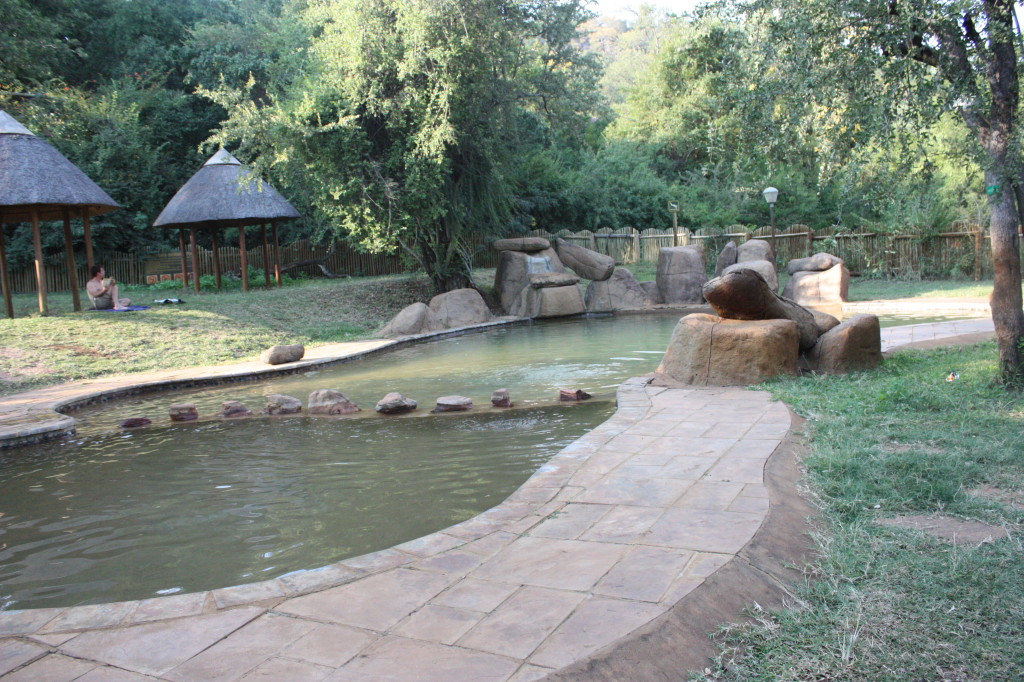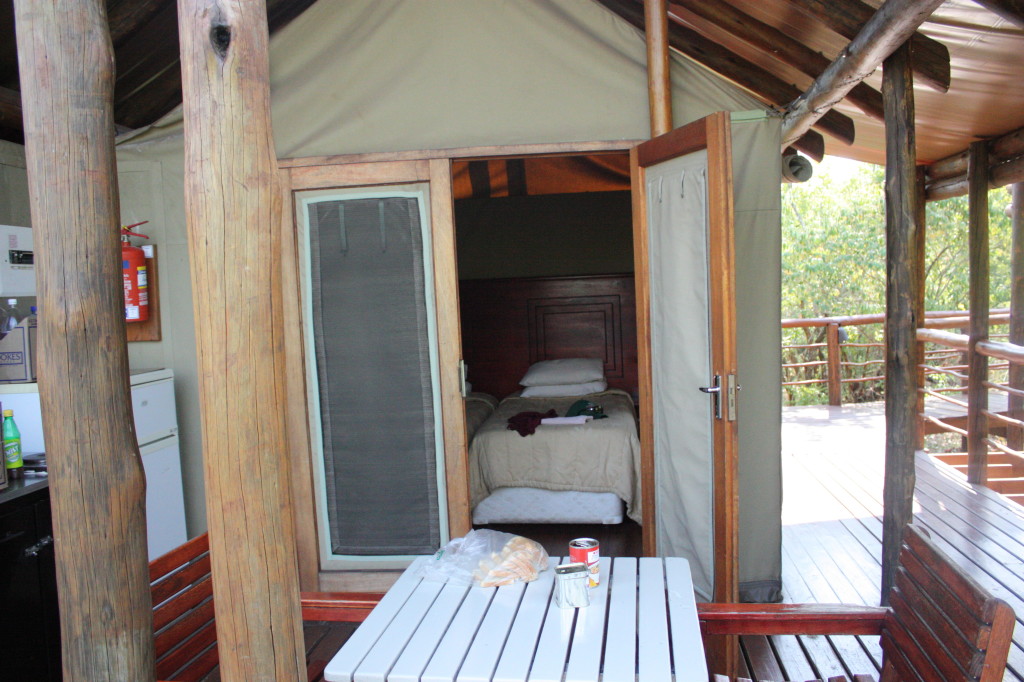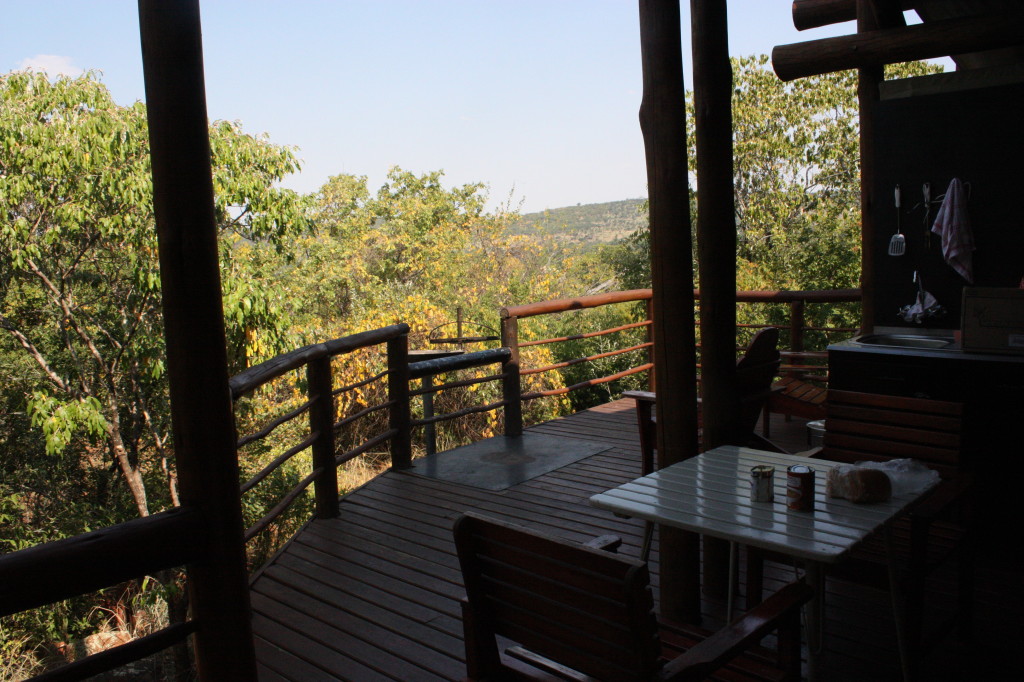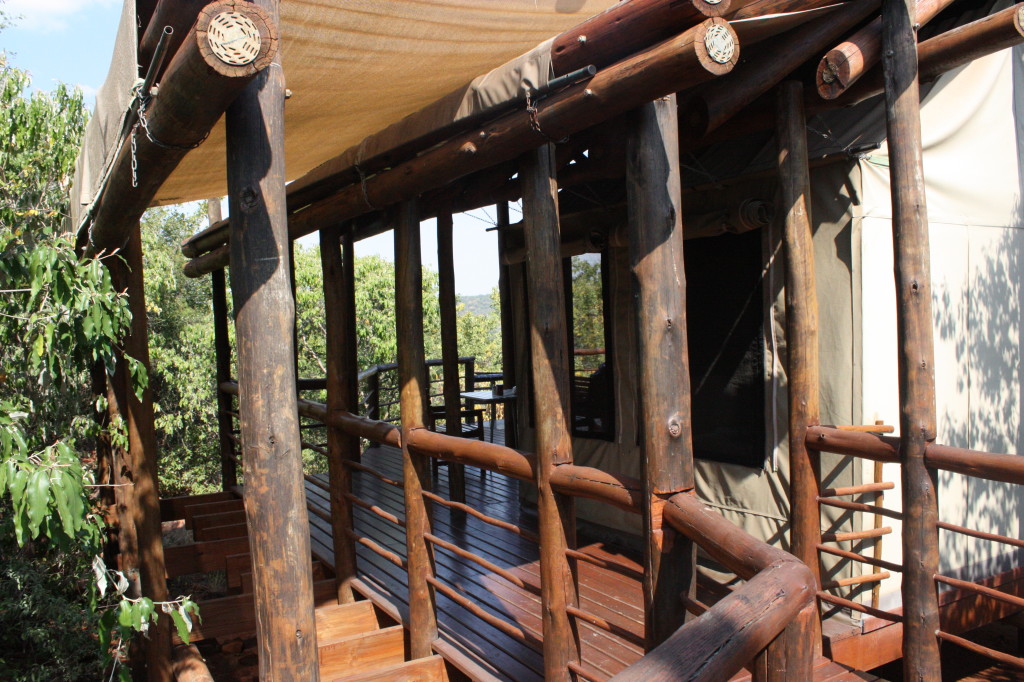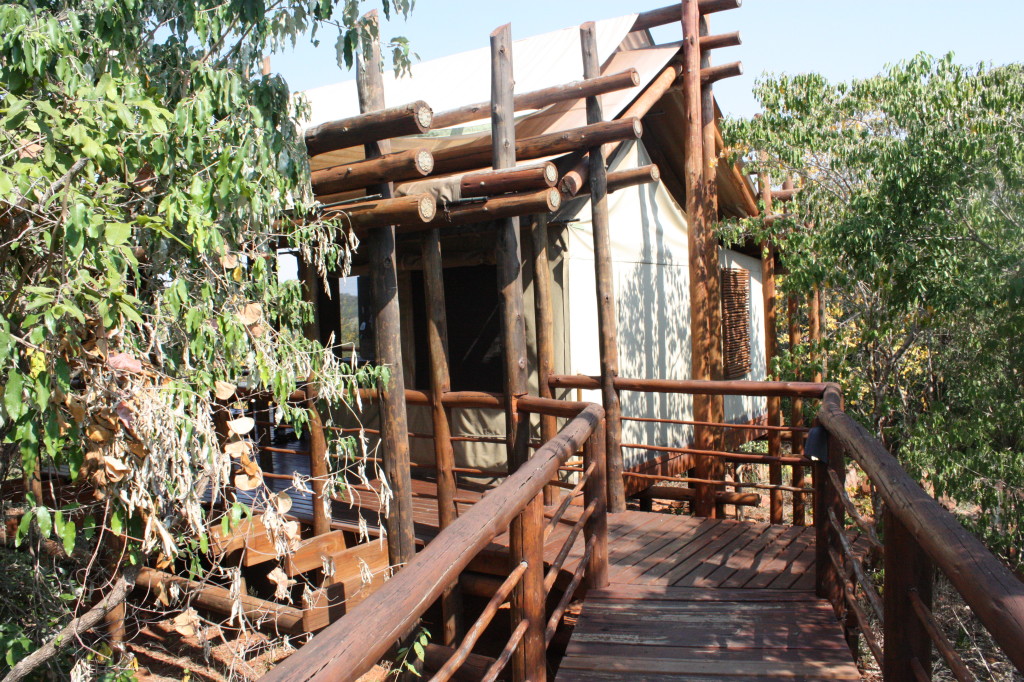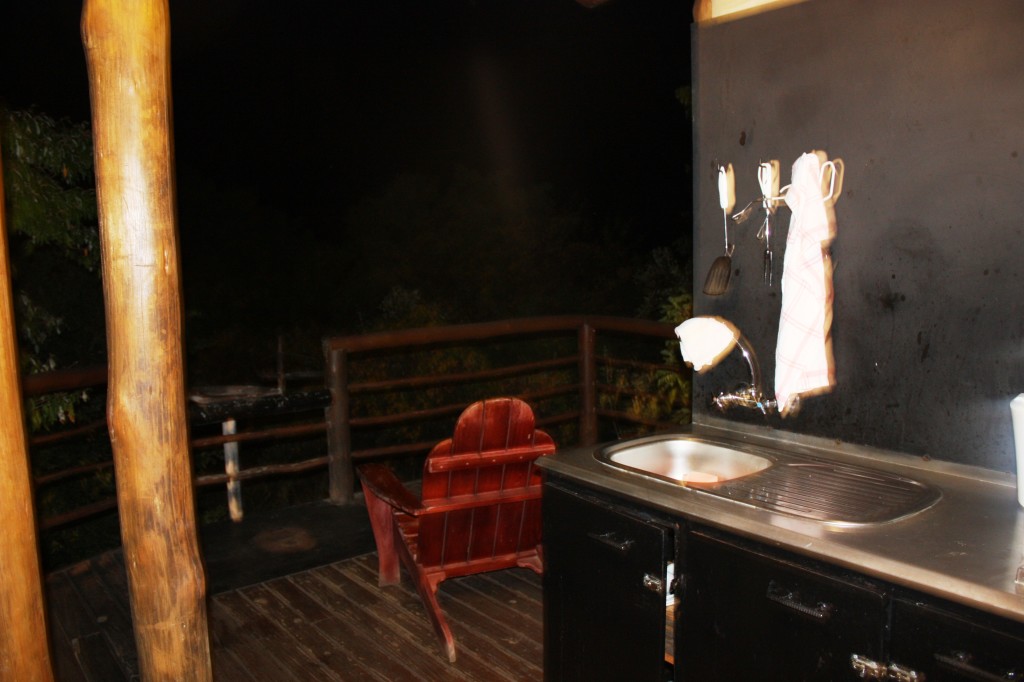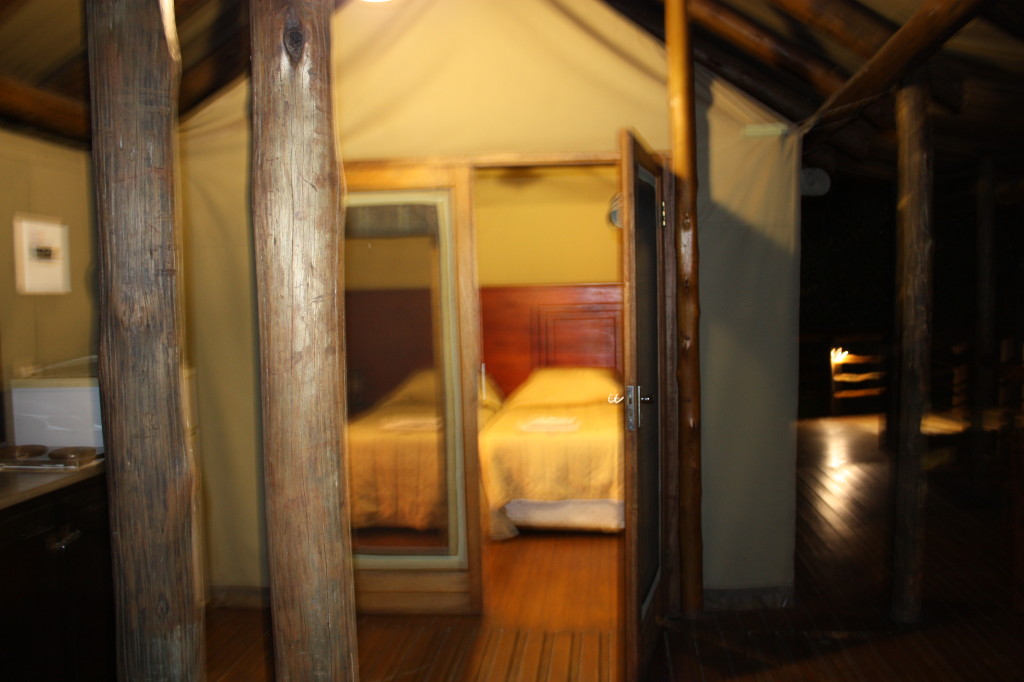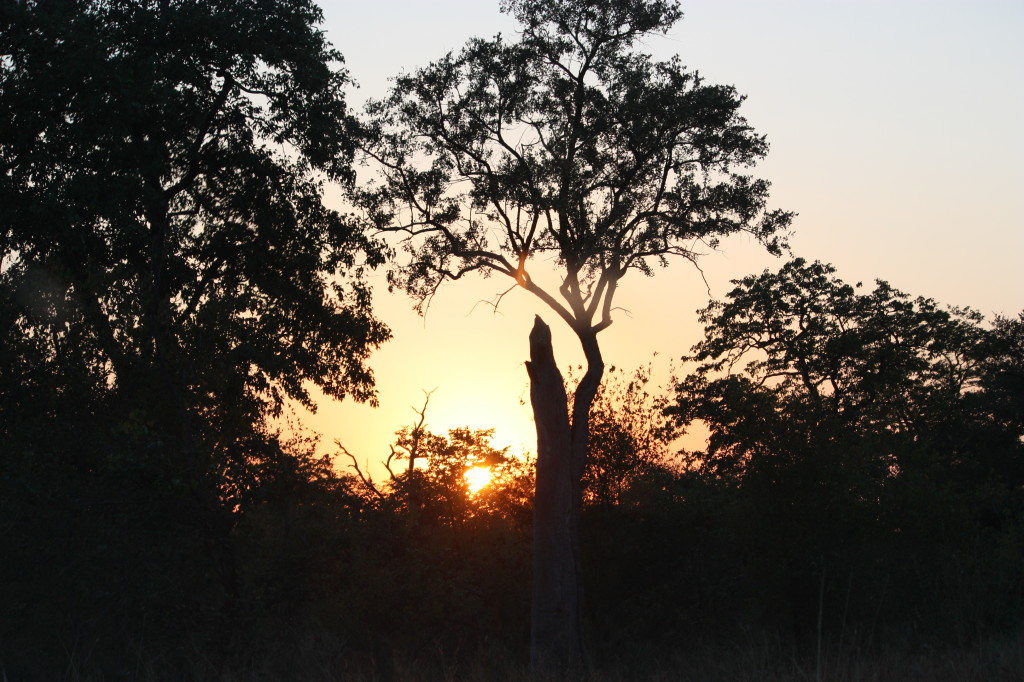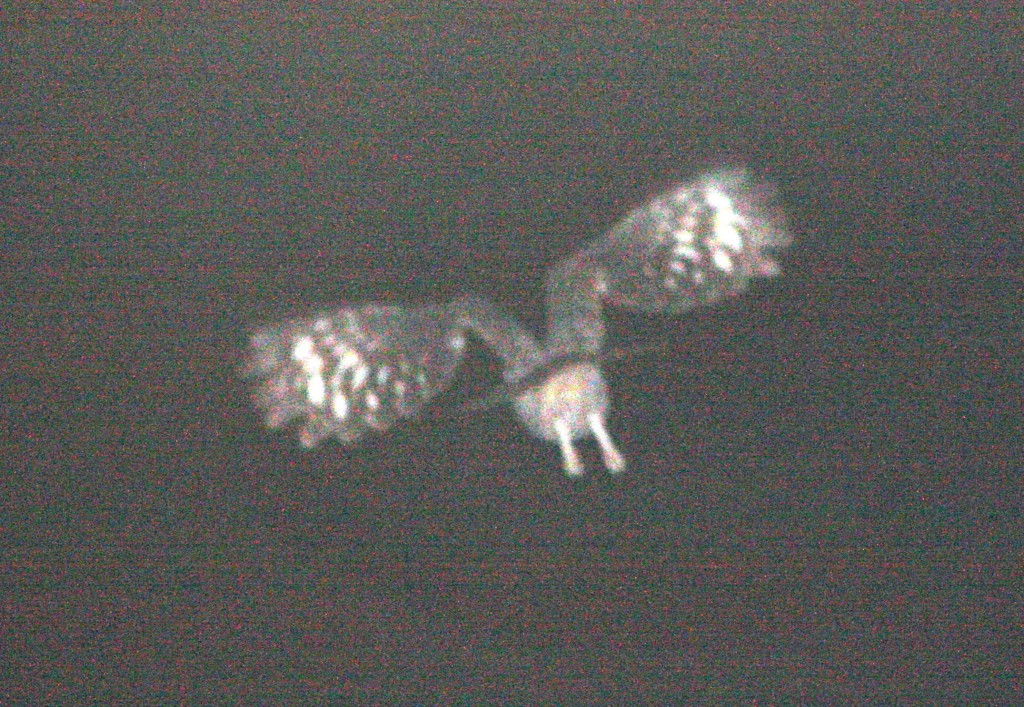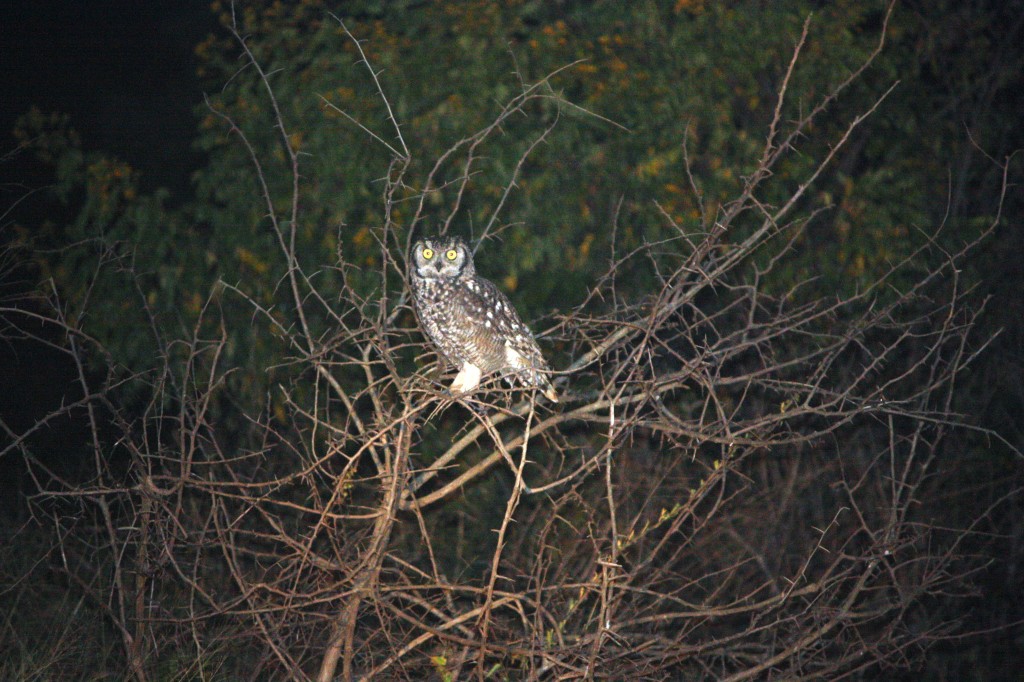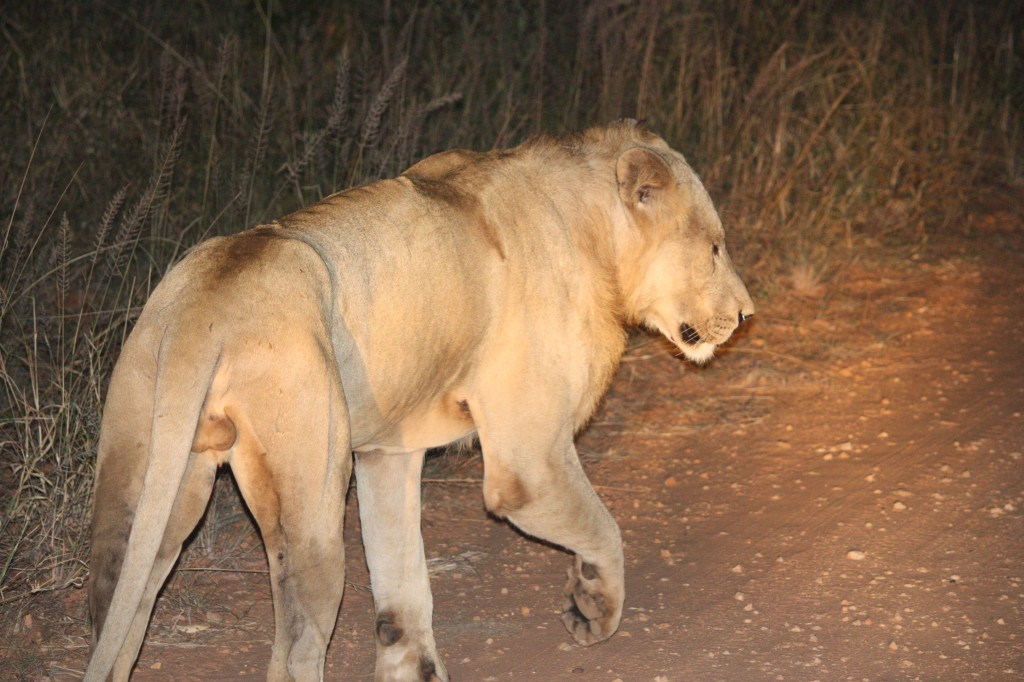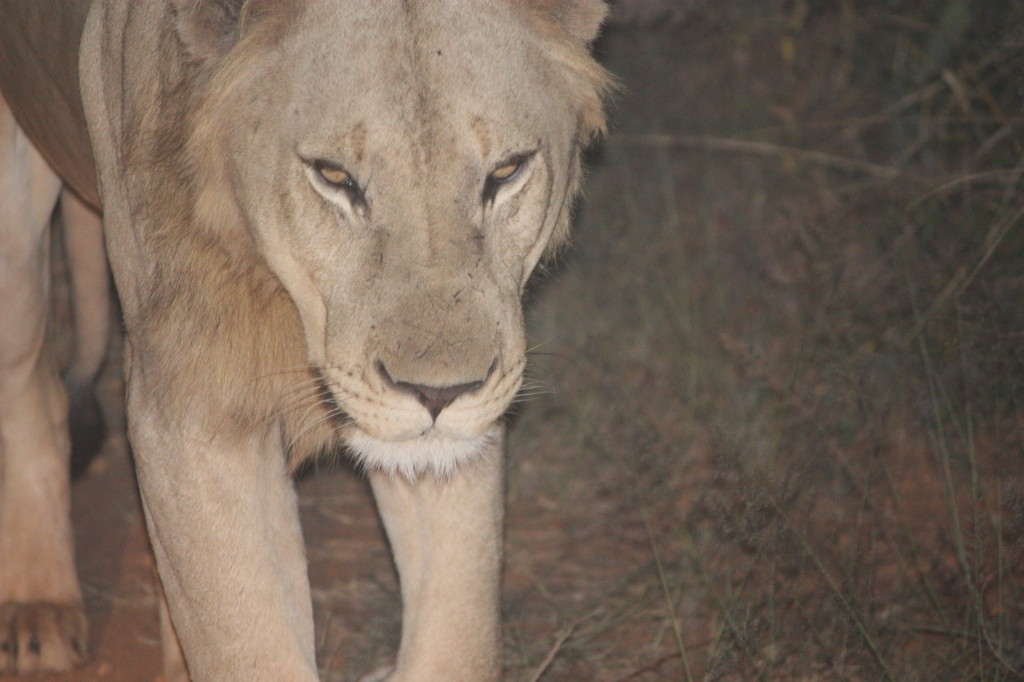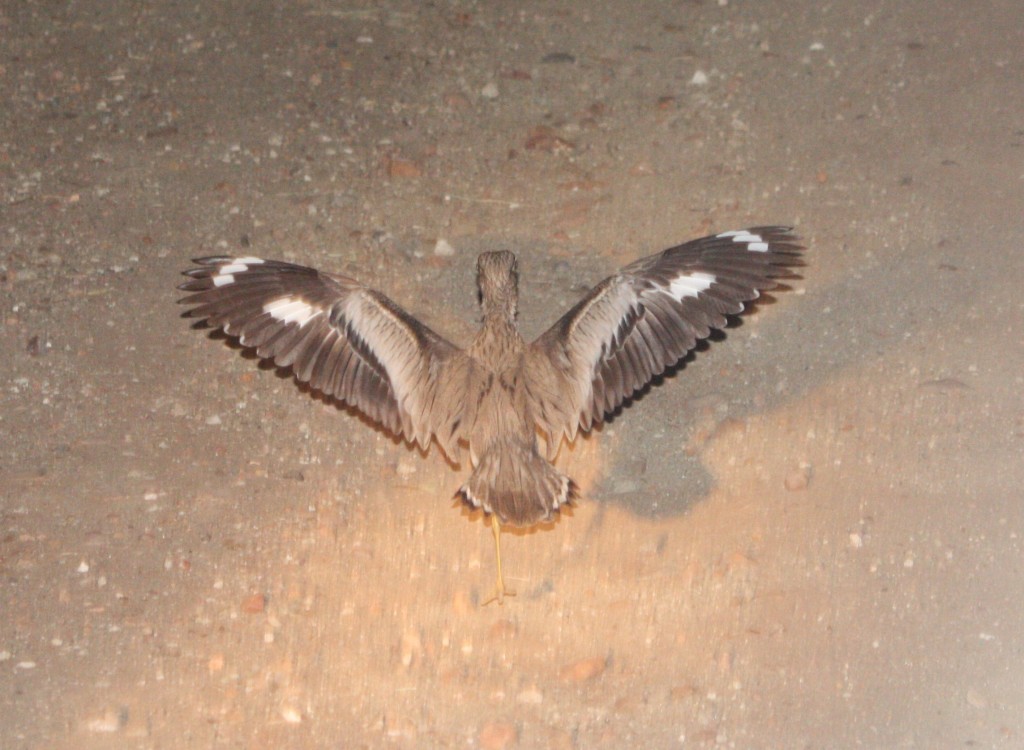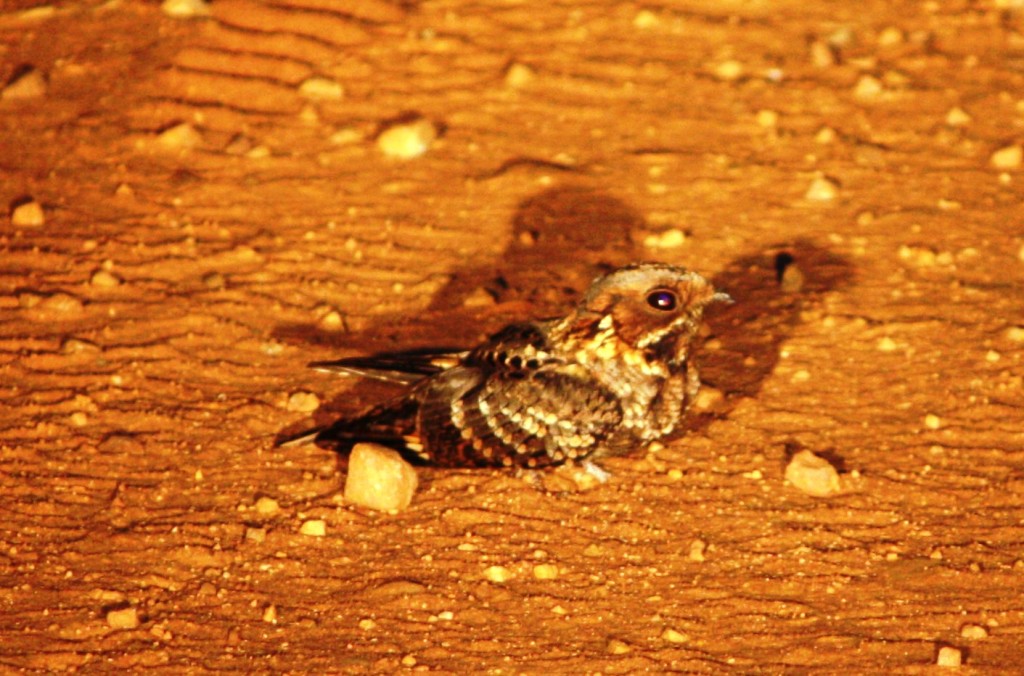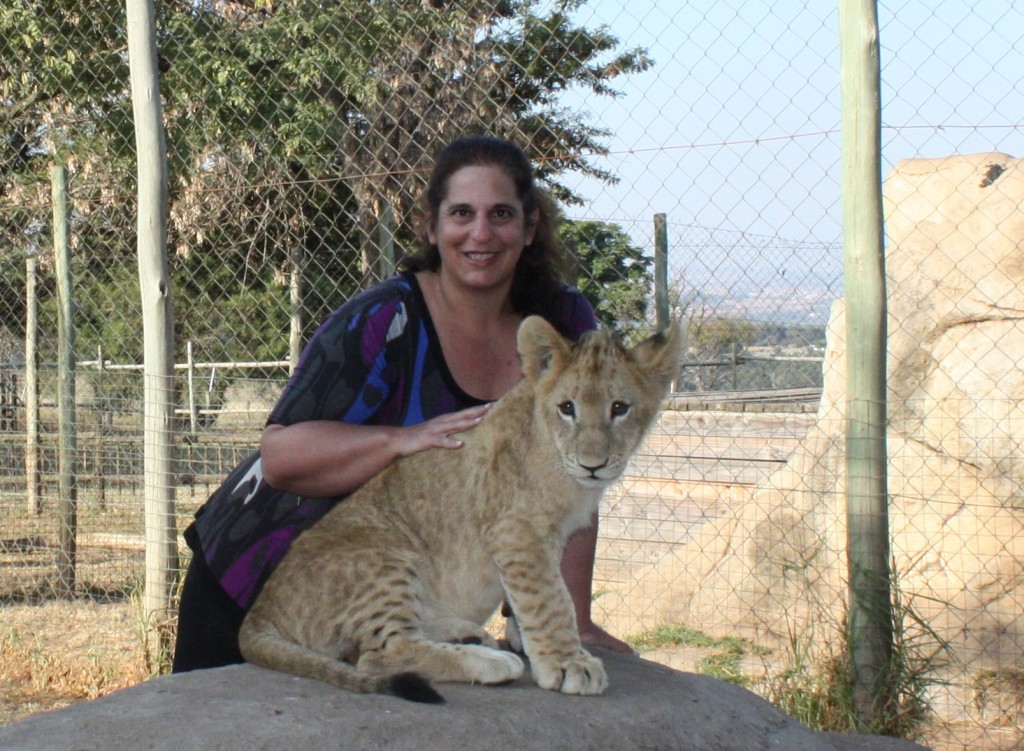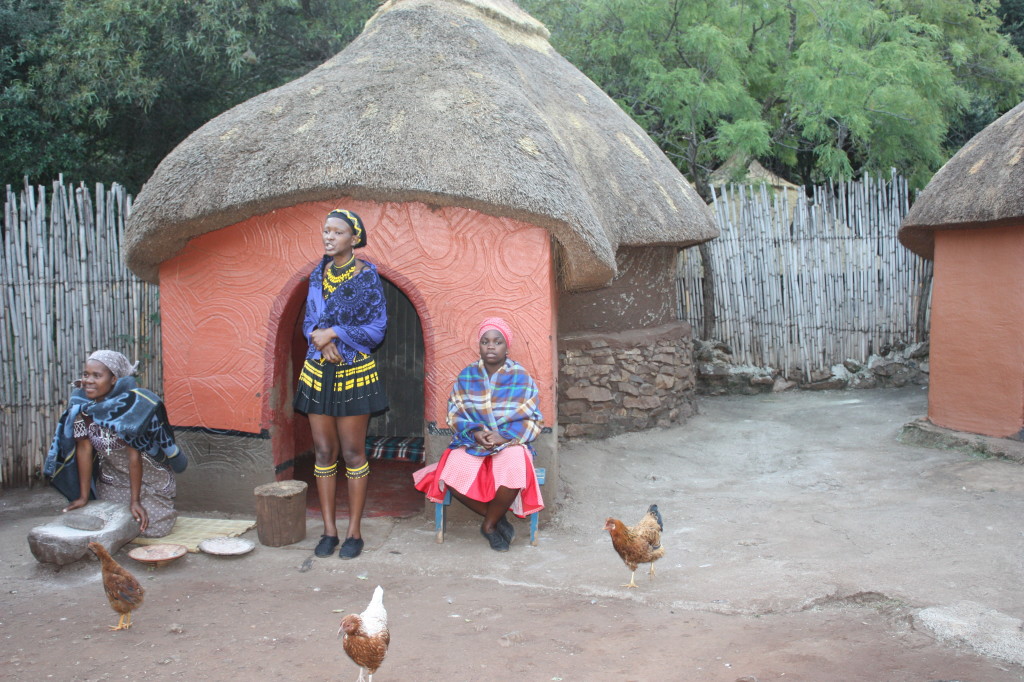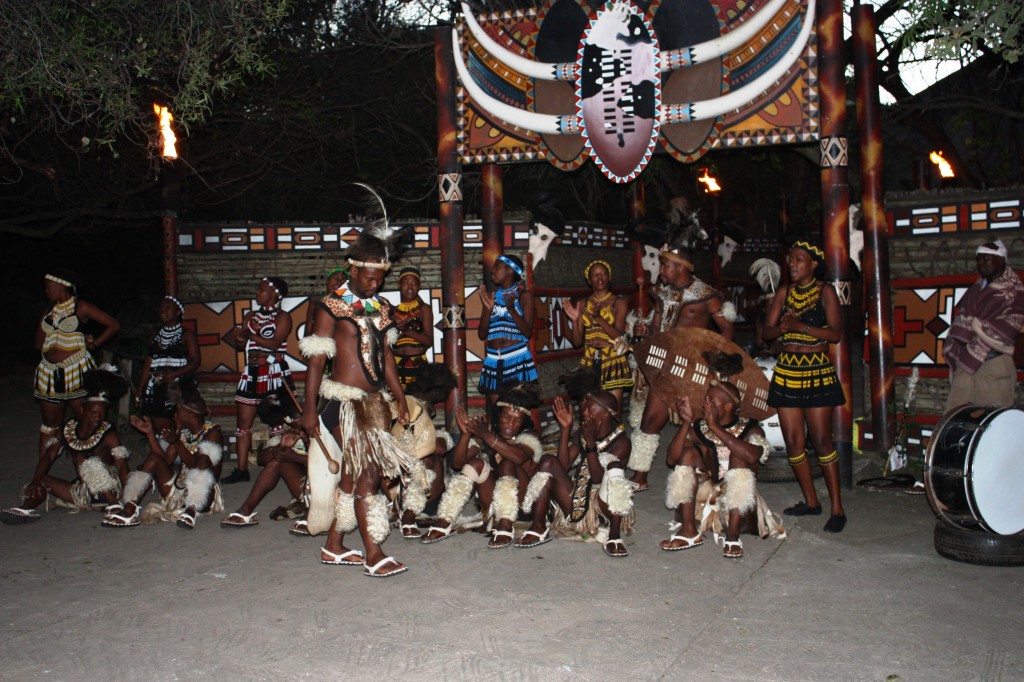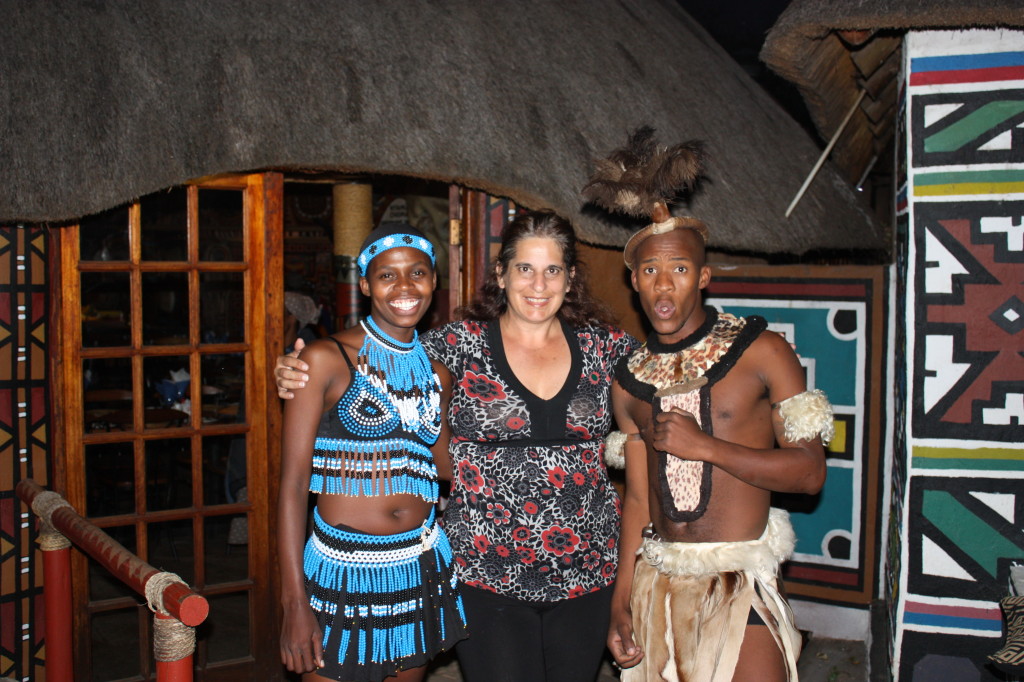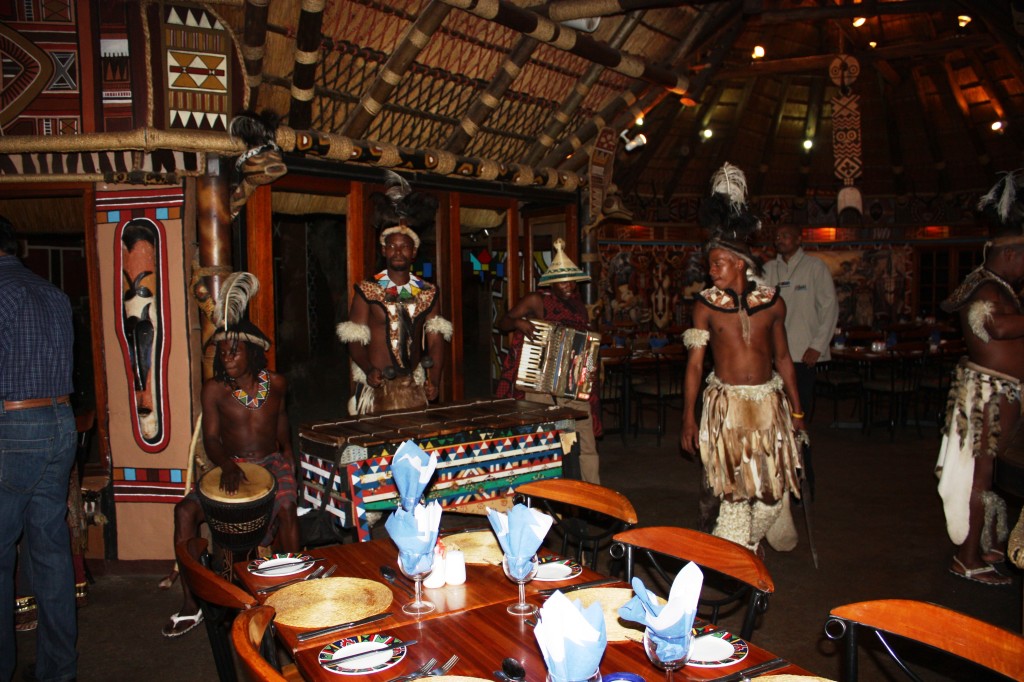BIRDS OF EDEN IS THE GARDEN ROUTE’S VERY OWN WORLD CLASS FREE FLIGHT BIRD SANCTUARY *
This is the most amazing walk-in aviary I have ever seen, I can’t even find the words to describe it! Heaven on earth doesn’t do it justice. I could have easily moved in here and pitched a tent! Hundreds of birds fly freely in this man-made rainforest environment free from predators and fear of any kind. What struck me most was how well the various species get along and I watched in amazement as turacos and conures shared fruit side by side.
The unique two hectare dome (the World’s largest) spans over a gorge of indigenous forest. The sanctuary has its own mysterious ruin, which incorporates a walk-behind waterfall. Another feature is its amphitheatre, which has the ability to seat over 200 visitors. Like Monkeyland, the popular primate sanctuary next-door, Birds of Eden boasts its own canopy walk, while shorter than the 128m bridge at Monkeyland, it hangs above the clouds. The decision to develop Birds of Eden stems from the need to create a safe environment in which to release a large collection of free-flight African birds, miniature monkeys and the sanctuary also enables bird owners to apply to release their pet birds into the sanctuary, after undergoing rehabilitation.
Birds of Eden can be reached by car from either Cape Town (long drive) or Port Elizabeth. You can get to South Africa using airline miles.
BIRDS OF EDEN FACT SHEET
1. The area of the bird park is 2,3 hectare (23,000sq meters).
2. The structure comprises 27 masts of varying heights, between 34 meters and 2 meters.
3. While the tallest mast is only 34 meters high, the highest point of the dome above the ground is
50m as the canyon breaks away.
4. The masts are linked by a series of cables which are anchored to specially constructed
underground “plugs”, there are several 100 kilometres of cable used to create a grid of cable onto which, the bird mesh will rest.
5. The bird mesh has an area of 3,2 hectares and weighs 80 tonnes.
6 The sanctuary is the biggest single free flight aviary in the World.
7. Birds of Eden opened the 15th of December 2005 and can be contacted on info@birdsofeden.co.za
8. There are several special features about Birds of Eden;
• There is a walk behind waterfall
• The birds are in free flight – there are no cages.
• There is an amphitheatre, which can seat 200 people.
• The sanctuary is wheelchair friendly.
• There are 1,2kms of walkways of which 900m is elevated.
• 70% of the area of the dome encapsulates pristine indigenous forest.
• The main dam is bustling with koi fish.
• Birds of Eden incorporates several dams, the largest has an island lunch-deck with plenty of seating – light meals are served here.
• The snack bar and restaurant in Birds of Eden are both outsourced and comprises of 4 options for seating,
1) in the forest at the snack bar,
2) outside the forest near the snack bar
3) On the lunch-deck at the main dam
4) on the bank of the main dam.
• There are approximately 3,000 birds in the aviary, comprising over 220 species, note that these numbers increase constantly.
• The masts is made of wire mesh. It is painted green for a more natural ‘look’. 10 tons of paint (10,000 litres) was required to complete this paint job.
• The river running over the waterfall and through the length of the bird park (200m) is pumped back in a closed system. There is therefore no pollution of any water sources in the sanctuary.
For more information about Birds of Eden and details on how to get there, please visit their website.
* Originally published on our parent website Feathered And Free.
Join me on a wander through the magnificent Birds of Eden and enjoy my photos of these wonderful birds!
Do plan on having a meal here but don’t be surprised if the birds invite themselves to your lunch! It’s all part of the fun!

